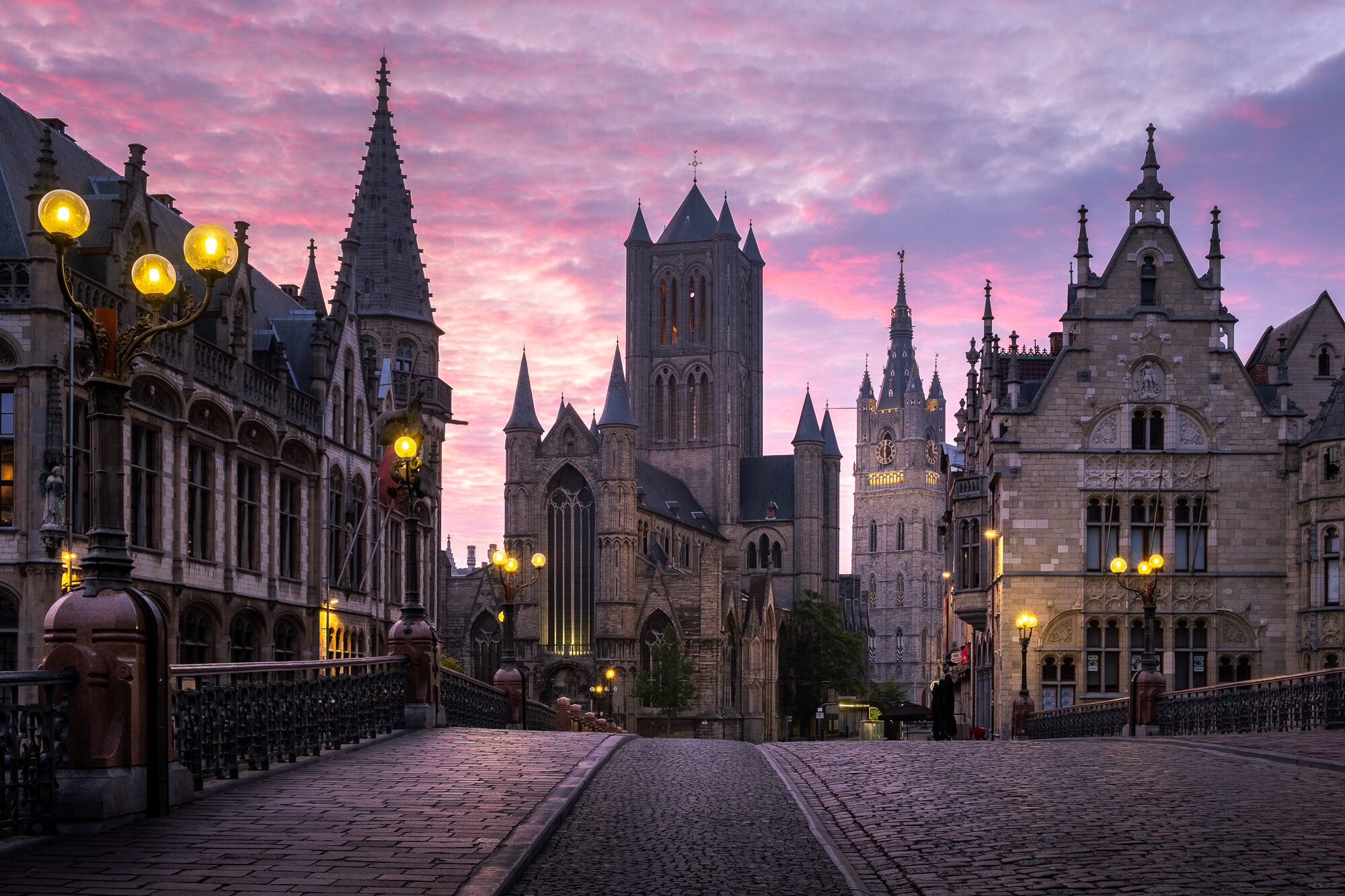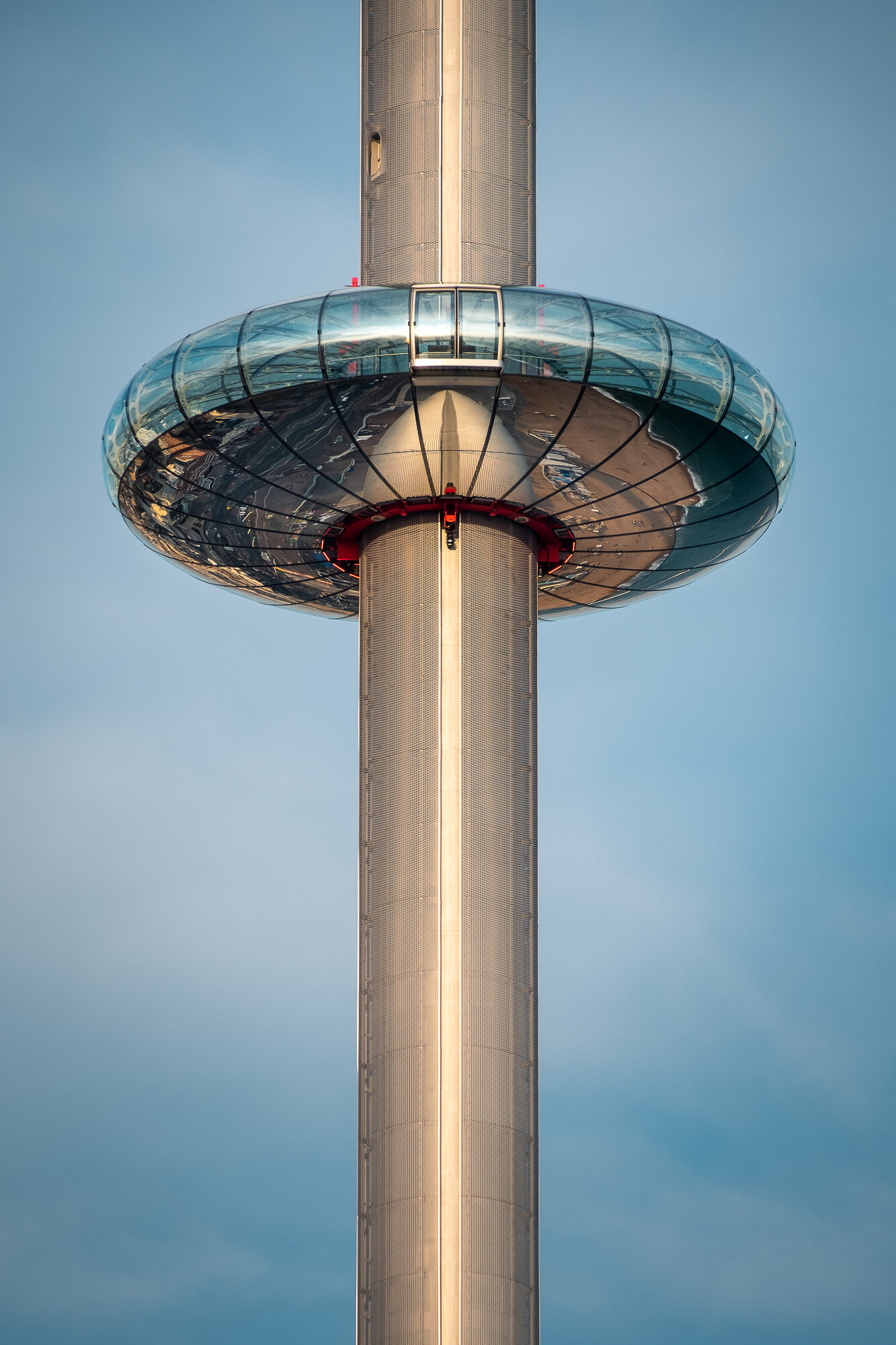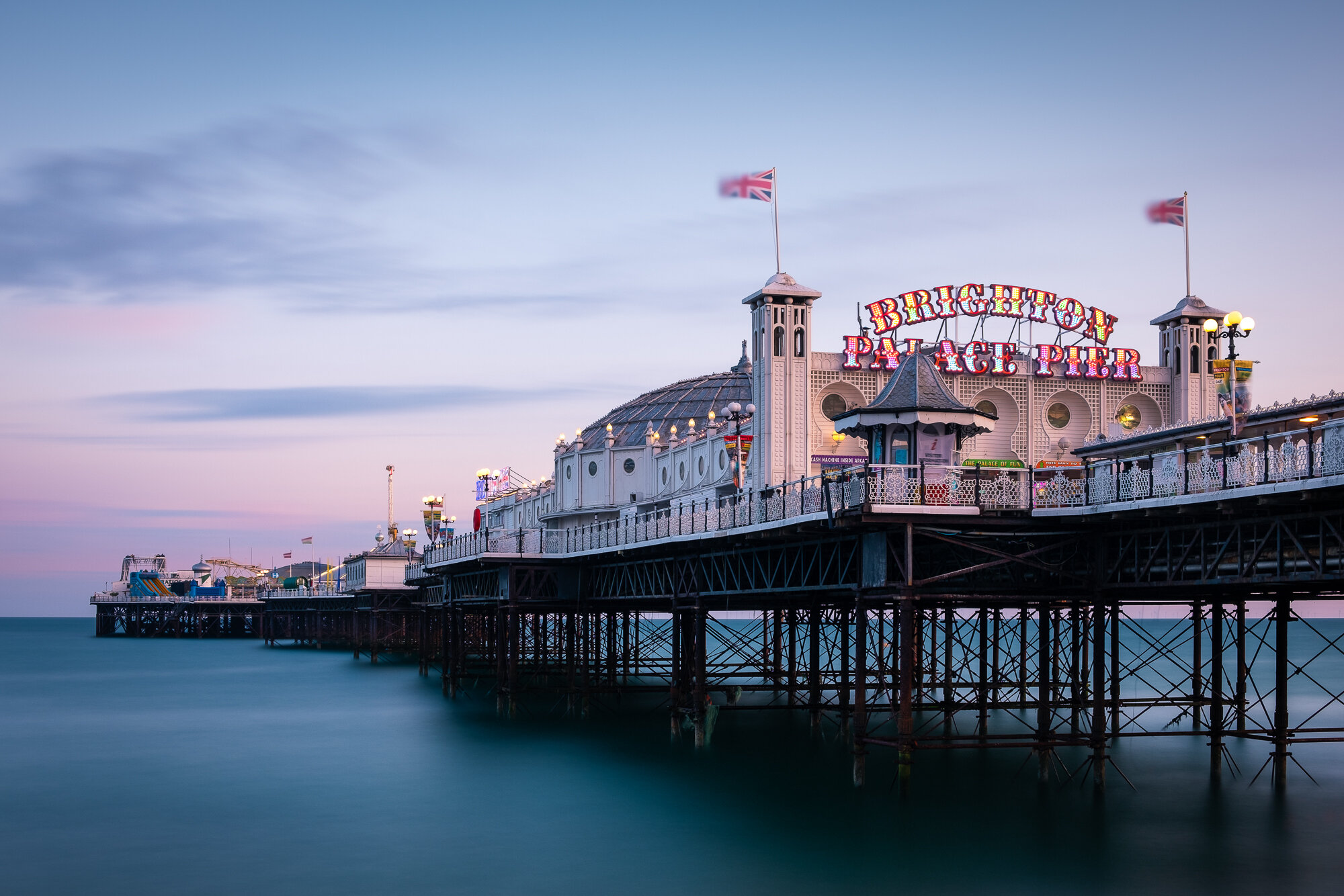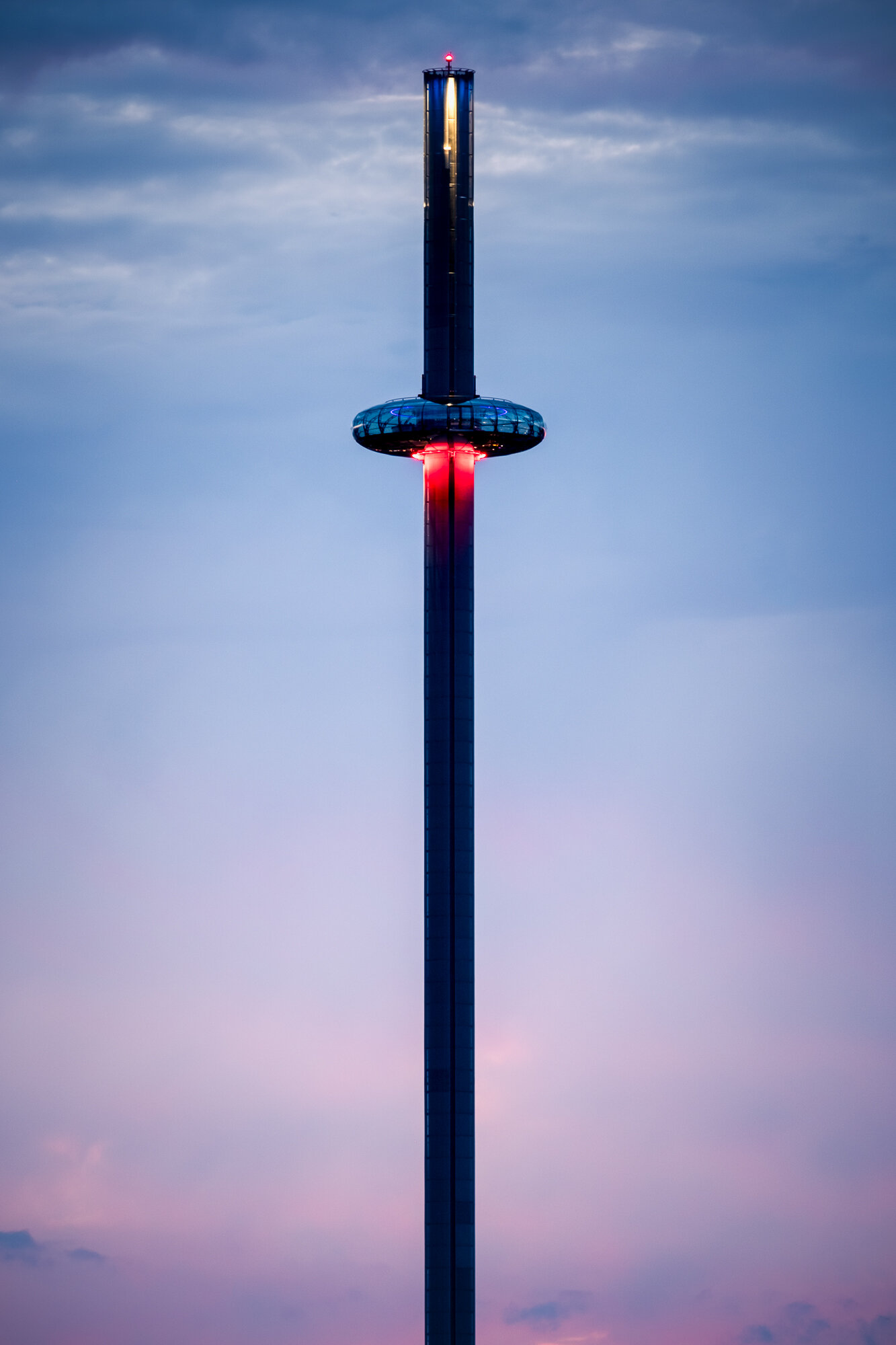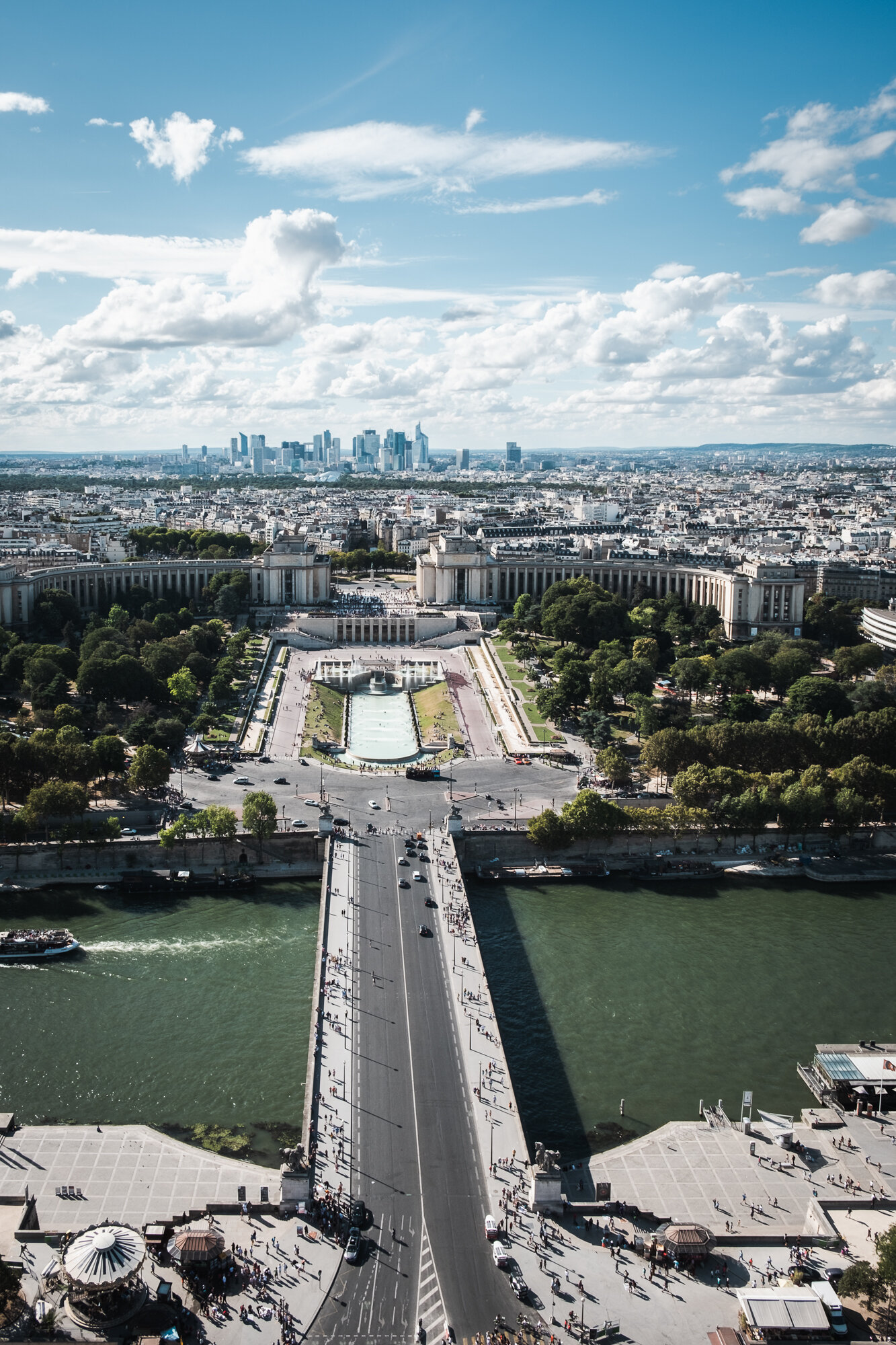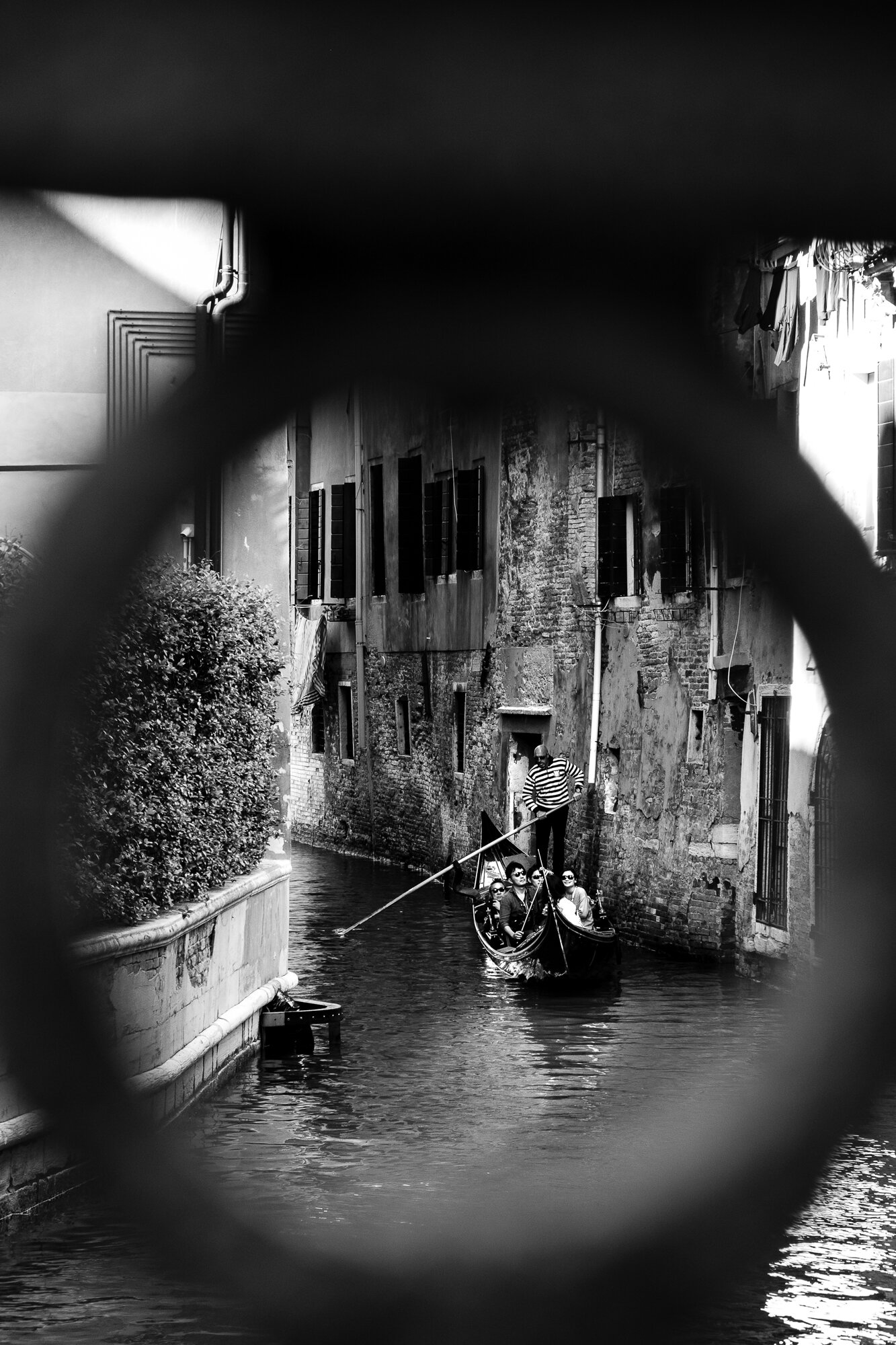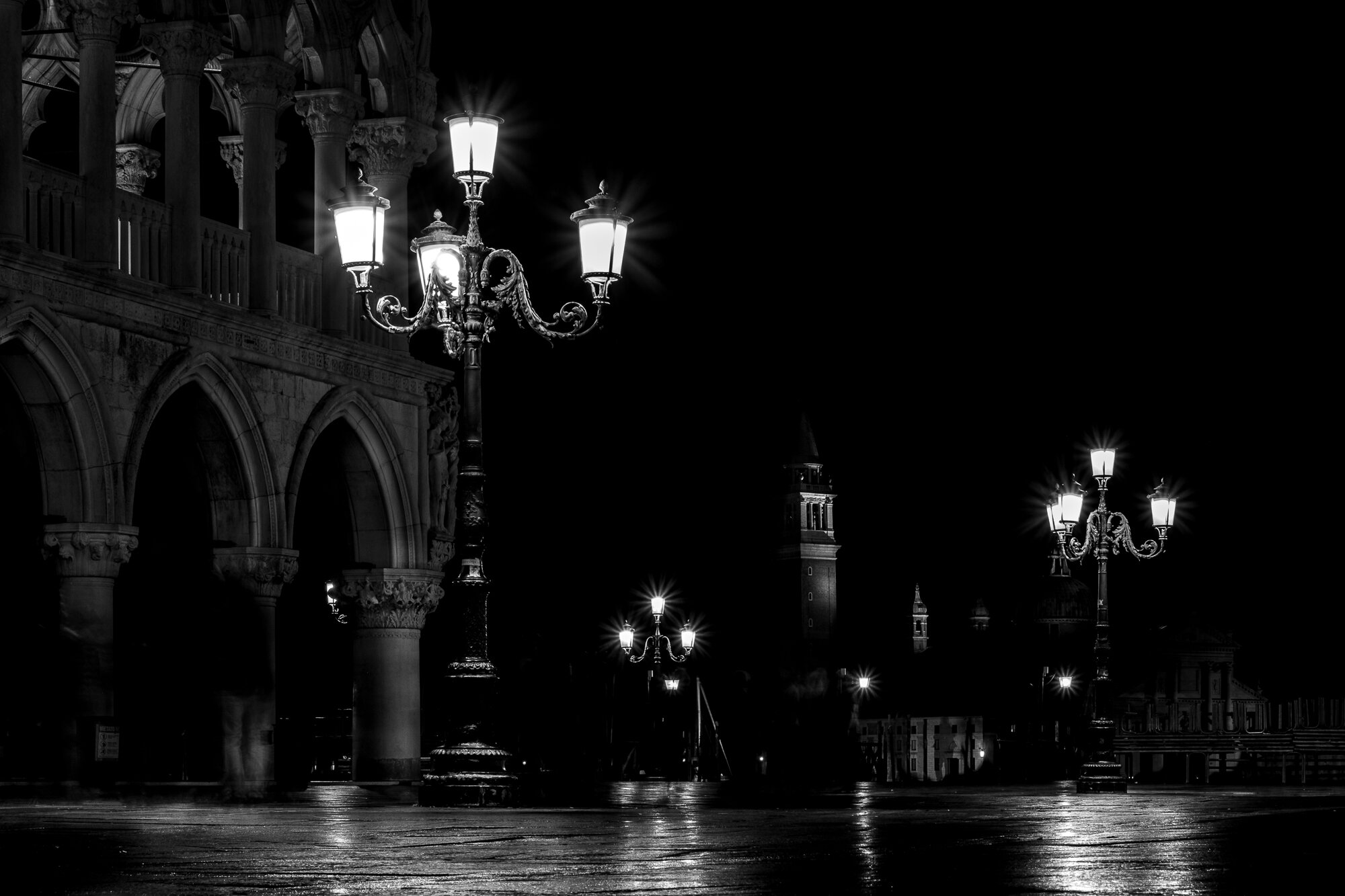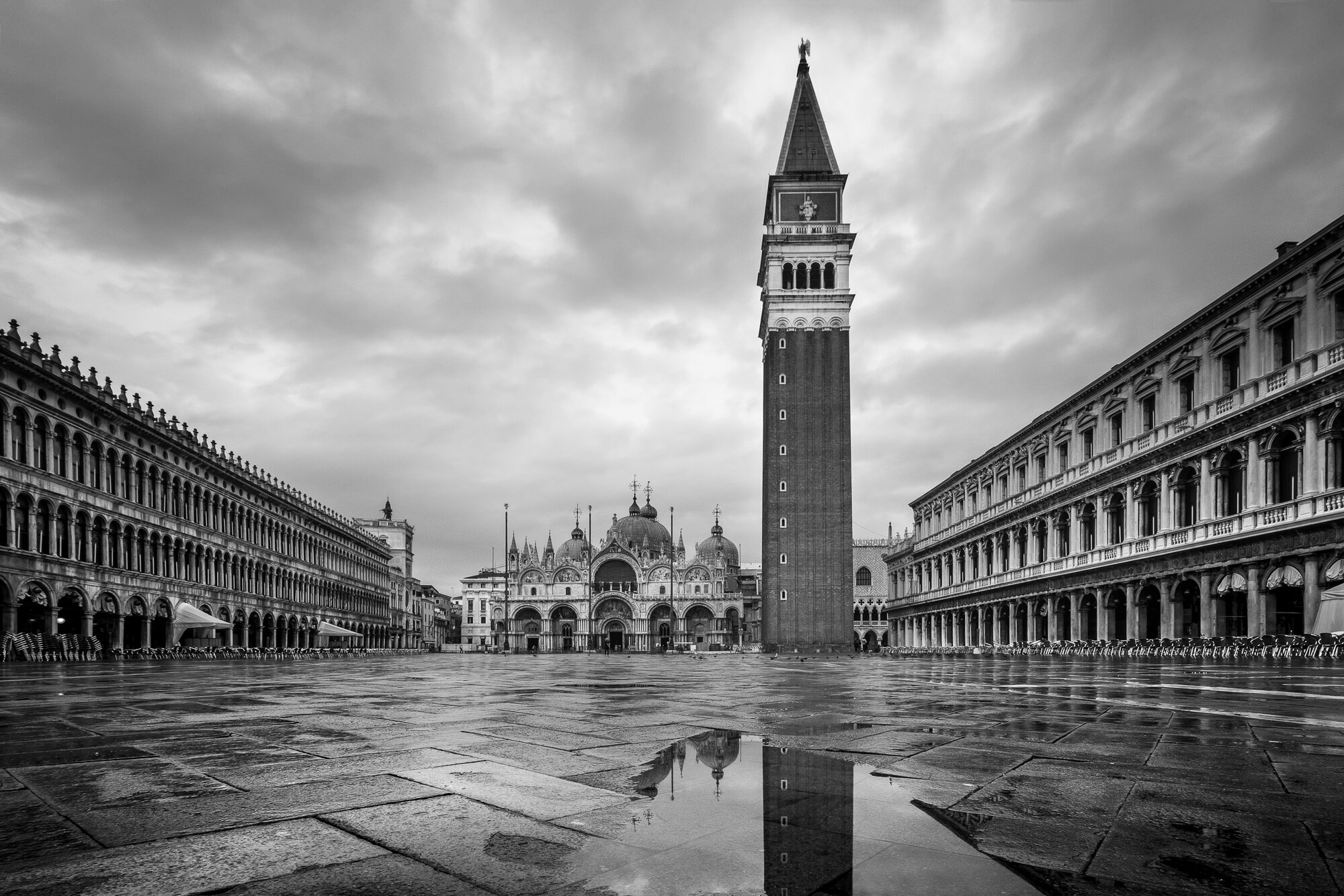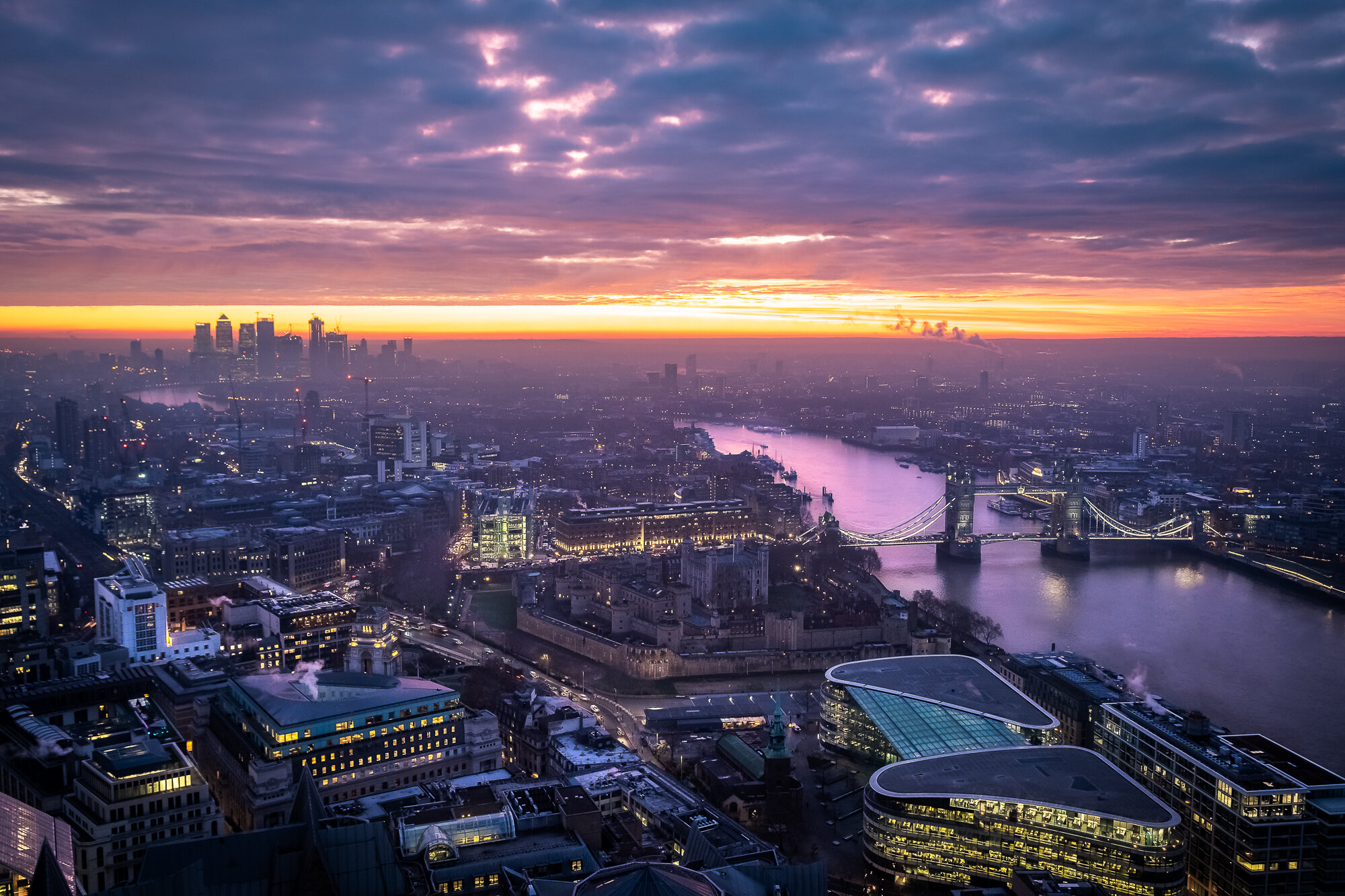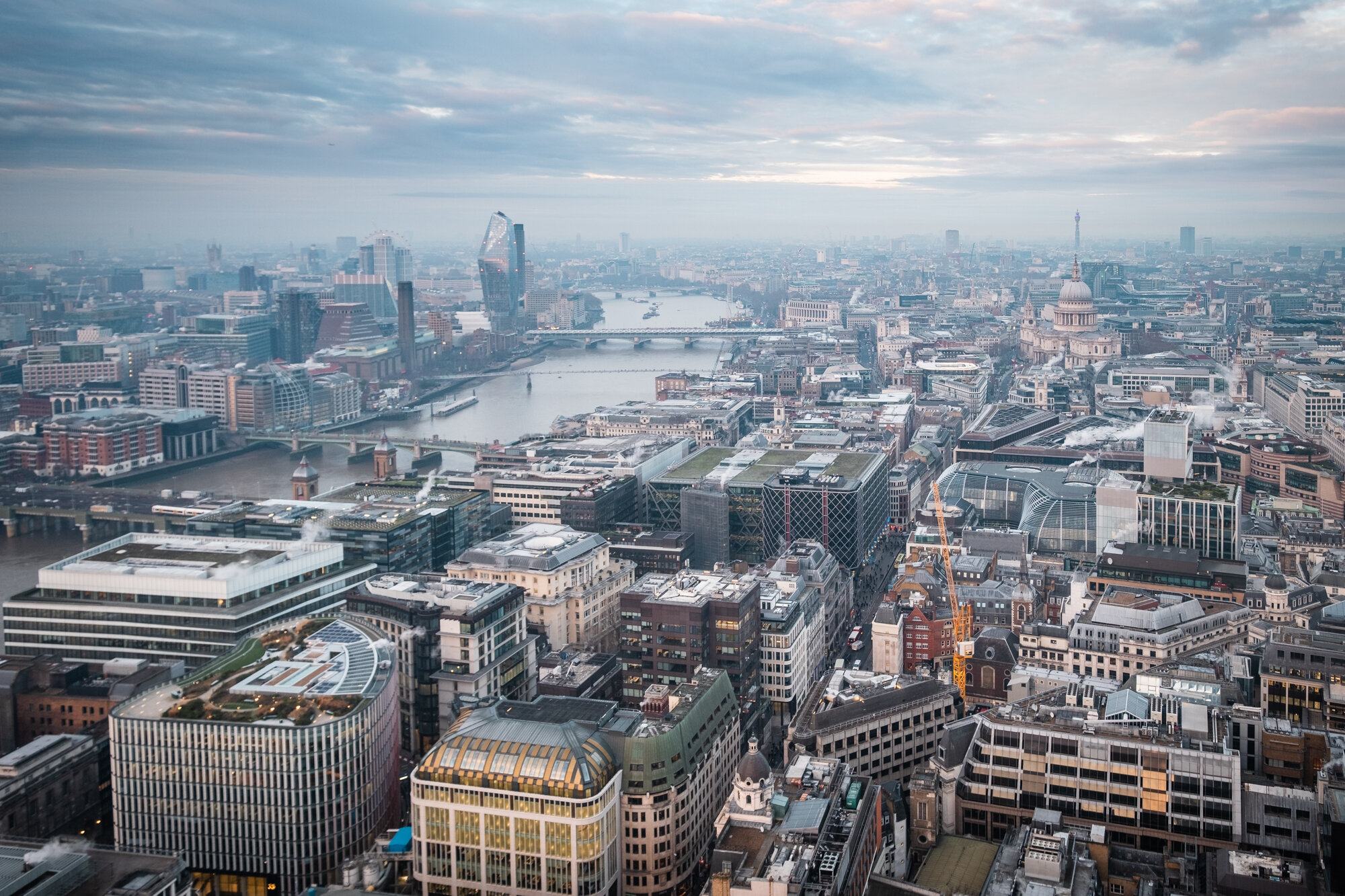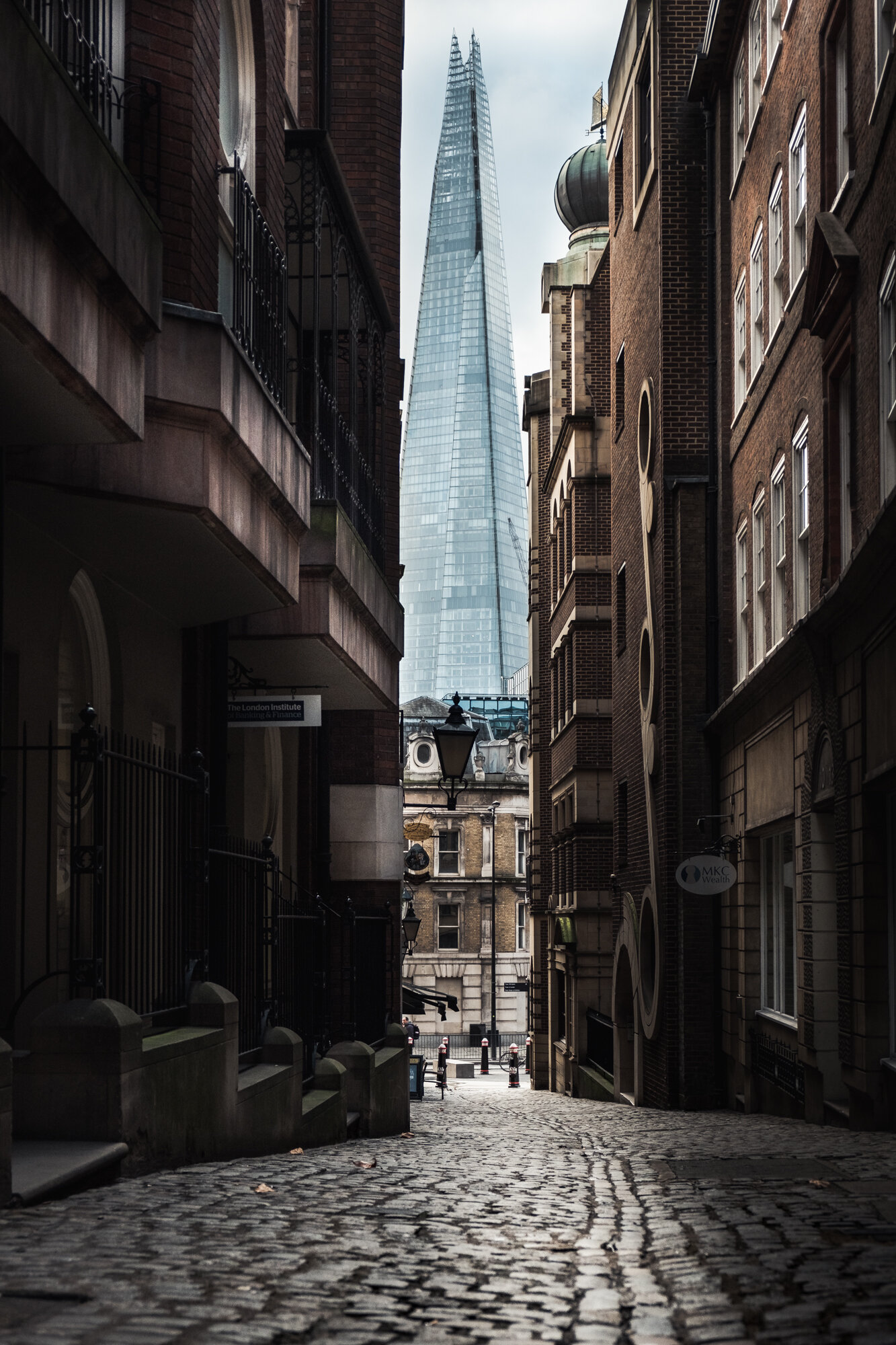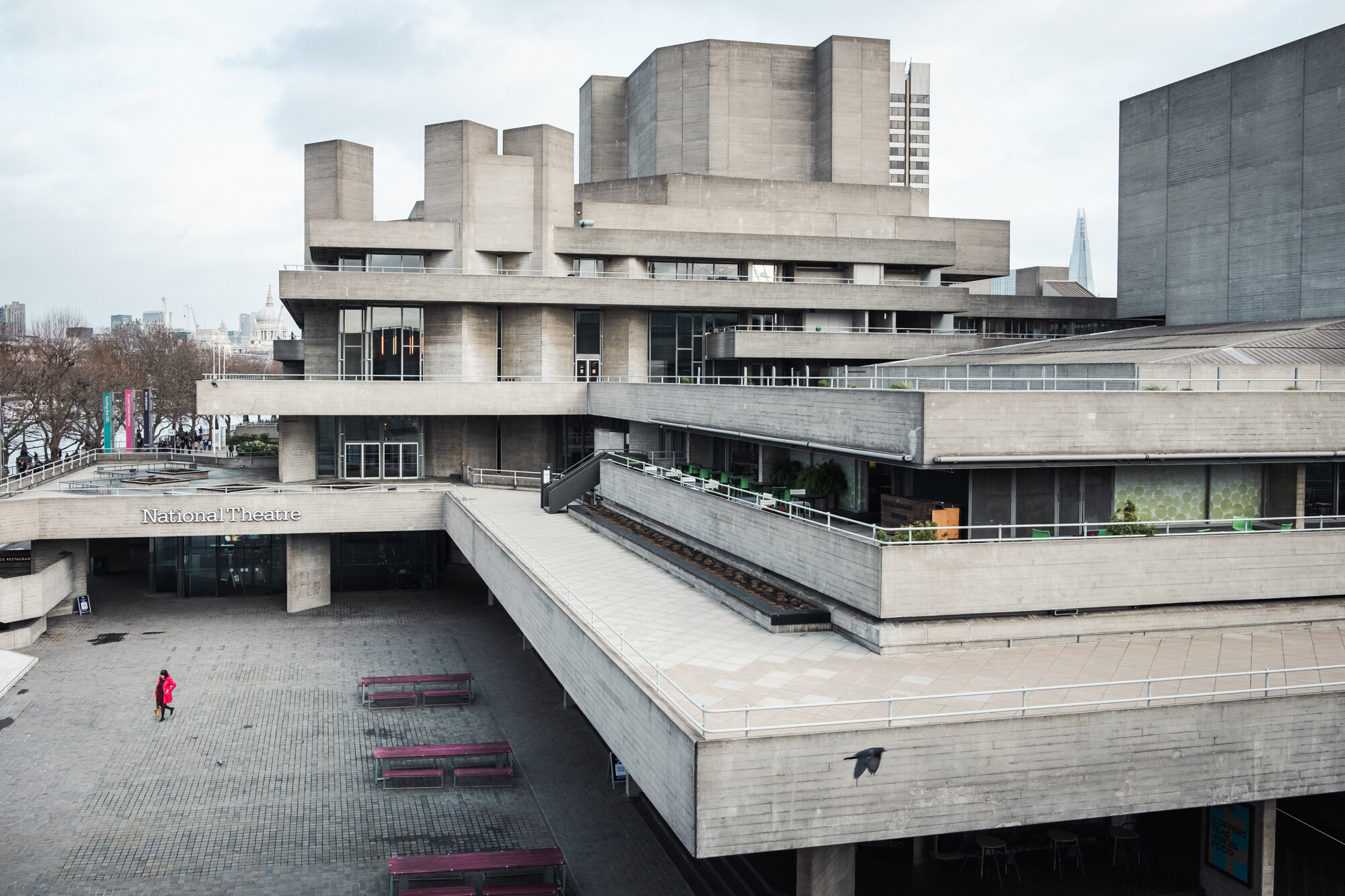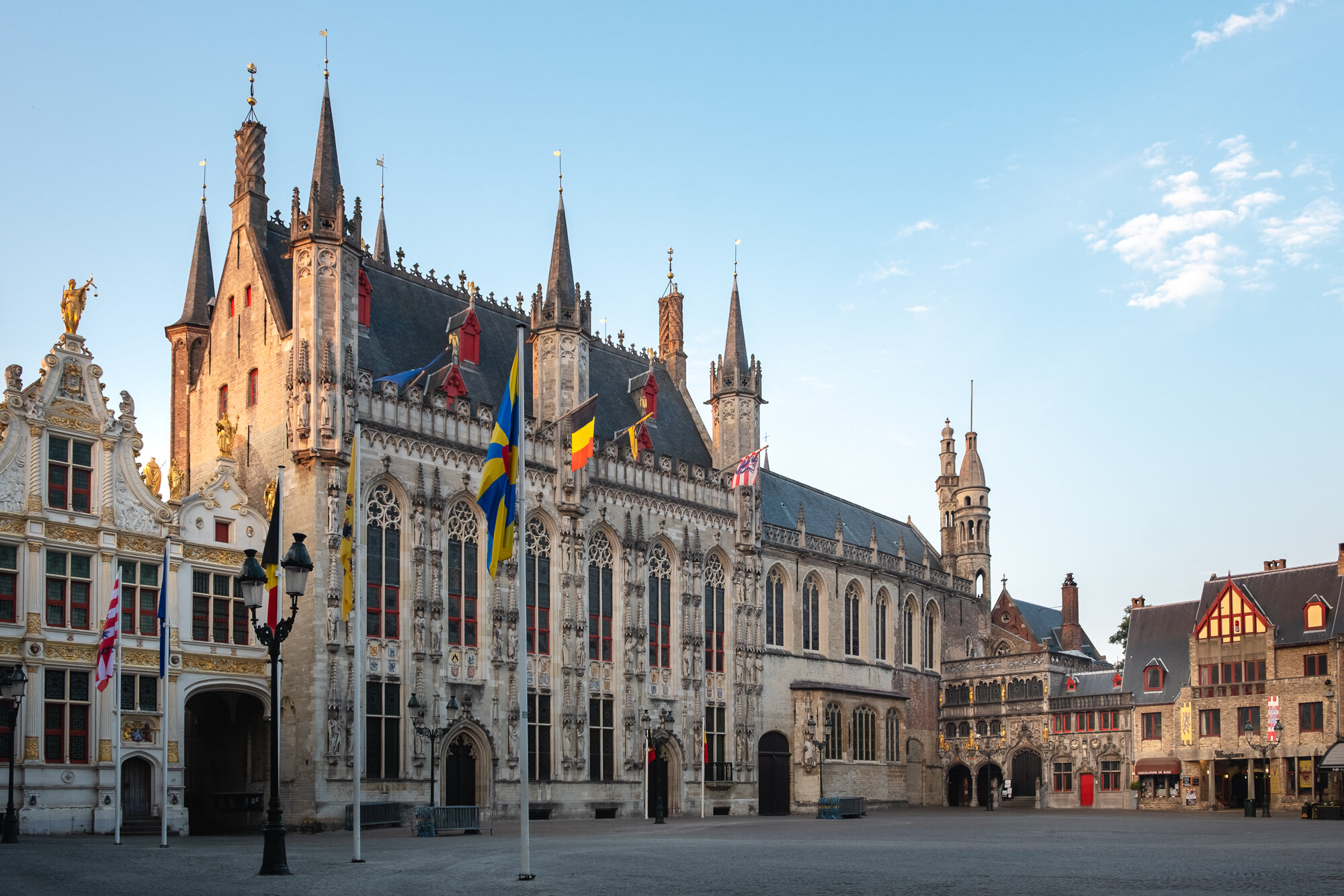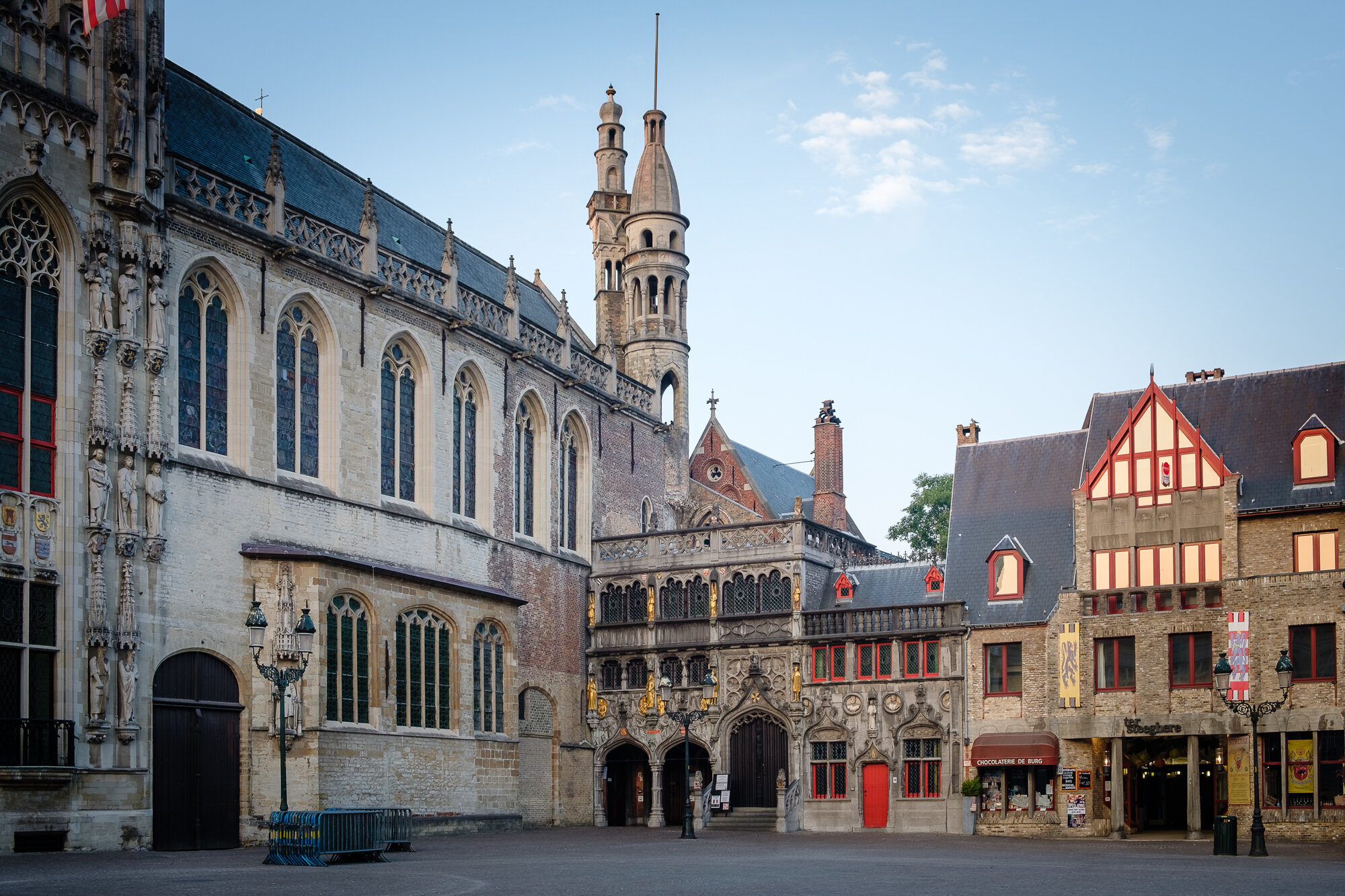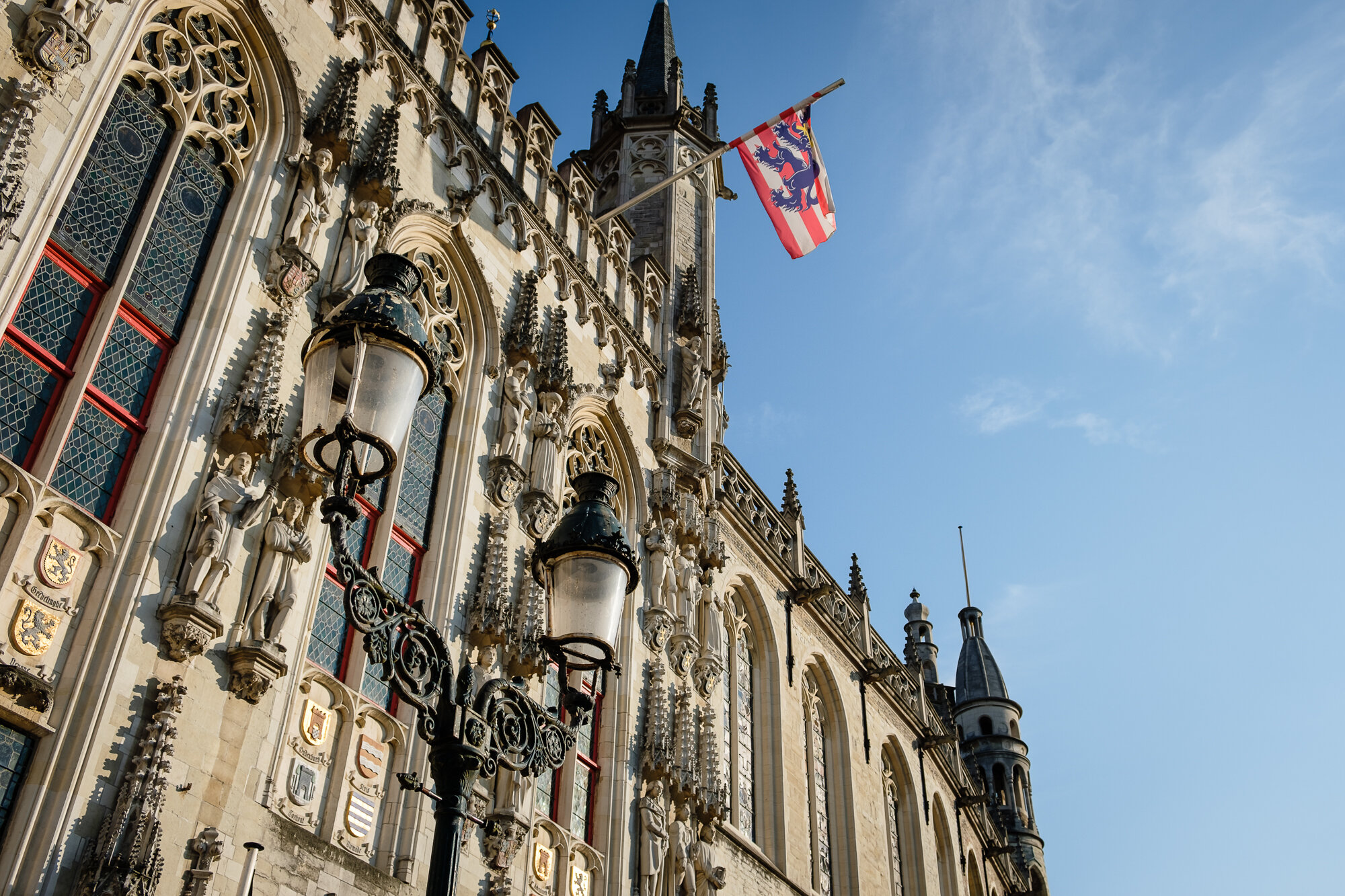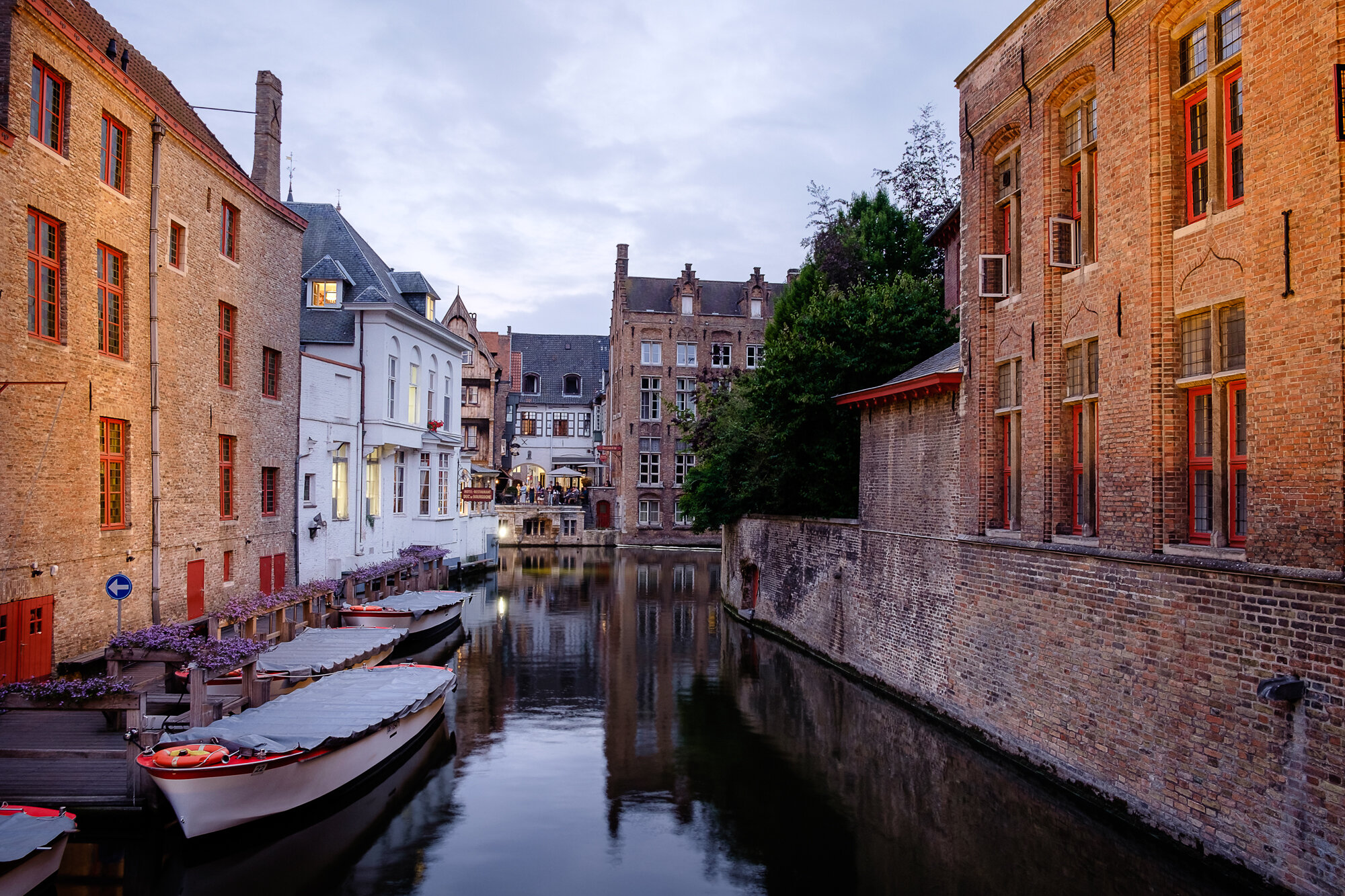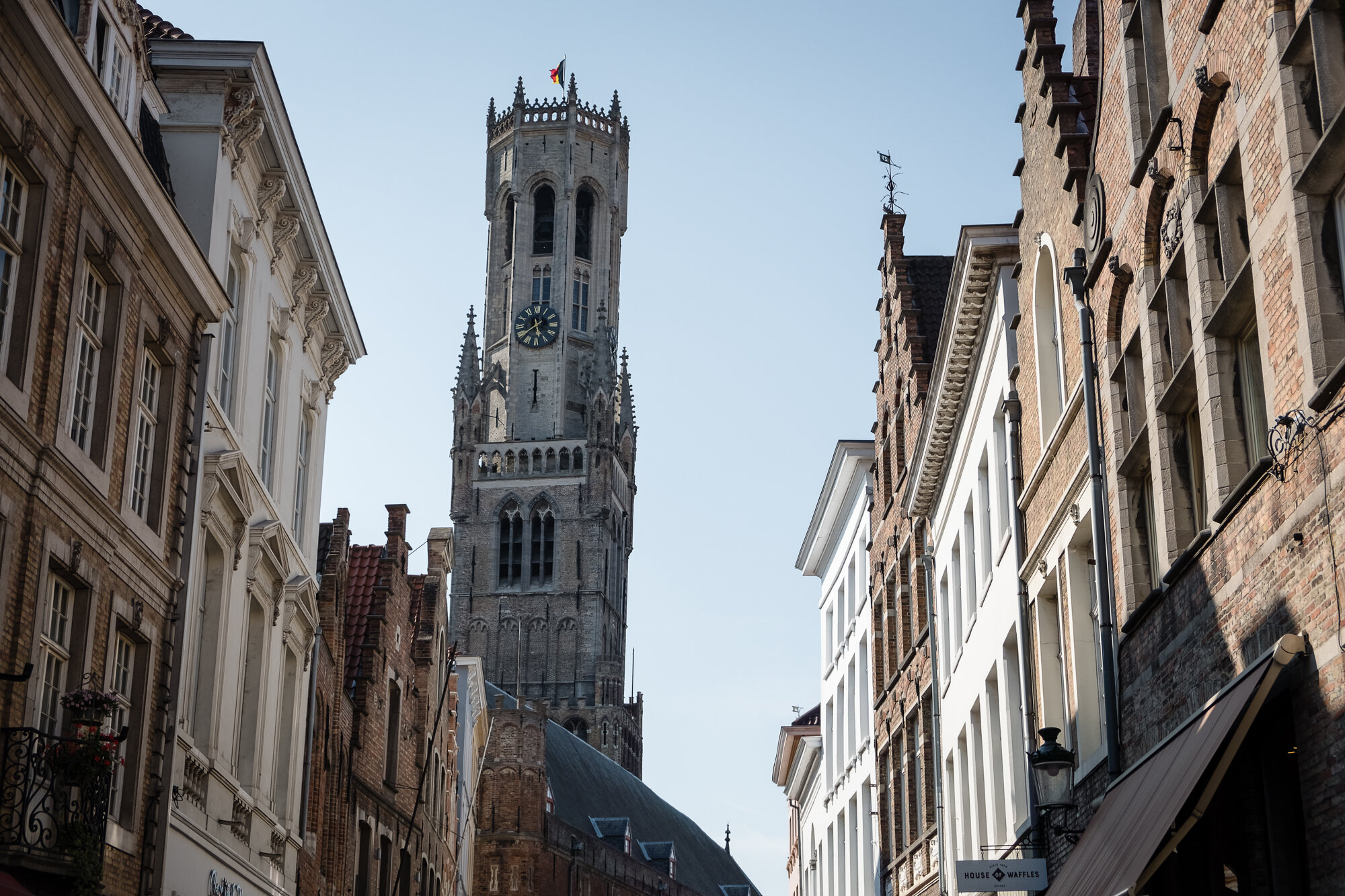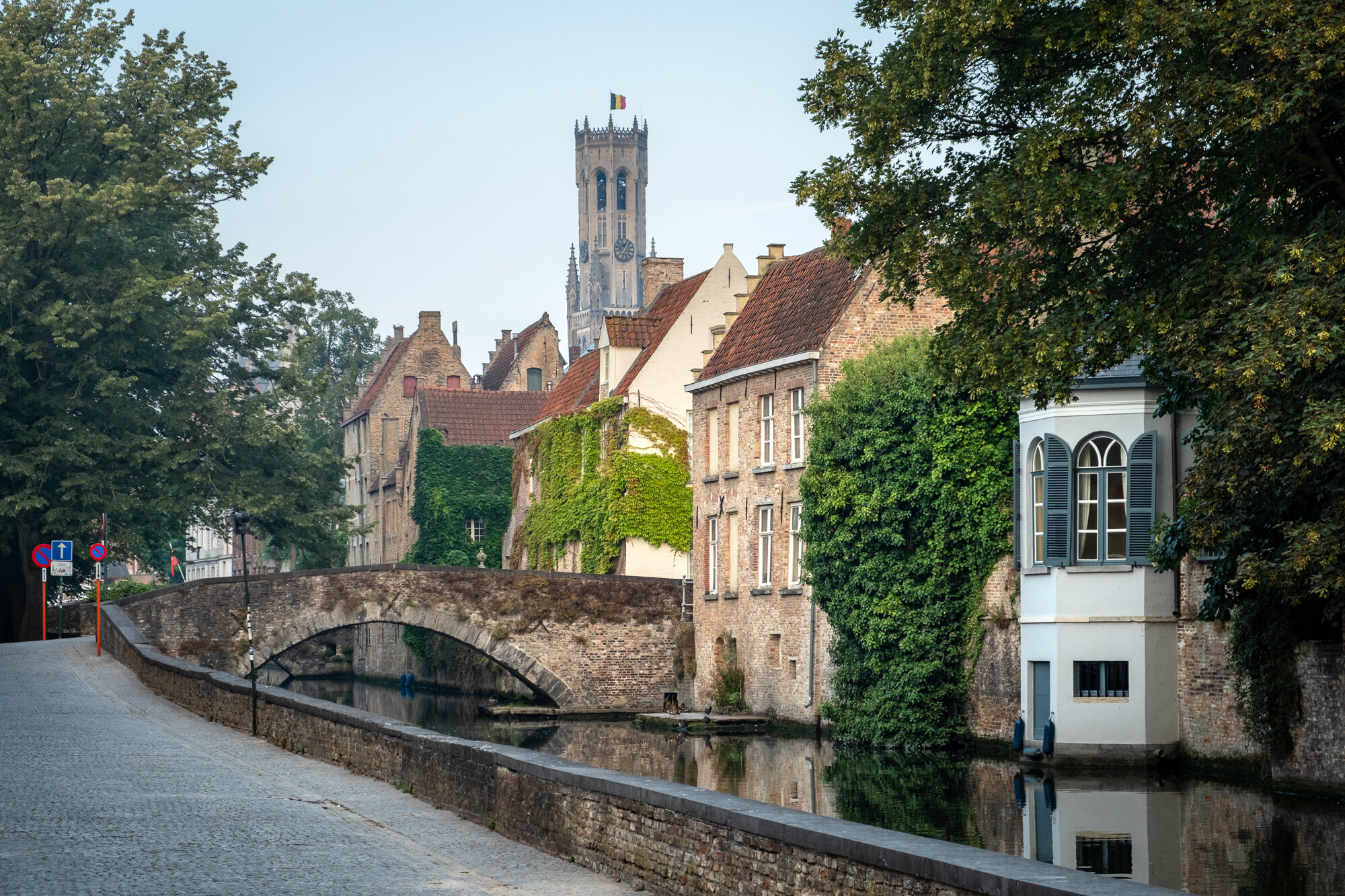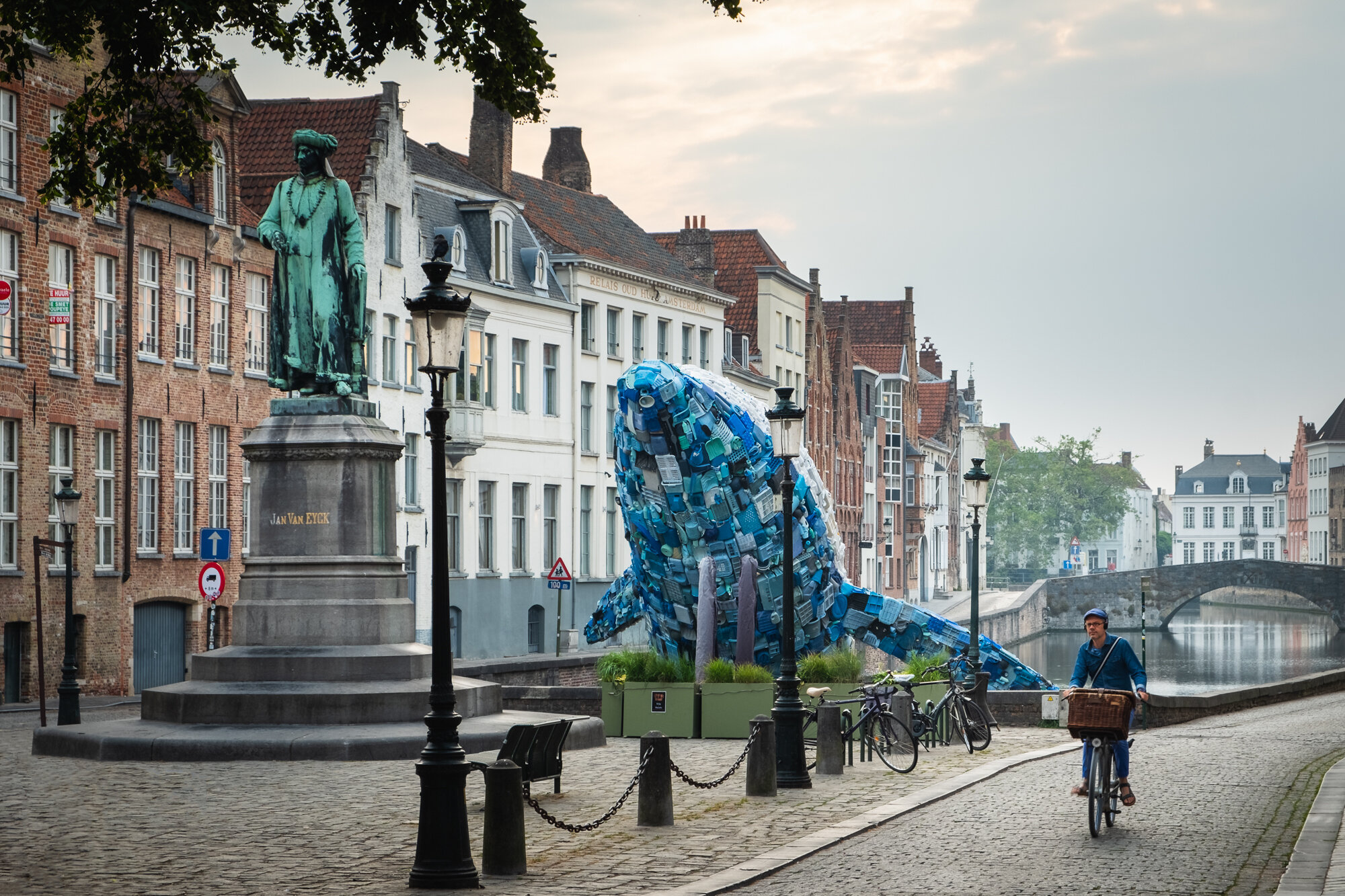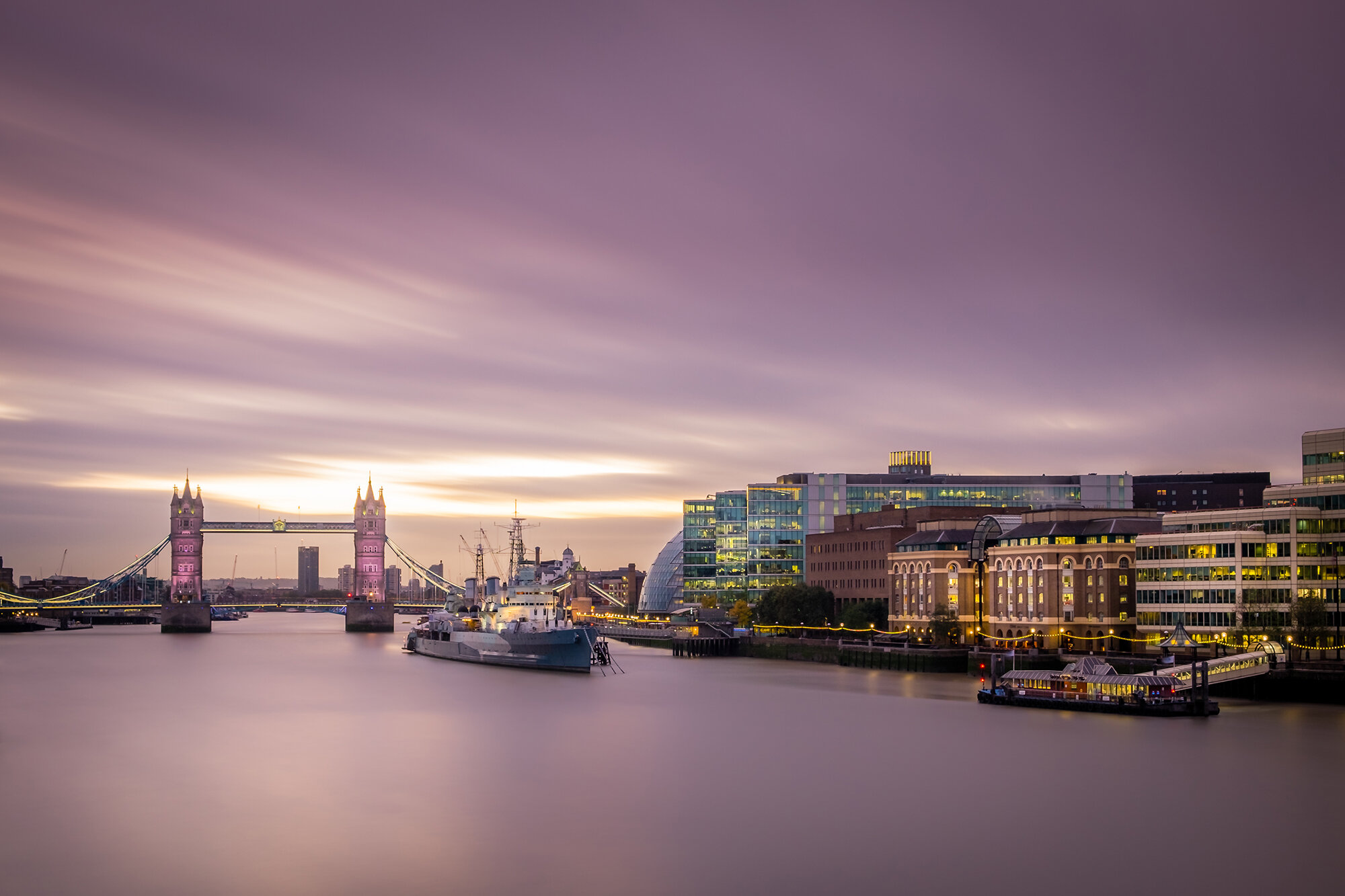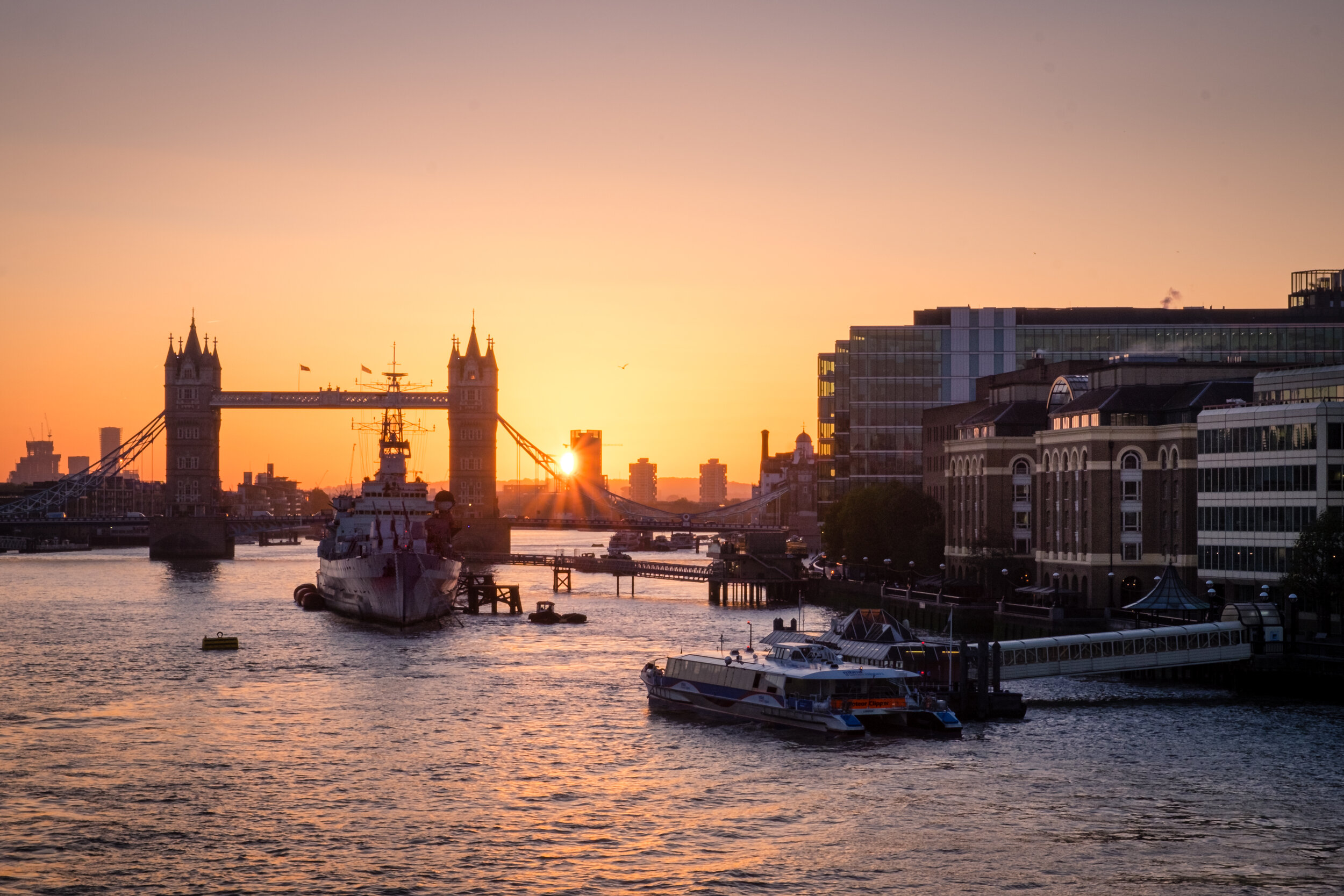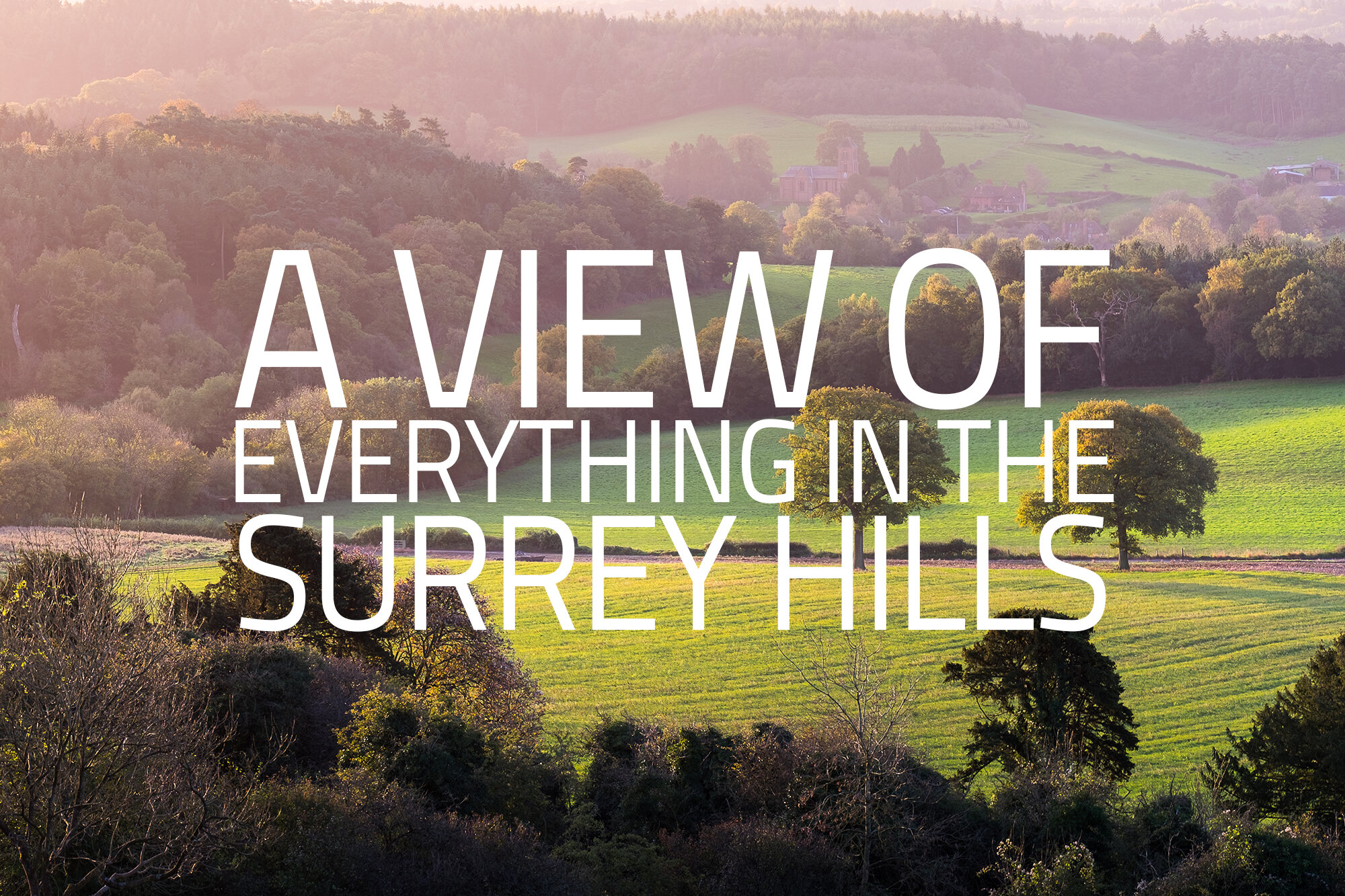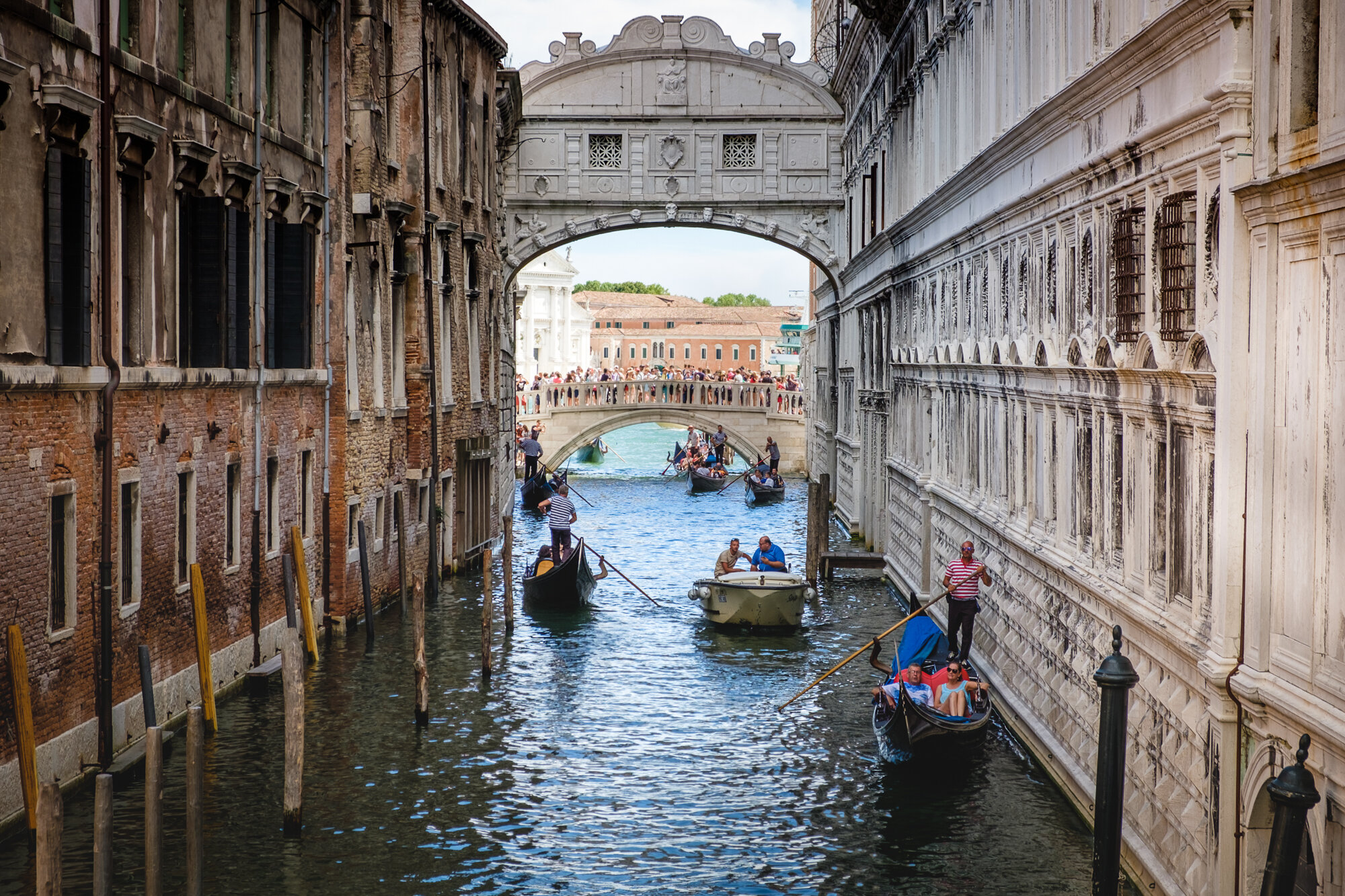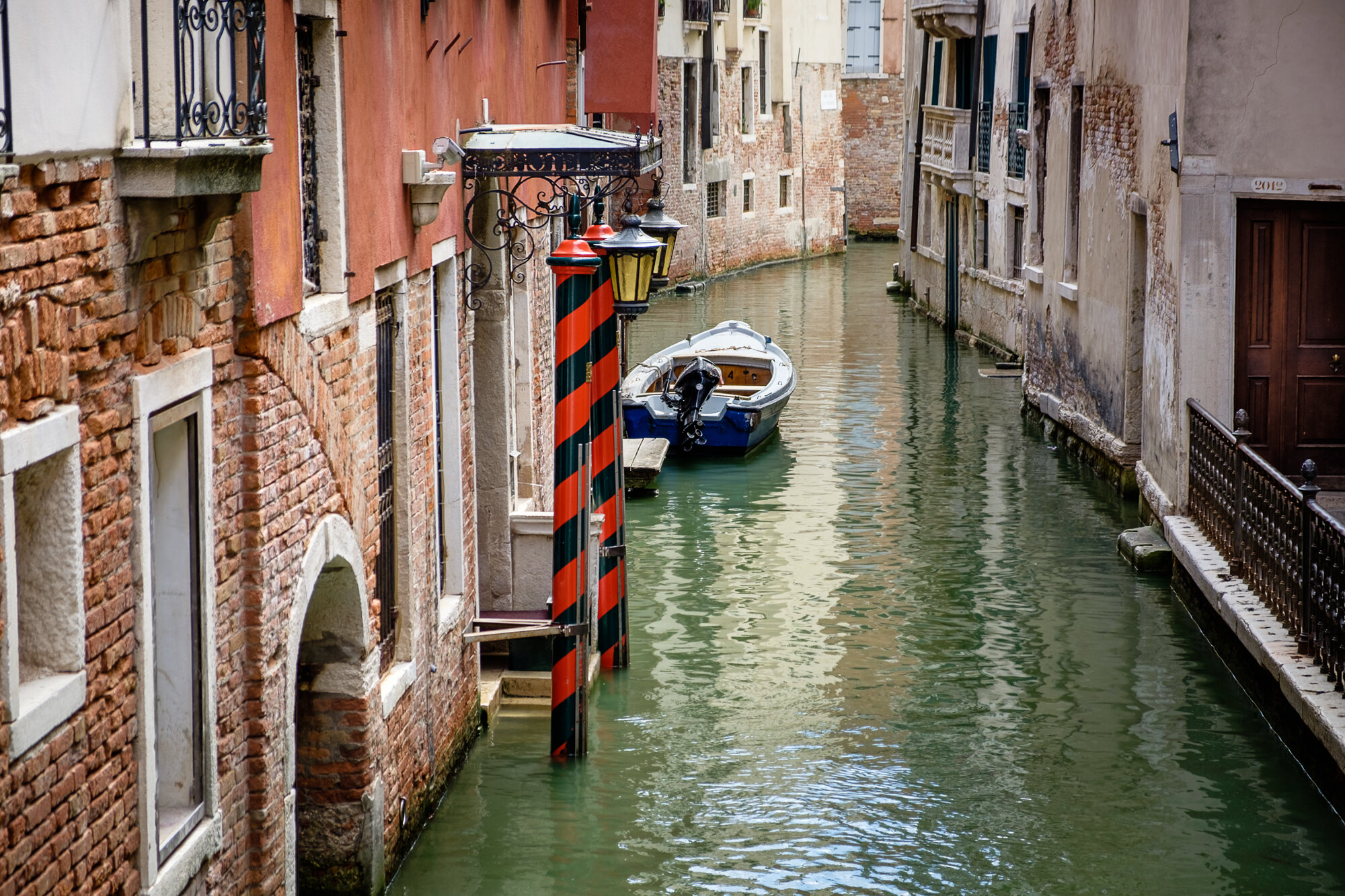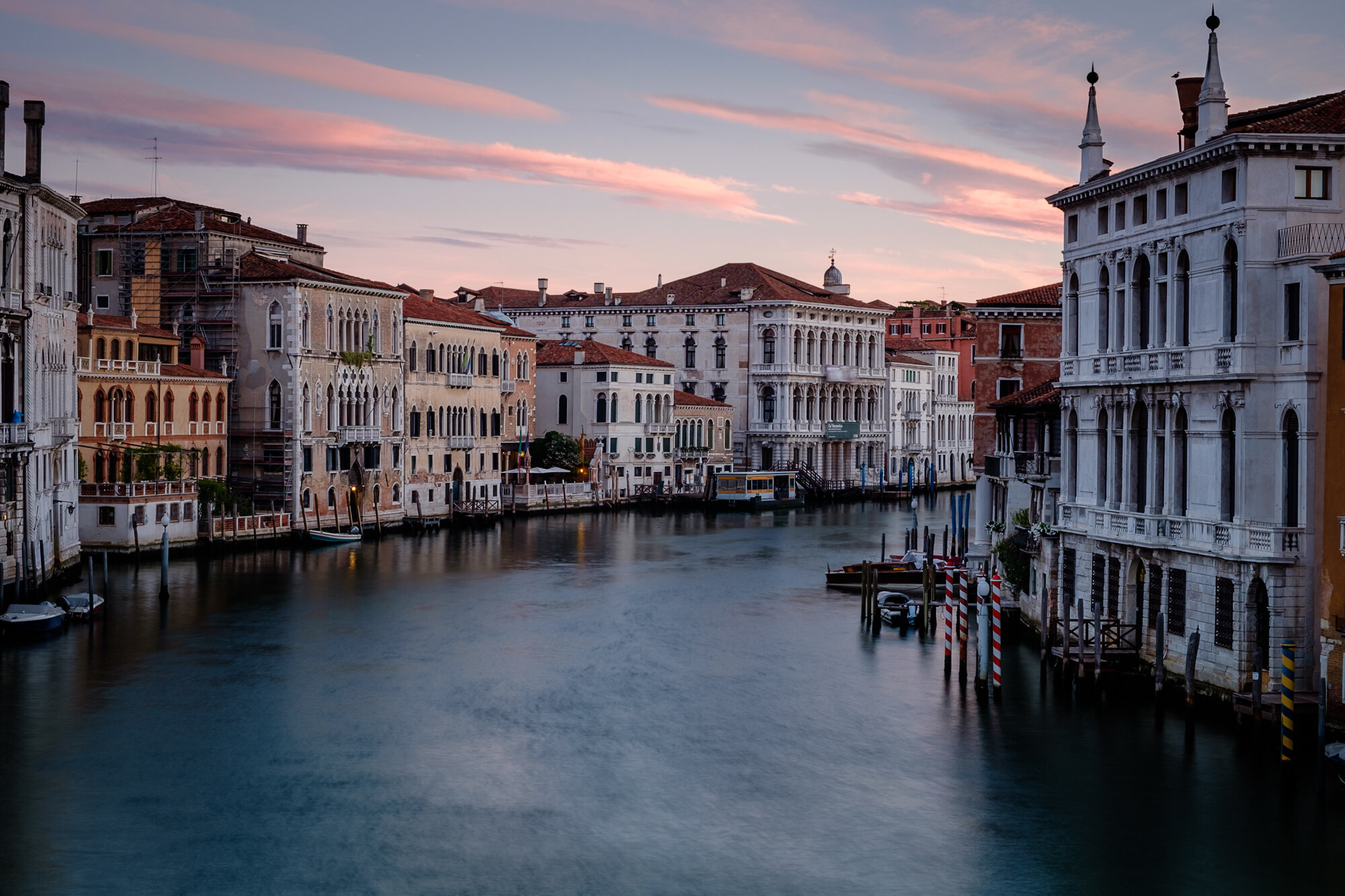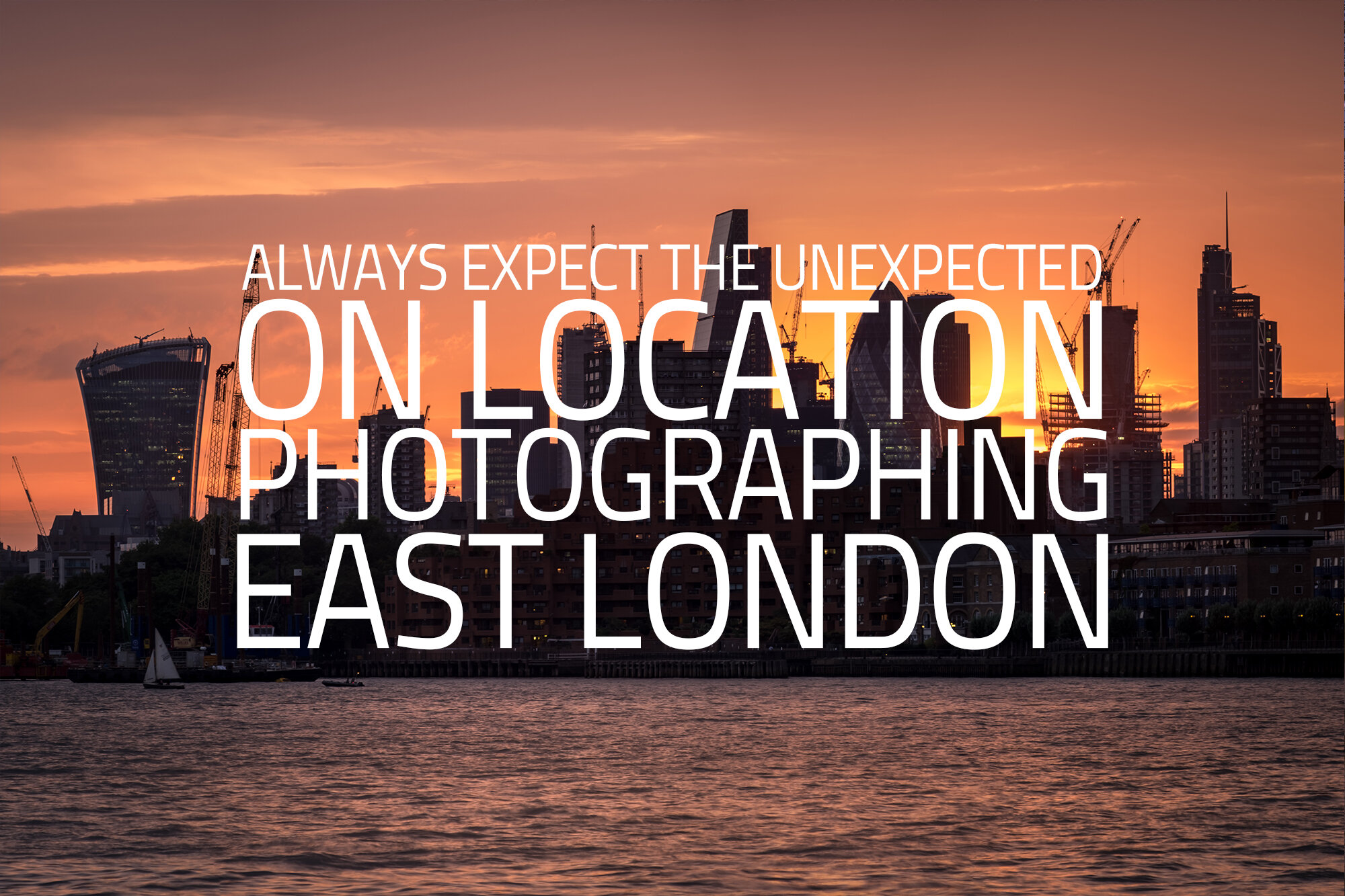BLOG ARCHIVE
On Location Photographing A Sunrise in Ghent
In the Summer of 2019, my family and I visited Ghent, Belgium and during our stay, I snuck away for a few hours to capture a beautiful sunrise in the city’s historic district.
I have been sitting on this post since last year, never quite getting around to publishing it but at last, it is finally out in the wild.
In the Summer of 2019, I travelled to the city of Ghent in Belgium with my family to explore what I consider one of Europe’s best-kept secrets. Since falling in love with the chocolate-box city of Bruges during a trip the year before, we were left wanting to see more of what Belgium has to offer.
I won’t be covering the entire trip in this post as I have already done so in a previous blog which you can find here: On Location | Photographing Ghent. Instead, this post will talk about my early morning shoot during which I was lucky enough to capture a beautiful sunrise across this fine city.
Although this trip to Ghent was a family city-break, I still made a point of getting a sunrise shoot in by heading out early on my own to try to photograph the city while looking its best, during the best light and with fewer people around. Getting out earlier gives me a few hours to explore the deserted city, photograph away and have the best compositions to myself.
Contrary to my daytime setup where I had with me the smaller Fujifilm X-T30 camera, for this shoot, I took with me the larger XT2 workhorse which I use for my main landscape/cityscape work. Normally, I wouldn’t have so much gear with me when on a city-break but as we travelled to Ghent by car, I had the luxury of taking as much camera gear as I wanted.
Photographing a Sunrise in Ghent
Before visiting Ghent, I researched the city for photo ideas and had spotted a composition similar to this looking across the bridge towards Saint Nicholas' Church, so, when I arrived in the city, I headed to this spot first. I wanted to incorporate the ornate streetlights that lined the bridge so I looked around for the best composition as I waited for the sky to get a little lighter but wary not to wait too long just in case the lights were turned off before I had the shot in the bag.
Fujifilm XT2 | XF18-55mm | 18mm | 2.6 Seconds | f/11 | ISO200
From the other side of the Bridge and with my wide-angle 10-24mm attached, I managed to capture a few more shots, including this view down the River Leie just as the sky came alive with these fantastic sunrise colours. This stretch of river and between St Michael’s Bridge and Grasbrug is one of the most picturesque areas of the city and where I spent most of the morning with my camera soaking in all of the history during these peaceful early hours.
Fujifilm XT2 | XF10-24mm | 10mm | 1/6th Second | f/7.1 | ISO200
Fujifilm XT2 | XF18-55mm | 25mm | 1/3rd Second | f/11 | ISO200
Fujifilm XT2 | XF18-55mm | 18mm | 0.5 Seconds | f/11 | ISO200
Once done on the bridge, I wandered down to the water’s edge. Having noticed how the disorderly buildings looked as they lined the river and with the 10-24mm lens still attached, I had a go at photographing them front-on and capture some of those great reflections at the same time. Although the light in the sky was amazing, it was all coming from behind the buildings so I had some dynamic range issues to deal with in post-production but the excellent XT2 dealt with it well and I was able to recover a lot of detail from the underexposed buildings. I also struggled to align the composition properly because the building to the left of the clock tower is leaning to the right making the entire scene appear wonky so the final image isn’t quite as good as I was hoping for but I know there is potential there if I visit again, maybe at the other end of the day so the light hits the front of the buildings.
Fujifilm XT2 | XF10-24mm | 11.5mm | 1/12th Second | f/11 | ISO200
Fujifilm XT2 | XF18-55mm | 18mm | 1/8th Second | f/7.1 | ISO200
Fujifilm XT2 | XF18-55mm | 55mm | 1/17th Second | f/7.1 | ISO200
Fujifilm XT2 | XF18-55mm | 36mm | 1/400th Second | f/3.6 | ISO200
Fujifilm XT2 | XF18-55mm | 31mm | 1/1700th Second | f/5.6 | ISO200
Fujifilm XT2 | XF10-24mm | 17mm | 1/400th Second | f/8 | ISO200
Fujifilm XT2 | XF18-55mm | 30mm | 1/340th Second | f/8 | ISO200
When the last of the sunrise colours were gone, I spent some time wandering back along the river and around St Michael’s Bridge taking more photos during the morning golden hour. I had a great time capturing the city while continuing to play with the lead-in lines and reflections along the water’s edge.
If I had one regret after the shoot, it’s that I didn’t take any long exposure photos during this sunrise. In reality, if I had attempted to spend the time to set up the kit, get the filters ready etc, I might have come away with nothing so it was probably the right decision and given that the city is such a short drive from Calais, I can always come back to this charming city and try another time.
It wasn't too much longer before the best of the light was gone which was my cue to leave and meet my family for breakfast at the hotel feeling pretty happy I had a few good shots on my memory card.
I hope you enjoyed this On Location photo travel blog and please get in touch if you have any questions.
Cheers
Trevor
On Location Photographing London With The Fuji XF35mm F2
Join me as I venture into London with my Fujifilm X-T30 and XF35mm F2 lens and capture a few cityscape images along the River Thames during a beautiful sunrise shoot.
Up until about a year ago, I suffered from a condition I can only describe as “Lens FOMO”. The notable symptom is the fear of missing out (FOMO) on the perfect photo because I don’t have the right lens with me. To combat this, I would always carry a full bag of gear so I was ready and prepared to capture any subject in nearly all conditions. This strategy is all well and good, but a full bag is a heavy bag and that weight can get tiresome and the long term effects on my back surely can’t be good, right? Something had to change.
Fast forward to today and things are quite different. I realised some time ago that I needed to relax more. Worrying about missing the shot was taking the fun out of the shoot and being frustrated if I wasn’t heading home with some kind of successful photo was missing the point in a really big way. What many photographers, including myself, realise at some point along their journey is that the hunt can be as satisfying as the catch. When I first took up photography, I was in it just for the photo. In my rather ignorant opinion, that was the be-all and end-all. It goes without saying that catching the killer photo is still the target but these days, the exploration, escapism and creativity are all just as important which is why, when I head out on a shoot, I no longer feel the need to take all of my gear with me and will often just head out with a single camera and one or two small prime lens. With this minimalistic setup, I feel liberated and agile to explore different angles and compositions and best of all, have great fun doing so.
You can read more about the gear I use and how I pack my bag depending on the shoot over in this post: What’s in my camera bag (2020 Edition).
Photographing London with The Fujifilm X-T30 and XF35mm F2
Recently, armed with only my Fujifilm X-T30 and the super light XF35mm F2 lens, I headed out before sunrise for a walk along the river in London to take a few photos. The compact X-T30 combined with any of Fuji’s small prime lenses is such an awesome combination. You get all the latest and greatest tech inside the X-T30 such as Fuji’s latest X-Trans sensor and super-quick autofocusing with a small, fast, high-quality prime lens. With the tactile knobs and dials to play with, for me at least, it is a joy to shoot with.
I also posted a similar article while out in London with another of Fujifilm’s compact prime lenses which you can read all about here: Photographing London With The Fuji XF16mm F2.8
I had no plan to shoot anything in particular nor any idea as to what the weather had in store. I just wanted to be out with the camera and see what I could capture. Starting off near London Bridge, I ventured over to More London and captured a few of the classic compositions before heading along the river towards Bankside and the Millennium Bridge. With such a small set-up, I started to look for new, creative compositions and had a lot of fun opening up the aperture and playing with a shallow depth of field.
Below are a few of the photos I captured during the shoot.
Fujifilm X-T30 | XF35mmF2 | 35mm | 1/20th Second | f/2 | ISO800
Fujifilm X-T30 | XF35mmF2 | 35mm | 1/13th Second | f/2 | ISO160
Fujifilm X-T30 | XF35mmF2 | 35mm | 1/20th Second | f/2 | ISO160
Fujifilm X-T30 | XF35mmF2 | 35mm | 1/280th Second | f/4.5 | ISO160
Fujifilm X-T30 | XF35mmF2 | 35mm | 1/45th Second | f/2 | ISO160
Fujifilm X-T30 | XF35mmF2 | 35mm | 1/125th Second | f/2.8 | ISO160
Fujifilm X-T30 | XF35mmF2 | 35mm | 1/750th Second | f/2 | ISO160
Fujifilm X-T30 | XF35mmF2 | 35mm | 1/450th Second | f/2 | ISO160
Fujifilm X-T30 | XF35mmF2 | 35mm | 1/70th Second | f/5 | ISO160
Fujifilm X-T30 | XF35mmF2 | 35mm | 1/1,100th Second | f/5.6 | ISO160
Fujifilm X-T30 | XF35mmF2 | 35mm | 1/3,200th Second | f/5.6 | ISO160
Although the single camera, single lens strategy is not just limited to prime lenses, I wanted to just touch upon why I have a couple of them in my bag. Unlike a zoom lens which allows you to get closer or further away from the subject while keeping your feet rooted to the spot, prime lenses have a fixed focal length which means you have to zoom with your feet (as in walk closer or further away from your subject). Zooming with your feet doesn’t work in all situations and may sound restrictive to some, but it’s that limitation coupled with typically wider apertures and increased image quality that attracts so many to them. Primes tend to simplify the process, stripping away the compositional decisions around the focal length. What you see is what you get. This for some is far more liberating than having a zoom lens.
Overall, it was a great morning to be out photographing the city. I had some nice light and had some fun with the wide aperture and shallow depth of field. I still occasionally head out with a full bag of gear, particularly if I have a shot in mind such as a long-exposure, cityscape image for which I need extra equipment but I do so much less frequently these days. With only a single camera and lens, I feel free to wander the streets and find angles and unique compositions that I just wouldn’t think to look for when weighed down by a big heavy bag on my back.
Speak to you soon.
Trevor
On Location Photographing London With The Fuji XF16mm F2.8
One thing I like to do when I buy new photography gear is to really put it through its paces and to understand everything about it. Having purchased the recently released Fuji XF16mmF2 WR lens, I did just that and took the lens on a rainy walk along the Thames in London at night. Jump in to read how I and the lens got on.
One thing I like to do when I buy new photography gear is to really put it through its paces. To learn how it performs, to understand its characteristics, quirks and drawbacks so when it comes to packing my camera bag, I know what kit is going to help me get the most out of the shoot.
Earlier this year, I brought the pocket-rocket Fujifilm X-T30 and to get to know it well, I used it as my main camera during a recent trip to Ghent, Belgium.
You can read all about this trip in my post here: On-Location | Photographing Ghent
A little more recently I finally got around to purchasing the Fujifilm XF16mm F2.8 WR prime lens. I already had the XF35mm F2 which I really enjoyed using and wanted the same again but wider, so I splashed out the relatively reasonable £350 and bought one.
With the lens now in the bag, it was time to head out and get to know it properly, so a couple of weeks ago I decided to venture out into London after dark to see how it performed while on a walk from Westminster to Tower Bridge.
Just to make a quick note. This is by no means a technical or scientific review of the lens. You will find plenty of reviews that provide technical specifications and deep analysis of how well the lens performs against its rivals but in this post, I will show you the photos I took and talk about how I thought the lens behaved in the pretty tough conditions of a rainy night in London. In addition, this lens is relatively inexpensive compared to the likes of the XF16mm F1.4, the XF8-16mm F2.8 and XF16-55mm F2.8 so this particular review is based on me having realistic expectations of a lens at the particular price point.
To push the limits of the lens and myself as a photographer, I decided to head out to take a mix of street and cityscape photos with just the camera and lens and no tripod whatsoever. I was depending solely on the city to provide enough light to expose the photos enough for most to be taken handheld. I did, however, use the odd wall or ledge to rest the camera enough to enable me to drop the ISO or open the shutter longer on occasion. You can spot these easily by checking the settings I used under each of the photos below.
Photographing London with the XF16mmF2.8 WR
First stop was to capture the London Eye illuminated by these cool colours. As you can see, with no tripod to use, I ended up resting my backpack on the wall, then the camera on top of that which helped me get the angle I wanted. The wider 16mm focal length (equivalent to 83.2 degrees field of view) enabled me to capture the entire scene without having to point the camera too far upwards thus avoiding the distortion this inevitably brings.
Fujifilm X-T30 | XF16mm F2.8 | 16mm | 0.8 Seconds | f/2.8 | ISO160
The image below was about as tough as it got when it came to handheld shots using just the city lights. This area is pretty dark and I needed to up the ISO to 1600 to get close to a sharp image. Just as I had finished adjusting the ISO, this chap crossed the road in front of me and I just managed to capture him as he stepped into the light.
Fujifilm X-T30 | XF16mm F2.8 | 16mm | 1/17th Second | f/2.8 | ISO1600
For this photo walk, I was shooting in aperture priority set to f/2.8 to ensure I captured as much light as possible. One of the minor drawbacks this lens has is that the aperture doesn’t go as low as other lenses in the line up such as the XF35mm F2 WR. I could have done with that extra stop!
I generally set the camera to auto ISO800 but as you can see by the settings below, I had to adjust this for the odd photo. With the camera deciding the optimal shutter speed that left me to play with the exposure compensation dial on the fly which allowed me to manipulate the shutter speed by under or overexposing.
While up on the Golden Jubilee Bridge, I had to use all of the 16mm I had available to fit both the London Eye and sky swings into the image and still have enough room to correct some of the distortion later in post. It’s not a great composition, I know, but it demonstrates the field of view you can get with this lens pretty well.
Fujifilm X-T30 | XF16mm F2.8 | 16mm | 1/18th Second | f/2.8 | ISO800
If I could ask for one thing to improve this lens, it would be to somehow add image stabilisation without adding to the cost, size or weight. Yeah, I don’t ask for much, right? Here’s a couple of photos captured handheld as I walked along from South Bank to Embankment which were both taken at 1/10th of a second. That’s a pretty slow shutter speed and with no image stabilisation available from both camera or lens, I needed a very steady hand indeed.
Fujifilm X-T30 | XF16mm F2.8 | 16mm | 1/10th Second | f/2.8 | ISO800
Fujifilm X-T30 | XF16mm F2.8 | 16mm | 1/10th Second | f/2.8 | ISO800
The WR in the name stands for Weather Resistant. Not to be confused with Water Proof. This lens can withstand the odd rain shower but don’t go dunking it underwater as you may end up with a rather expensive paperweight.
Ideally, I would have had my XT2 camera with me on this photo walk as coupled with this weather-resistant 16mm prime, I would have had a fully weather-sealed set up but on this particular day, I forgot to check the weather and by the time I realised how wet it might get, I was already in London with the X-T30.
It took a few minutes for the right looking people to enter this scene in front of Shakespeare’s Globe Theatre to get the type of photo I was aiming for and although I had to be a bit careful about getting the X-T30 wet, at least I didn’t have to worry too much about the lens. This couple, shielded by their umbrella perfectly told the story about the wet conditions endured on this particular rainy night in London.
Fujifilm X-T30 | XF16mm F2.8 | 16mm | 1/40th Second | f/2.8 | ISO800
While the famous London Bridge is pretty plain and uninspiring during the day, it recently received a new light installation as a part of the Illuminated River Project and now shines bright and colourful at night making it a great subject for night photography. Closing down the aperture to f/10, (it ranges from f/2.8 to f/22) I was able to create these starbursts from the street lamps but the resulting 9-second exposure meant I needed to support the camera. Luckily, there was a nice flat wall right where I stood. What luck!
Fujifilm X-T30 | XF16mm F2.8 | 16mm | 9 Seconds | f/10 | ISO160
I finished up right next to Tower Bridge in the popular More London Estate. This area is pretty well lit and provides a great subject for night photography and allow me to continue testing this lens I was enjoying using so much.
In addition to letting more light through the lens, the wider aperture of F/2.8 allowed me to get a bit creative with the depth of field which you can see in a couple of the images below. The 9 blade aperture results in a nice, smooth bokeh (the blurry, out of focus part of the image).
Fujifilm X-T30 | XF16mm F2.8 | 16mm | 1/15th Second | f/2.8 | ISO800
This lens weighs only 155 grams and with the X-T30 weighing 383 grams including card and battery, I had a fantastic, lightweight set up of 538 grams (that’s about 1.2lbs). With such a light combination, carrying around this camera and lens all evening was absolutely no bother at all.
Fujifilm X-T30 | XF16mm F2.8 | 16mm | 1/25th Second | f/2.8 | ISO800
Fujifilm X-T30 | XF16mm F2.8 | 16mm | 1/20th Second | f/2.8 | ISO800
I know it’s hard to tell from looking at these photos on this web page but I was really pleased with how sharp the shots came out when using this lens wide open. In these low-light, rainy conditions and with the aperture at f/2.8, these shots taken around More London look really good. Like most lenses in this price range, when used wide open like this, you will rarely get corner to corner sharpness and this lens is no different. The images do soften slightly as you get closer to the corners but the softness is very subtle and only really visible when viewed at 100%. All in all, these photos are plenty sharp enough for me and totally useable.
Fujifilm X-T30 | XF16mm F2.8 | 16mm | 1/25th Second | f/2.8 | ISO800
Fujifilm X-T30 | XF16mm F2.8 | 16mm | 1/8th Second | f/2.8 | ISO800
Fujifilm X-T30 | XF16mm F2.8 | 16mm | 1/17th Second | f/2.8 | ISO800
Fujifilm X-T30 | XF16mm F2.8 | 16mm | 1/13th Second | f/2.8 | ISO800
As I mentioned at the beginning of this post, this is far from a formal review of this lens. A quick google will get you to one of those in no time. Instead, these are my real-world experiences of using this cracking little lens on a wet, windy night in London and if all you take away from this post is that this lightweight, inexpensive lens feels solid, performs well and is all around a pleasure to use then that’s good enough for me.
Until next time.
Trevor
On Location Photographing Ghent
In August 2019, I visited Ghent with my family and took my newly purchased Fujifilm X-T30 so this article is part travel blog and part gear review with some photos of the city thrown in for good measure.
Ghent, Gent, Gand, whatever you call this city, one thing is certain, this city is a great place to visit and quite possibly Europe’s best-kept secret. Travellers heading to Belgium for a short break usually head to Brussels (Belgium’s capital city) or Bruges, which is a small and very charming chocolate box city around 45 minutes from Ghent but judging by most of the people I spoke to about my upcoming trip to Ghent, it would normally be followed by the question “Where’s that?”.
Having already visited Bruges in August 2018 and had a great time, my family and I decided to spend another long weekend in Belgium, this time visiting this beautiful medieval city. As we live in the South East of England, Belgium is such a convenient place to visit as it’s only a short drive to the Channel crossing and around 90 minutes’ drive once we had crossed the English Channel. In total, a 4-hour door to door journey. Not too bad at all.
If you missed my “On Location” post covering a previous trip to Bruges I took in 2018, you can find it here: On Location Photographing Bruges.
Fujifilm XT-30 | XF18-55mm | 18mm | 1/640 Second | f/2.8 | ISO160
What photography equipment did I take to Ghent?
This is a photography blog after all. Not long before heading to Ghent, I had retired my Fujifilm X-T10 and purchased the X-T30 as my lightweight alternative to the XT2 workhorse I tend to use on shoots. On this trip, I took both cameras but I only used the XT2 once during a sunrise shoot and used my X-T30 during the day as I thought it would be a good opportunity to really get to know the camera and put it through its paces. Although I didn’t take all of the gear out with me each day, below is the list of kit I took on the trip:
Fujifilm X-T30 Body
Fujifilm XT2 Body
XF10-24mm Lens
XF18-55mm Lens
XF55-200mm Lens
I mentioned above that I had recently retired my X-T10. In fact, I do still have it and one of my daughters decided to use it as her main camera while we were in Ghent. She shot with the 35mm F2 lens on the camera and came away with some fantastic photos of her own.
A little bit about Ghent
Ghent is a port city in the north-west and Flemish region of Belgium situated about an hour’s drive from Brussels and 45 minutes to Bruges. Dating back to around the 7th Century when it’s first two Abbeys were founded, the city flourished to the point that in the 13th Century, it was Europe’s second-largest city north of the Alps, second only to Paris. Now a university city boasting museums, churches and a charming stretch of river, this city has a great mix of historic and modern cultures.
Fujifilm XT-30 | XF18-55mm | 55mm | 1/420 Second | f/4 | ISO160
Instead of documenting our trip chronologically, in this post, I will cover some of the places we visited with some photos and useful information along the way.
Gravensteen Medieval Castle
First up is this charming but brutal looking Gravensteen Castle located along the River Lieve. Also known as the “Castle of the Count”, this 12th century stone castle has all of the usual medieval features you would expect such as a moat, turrets and arrow slits. Built originally as a fortress, over the years it has been used as a courthouse, prison and strangely, even a cotton factory.
Fujifilm XT-30 | XF18-55mm | 18mm | 1/500 Second | f/6.4 | ISO160
If you decide to venture inside the castle, you will find the inside rather bare so I recommend the audio tour. It’s a bit tongue-in-cheek and a little lengthy so allow extra time as you wander the castle but it is the best way to learn all about its history.
Rooftop views of Ghent from Gravensteen Castle
We visited the roof of the castle which provides some great rooftop views of the city. As you can see below, I used some of the arrow slits to frame some of the city’s other buildings.
Fujifilm XT-30 | XF18-55mm | 18mm | 1/850 Second | f/3.6 | ISO160
Along the River Leie (Lys)
Ghent’s city centre is located along the River Leie and it is such a charming stretch of river and between St Michael’s Bridge and Grasbrug, it is particularly popular with the best of the chocolate box architecture. As we wandered around the city, we really enjoyed walking along both the River Leie and offshoot stretch of water names River Lieve (indeed the names are incredibly similar). Parts of the river had a kind of Amsterdam feel with colourful flower baskets and bikes leaning up against the rails.
Fujifilm XT-30 | XF18-55mm | 22mm | 1/1700 Second | f/4.5 | ISO160
Using the Fujifilm X-T30 as a travel camera
As we wandered around, I was glad I chose the Fuji X-T30 as my “walkabout” camera. This small camera that packs quite a punch was equipped with the standard zoom 18-55mm lens which, when combined, felt nice and light whilst capturing some super sharp images. I also had an incredibly light backpack as I decided to only take one other lens with me from the hotel. Using the X-T30 takes so much friction out of the photography process as the tactile controls and manual dials mean I can compose and adjust settings really quickly. With Fujifilm really upping their focus game with this camera, taking photos while walking about was nice and easy and my family didn’t have to stop too often while I was taking photos.
Fujifilm XT-30 | XF18-55mm | 55mm | 1/1,000 Second | f/4 | ISO160
Saint Michael’s Bridge and Saint Michael's Church
The building of St. Michael’s Church started around 1440 and continued into the 16th century whereby 1566 two levels of the tower were completed. Due to religious conflicts, construction stopped until the 17th Century when in 1623 building restarted to repair and complete the tower. Although a design for the tower was proposed, funds dried up and the tower was never built leaving an odd-looking flat roof where the tower should be. I took a photo of the church from atop the Belfry of Ghent which you can see below showing the church and its flat-roofed tower. To me, it doesn’t look right at all as I am used to these types of religious buildings having impressively tall spires and not at all flat roofs.
Fujifilm XT-30 | XF18-55mm | 55mm | 1/5th Second | f/4 | ISO400
Built-in 1910, the neo-gothic St. Michael’s Bridge is probably the most popular bridge in Ghent. Providing great views of this beautiful stretch of river as well as an iconic view of Ghent’s three towers, it’s arguably the best vantage point in the city. I cover the three towers further on in this blog.
Fujifilm XT-30 | XF18-55mm | 18mm | 1/2,200 Second | f/4 | ISO160
St. Nicholas' Church (Sint-Niklaaskerk)
I mentioned above that Ghent has three towers that dominate the city skyline and St. Nicholas’ Church has one of them. This is the first church we ventured into as when we travel, we like to experience both the external and internal architectural details historic buildings like this have to offer. It was also a good opportunity to put my X-T30 through its low-light paces. More on that below.
In the early 13th century, the building of this gothic church was started and continued throughout the remainder of the century. It also houses an impressive and quite famous organ built by the French organ builder Aristide Cavaillé-Coll. There is a photo of the organ below and although I wasn’t aware at the time of its importance, I certainly remember how striking it was when I saw it at the time.
Fujifilm XT-30 | XF18-55mm | 30mm | 1/950 Second | f/6.4 | ISO160
While wandering inside the church photographing the ornate details and impressive architecture, it gave me an opportunity to test the low-light capabilities of the X-T30 camera. Using both the optical stabilisation in the XF18-55 lens and increasing the ISO, I was able to keep my shutter speed high enough to avoid blur whilst handholding the camera and retaining enough quality in the image. I would regularly up the ISO to 1600 or even 3200 and the photos still had low noise levels and were really quite good.
Belfry of Ghent (Het Belfort van Gent)
The second of the “Three Towers” I will feature in this article is the Belfry of Ghent which is the middle of the three towers in the photo below. It’s a 91-meter tall medieval tower constructed in the 14th century. Over the years, the Belfry was used as a lookout tower and more famously, the city’s bell tower that kept time for the locals for many years.
We climbed the tower, well, I say we climbed but we got the lift when we were about halfway up due to some little legs getting tired. As we climbed there were a few rooms to both rest and learn about the tower’s history. I took a few photos of the bells as we climbed but the real treat was when we arrived at the top of the tower. The views! You can take some great rooftop photos of the city including a nice view of the St. Nicholas' Church from the rear which you can see in one of the photos below.
One word of warning. It is single file around the top of the bell tower so there is not a lot of time to take photos before you feel compelled to move forward to avoid holding other people up. If you want to spend some time up there, you may have to walk around the top a few times to get all the shots you want.
Fujifilm XT-30 | XF18-55mm | 55mm | 1/500 Second | f/4 | ISO160
Saint Bavo Cathedral (Sint Baafskathedraal)
Last but not least of the Three Towers is Saint Bavo’s Cathedral which stands just two metres shorter than the Belfry of Ghent I wrote about in the previous chapter. Although construction began on this gothic church in 1274, subsequent construction projects took place throughout the 14th, 15th and 16th centuries.
Personally, I thought this church has the most impressive interior of those we visited. The ceiling and alter alone are just beautiful. I really enjoyed walking around playing with the tactile knobs and dials on my X-T30 camera locking in the settings needed to take pictures in the low light conditions. Again, I was really happy with how this powerful little camera performed.
Fujifilm XT-30 | XF18-55mm | 18mm | 1/3,000 Second | f/2.8 | ISO160
..and finally, the beer, trams and chocolate!
No visit to Ghent could be complete without visiting the many chocolate shops and drinking the local beer. We had some frequent pit-stops as we wandered around and the local beer went down a treat. If you ever visit Ghent, try the Leffe Blond. It’s my favourite and can also be purchased in the major UK supermarkets in the craft beer aisle.
As far as our kids were concerned, visiting the chocolate shops was probably their favourite part of the trip. They liked to wander into the shop in hope that they would be handing out samples. Of course, once we had tried every type of chocolate on offer, we had to buy some!! It was delicious!
While in the chocolate shops, I opened up the aperture on the camera as far as I could which allowed me to capture sharp images handheld in the low light and provided some nice bokeh too!
Fujifilm XT-30 | XF18-55mm | 33mm | 1/150 Second | f/3.6 | ISO160
Getting around on the trams is super easy and, in my opinion, more comfortable than the buses and taxis. It’s also free to travel on public transport when you purchase a Ghent Citycard making it both convenient and cheap!
I’m really pleased I took my Fujifilm X-T30, as this small, lightweight powerhouse of a camera never missed a beat and took some great quality photos. That coupled with the analogue buttons and dials I find so useful when changing settings on the fly, I was able to focus on taking photos rather than constantly fiddling with the camera’s menu. Battery life seems to improve as mirrorless camera technology moves forward and I was able to last almost all day on a single charge but I had a few spares just in case.
Why you should visit Ghent
Hopefully, you got a good taste of what Ghent has to offer from this article but it’s by no means complete. In the few days, we had to spend in this city, we saw and did enough to feel satisfied we had gotten under the skin of the city and didn’t leave feeling we missed out but there were, however, many other places to visit I didn’t cover such as the art museums and city parks but this time round we didn’t have enough time to get to them all. Maybe that’s a good excuse for another visit in the not too distant future!
On a final note, I mentioned earlier in this article, I had my Fujifilm XT2 with me while in Ghent and used it for an early morning sunrise shoot which I will be sharing soon in a followup post in the next couple of weeks so stay tuned for that. Alternatively, signup to be notified of all website updates here.
Cheers!!
Fujifilm XT-10 | XF35mm F2 | 35mm | 1/640 Second | f/3.6 | ISO200
On Location Photographing Brighton Beach
I live so close to Brighton but I rarely visit just to take photos, so this year I’m trying to put that right. This article covers two recent visits I made to capture the best spots on Brighton Beach at both sunrise and sunset. In the post, I feature photos of the West Pier, Palace Pier and the British Airways I360.
I have been a frequent visitor to Brighton for years. Although I don’t live too close by, I have lived within an hour’s drive of this “city by the sea” for all of my life. Brighton has a cool, positive vibe to it, especially during the summer months when the city is buzzing with locals and tourists enjoying themselves at the seaside. I have a lot of fond memories of the many times I have visited Brighton. I had my stag do in here, it was the first place I drove too after passing my driving test and I now regularly visit with my family to paddle in the sea and eat fish and chips on the beach creating new memories for us all to look back on.
All that being said, for some reason, I rarely visit with the purpose to just take photos. I suspect, living closer to London, the draw to head north from where I live has always been stronger but this year I am determined to head south more often.
I’ve already visited Brighton half a dozen times this year and two of these were specifically to take photos. The first was an early morning in April. I went with the intention of capturing an epic sunrise shot of the West Pier. A classic subject, which I have my own vision as to how I want to capture which depends a lot on the elements all coming together and on this particular morning, I knew as soon as I arrived that this day was not the day I would get that shot.
So, with the intended image no longer an option, I decided to put the tripod away and just wander along the seafront searching out a few compositions as I went.
Armed with my Fuji XT2, I walked between the two piers, using the warm early morning sunlight to help create different compositions of beachfront. Below are 9 of the photos I took on this particular morning, all with the Fujifilm XT2 and XF18-55mm lens except the close up shot of the West Pier which was taken with the XF55-200mm. Select each photo to see the camera settings I used.
Fast forward to July and with a few hours to spare, I drove back south to Brighton to grab a few more photos down at the seafront, but this time during the sunset hours.
Ever since it was erected in 2016, I hadn’t yet captured any photos of Brighton’s most recent addition to its coastal skyline, the British Airways I360. It’s a unique structure, contrasting against the traditional, ornate Brighton architecture and I for one, really like it. It looks kind of retro-futuristic and what I mean by that is it looks to me like something people in the 1950s would have predicted we would have built today along with the flying cars and gravity suites that is.
For this outing, I once again had my Fujifilm XT2 with my 18-55mm and 55-200mm lenses. I knew that to capture the I360 the way I wanted I would need the extra reach of the 200mm and helped by the optical image stabilisation, I was able to handhold the first shot below and keep it nice and sharp while zoomed right in.
Fujifilm X-T2 | XF55-200mm | 200mm | 1/1,700th second | f/4.8 | ISO200
I have always admired Brighton’s beachfront bandstand. Originally opened in 1884 and restored to its former glory in 2009, I love the ornate Victorian architecture. I have tried to capture this central composition for some time now but every other time I visited, it was either closed or conditions were not good enough to show it off properly. With the sun low and casting a beautiful warm glow across the structure, I grabbed the wide angle XF10-24mm lens and captured the photo below. What was important here was to ensure I had the camera absolutely central and level to make sure the final shot looked symmetrical.
Fujifilm X-T2 | XF10-24mm | 10mm | 1/110th second | f/11 | ISO200
I used the 55-200mm lens to get up close to the I360 in the photo below as I wanted to capture those fantastic reflections in the underside of the pod.
Fujifilm X-T2 | XF55-200mm | 200mm | 1/340th second | f/6.4 | ISO200
I mentioned earlier in this blog that I have a particular photo I want to capture of Brighton’s West Pier and even before I set out, I knew conditions wouldn’t be right for that particular shot but I had another one in mind to capture a long exposure photo of the Palace Pier as the sun was setting. With so much going on architecturally I knew that by capturing the pier as a long exposure photo, all of the details in the sky and water will be rendered smooth and the entire composition would be simplified and less distracting. I used a 10-stop Formatt-Hitech neutral density filter to capture this 3 minute exposure below and if you want to read more about how I take long exposure photos, take a look at this post: How I Take Long Exposure Pictures.
Fujifilm X-T2 | XF18-55mm | 28mm | 181 seconds | f/9 | ISO200
I finished the evening on the Palace Pier to capture the view down the coast towards the I360. With the last of the sun’s light illuminating these fantastic clouds through a thin gap near the horizon, I wanted to use them as the backdrop to both some closeups and wider landscape shots of the view in front of me. The red glow beneath the I360 pod works fantastically with the magenta glow towards the bottom of the frame.
This was a tricky image to capture while keeping as much noise out of the photo as I could by using a low ISO. I was in an exposed spot on the pier and the wind was strong and by using a longer focal length, this combination was just enough to introduce a bit of camera shake. I opened up the aperture to let a little more light in, reducing the exposure time just enough for me to capture the two closeup compositions below.
Fujifilm X-T2 | XF55-200mm | 141mm | 1/9th second | f/4.4 | ISO200
Fujifilm X-T2 | XF55-200mm | 200mm | 1/2 second | f/8 | ISO200
Fujifilm X-T2 | XF18-55mm | 55mm | 10 seconds | f/10 | ISO200
Printing Your Photos
Both the image above of Brighton’s beach as the light was fading and the long exposure of Palace Pier are probably my favourite images of the evening. When I take images I really like, I like to make a print as it brings the photos to life.
Viewing photos on screen is fine but it doesn’t come close to seeing your work printed.
If you are interested in my printing process, take a look at this post here where I walk through printing an image I took of The Shard, London.
With the city lights shining bright and the vibrant blue tones, I decided to use a metallic gloss paper to print this image and I’m glad I did. It gave the final photo a fresh, vibrant finish which suites the subject incredibly well.
So, when you capture an image you really like, do consider printing the image yourself or via a trusted lab. You will not regret it!
As ever, please leave comments below if you have any thoughts or questions relating to this post.
Until next time.
On Location Photographing Paris
During a family trip last summer, we spend 24 hours in Paris wandering around the tourist hotspots amidst a heatwave. Along with documenting my family trip, I managed to grab a few travel photography snaps of the Parisian cityscape and streets as I went. Here are a few photos from Notre-Dame, Louvre and Eiffel Tower.
“A walk about Paris will provide lessons in history, beauty, and in the point of Life.”
I can’t believe how long it has taken me to write a small post about the 24 hours I spent in Paris with the family last year. We tagged a night in the city on to the end of our stay near Paris as my Wife and I wanted to take our two daughters into the city we both love and show them a few of the sights.
At the beginning of our trip, we actually stopped off for a weekend stay in Bruges, Belgium. You can read all about that visit here: On Location Photographing Bruges.
So, with this being a family holiday, photography was not the priority. We were out during the day and eating and drinking in the evening during the best light. At the time of our visit, Europe was in a bit of a heatwave and temperatures were hitting high 30’s (pushing 100 degrees in old money) so there would be no moody, atmospheric skies on this trip, It was mostly white fluffy clouds and blue skies. I took plenty of photos documenting the family trip but even with these bright, sunny, daytime conditions, I also managed to mix in a little bit of my own travel photography as I went along.
For this trip, my camera of choice was the Fujifilm XT2 and I took just two lenses. The XF18-55mm for the standard zoom and XF55-200mm for the extra reach. Both offer a great balance between excellent quality and minimal weight and great for walking around capturing the city.
Once back home, I used some of my existing presets in Adobe’s Lightroom to kick off the editing and provide a base edit. From there I tweaked and adjusted to find the look I wanted. For this set, I was looking for a slightly desaturated look to help tone down the blue sky, sunny day, holiday snap look.
Photographing Notre-Dame de Paris
Early on we took the view that with 24 hours in the city, our options to cover all of the sites was limited. With the hot weather, we didn’t want to be rushing around so we decided to focus on 3 locations. Notre-Dame de Paris, Musée du Louvre and the Eiffel Tower. 3 classic tourist hotspots.
Having checked in and dropped off our bags, we took a brief trip on the Metro to Notre-Dame.
I couldn’t write this post without referencing the horrendous fire that took place at this historic cathedral. At the time of our visit, the fire was many months away and I could never have imagined this beautiful structure going through such an ordeal and still be in a position to be restored. Luckily that is the case and with so many around the world donating to the cause, restoration works are already underway. It will be a few years before we get to see Notre-Dame back to its best so I take some comfort that I was able to capture these images during my visit.
Around 10 years ago, back in 2009, I took a photo from the back of Notre-Dame looking down the river. This was my favourite composition of the cathedral so as we wandered around the area I decided to pop back to the same spot and capture a fresh copy. One day, after the restoration is complete, I will visit specifically to take a sunrise/sunset shot of this composition. Yes, it has been photographed countless times during the golden hour but none of them taken by me, with my style.
Fujifilm XT2 | XF18-55mm | 18mm | 1/1,900 second | f/3.2 | ISO200
Fujifilm XT2 | XF18-55mm | 55mm | 1/2,900 second | f/4 | ISO200
Fujifilm XT2 | XF18-55mm | 55mm | 1/600 second | f/4 | ISO200
Fujifilm XT2 | XF18-55mm | 55mm | 1/350 second | f/4 | ISO200
Fujifilm XT2 | XF18-55mm | 18mm | 1/2,400 second | f/3.2 | ISO200
Fujifilm XT2 | XF18-55mm | 55mm | 1/1,250 second | f/4 | ISO200
Photographing the Eiffel Tower
As we had so little time in the city, we couldn’t spend too much time at each location but we decided that if we were to fully explore one of our three places, it would have to be the Eiffel Tower. When presented a choice to our daughters, going up the Eiffel Tower was the unanimous decision. So, during the late afternoon, into the evening, we had a great time around the area.
We travelled to the second level of the tower and wandered around taking in the views. This is where having my 55-200mm lens came in handy. I was able to capture both the wider Parisian cityscape and also get in close and pick out some of the details around the city.
Fujifilm XT2 | XF18-55mm | 27mm | 1/1,5000 second | f/3.6 | ISO200
Fujifilm XT2 | XF18-55mm | 55mm | 1/1000 second | f/6.4 | ISO200
Fujifilm XT2 | XF55-200mm | 200mm | 1/1,100 second | f/7.1 | ISO200
Fujifilm XT2 | XF18-55mm | 55mm | 1/1,700 second | f/4.5 | ISO200
Fujifilm XT2 | XF18-55mm | 18mm | 1/125 second | f/13 | ISO200
Fujifilm XT2 | XF55-200mm | 122mm | 1/1,700 second | f/4.2 | ISO200
Fujifilm XT2 | XF18-55mm | 18mm | 1/4,400 second | f/4.5 | ISO200
Photographing the musée du Louvre
Before it was time to go and get the car and head home, we were able to spend a few hours around the Musée du Louvre. Even though we didn’t have time to explore inside the museum this time, we had a great time wandering the grounds and hanging about near the fountains getting wet from the spray which on such a hot day, was very welcome indeed.
Photographically, this area provides lots of opportunities to try different techniques such as juxta-positioning contrasting architecture to create interesting compositions or exploring the various walkways and using the deep shadows and bright openings to frame a subject as I did below with the lady walking past the end of the tunnel.
Fujifilm XT2 | XF18-55mm | 34mm | 1/680 second | f/5.6 | ISO200
Fujifilm XT2 | XF55-200mm | 34mm | 1/1,000 second | f/5.6 | ISO200
Fujifilm XT2 | XF55-200mm | 55mm | 1/950 second | f/5.6 | ISO200
Fujifilm XT2 | XF55-200mm | 164mm | 1/2,500 second | f/5 | ISO200
Fujifilm XT2 | XF55-200mm | 200mm | 1/1,500 second | f/5.6 | ISO200
Fujifilm XT2 | XF55-200mm | 200mm | 1/1,250 second | f/4.8 | ISO200
Fujifilm XT2 | XF55-200mm | 55mm | 1/1,400 second | f/4 | ISO200
We had such a fantastic 24 hours in Paris. The weather was great, the kids had a blast and I was able to capture a few snaps along the way.
It’s off to Ghent, Belgium next but I am sure we will be booking a longer stay in Paris together soon enough and you never know, I might even get that golden hour shot of Notre-Dame I want so badly.
On Location Photographing the Golden Hour in London
I recently took a walk along the River Thames, London with my Fujifilm XT2 and XF18-55mm lens starting at the London Eye to the Tate Modern and across the river, finishing at St Paul’s Cathedral. Along the way, trying to embrace the strong sunlight and deep shadows while capturing a mix of street and architecture photos.
“Light makes photography. Embrace light. Admire it. Love it. But above all, know light. Know it for all you are worth, and you will know the key to photography.”
This well-known quote increasingly resonates with me and I will be the first to admit, that I have a long way to go before I have mastered the art of seeing light…but I’m getting there. Not so long ago, it would have been rare to catch me without a tripod as I took photos in London. My eye was fixed on the city’s skyline or architecture which to a large degree still is but I when capturing a cityscape, the wide vistas rely heavily on an interesting sky with great light and with all of the planning in the world, once set up ready to take the shot, I have to wait for the light to find me. Sometimes it all comes together but more often than not, I am left without an image.
Back in 2018, I started a project called London Chrome. This project continues today and was started to help me develop my photographic craft by wandering the streets, unchained from a tripod helping me to develop my eye for shapes, composition and light with a degree of success.
These days, as I wander the city, camera in hand looking for compositions, I am now using light as a part of the composition much more effectively, embracing dark shadows while attempting to balance the composition with both the subject and light.
A few weeks ago, during a bright sunny morning, I took a walk along the River in London with my Fujifilm XT2 and XF18-55mm lens starting at the London Eye, crossing the river at the Tate Modern and finishing at St Paul’s Cathedral. Along the way I tried to take advantage of the strong sunlight and deep shadows while capturing a mix of street and architecture photos. In terms of mastering the light, I think I still have a long way to go but I’m comfortable with that. Mastering photography is a journey, probably a life long one and once that reality hits, the pressure to capture a winner every time is lifted. I’m really enjoying this phase of my photographic journey, embracing new challenges and seeing where it takes me.
If you ever feel wanting for some creative inspiration, maybe down in a photographic rut, then I urge you to change things up, take on a challenge or start a new personal project and just see what happens. Exploring the unknown can be quite liberating.
I will leave you with a few of my photos from my photo-walk along the River Thames.
Fujifilm XT2 | XF18-55mm | 18mm | 1/110th second | f/8 | ISO200
Fujifilm XT2 | XF18-55mm | 18mm | 1/150th second | f/9 | ISO200
Fujifilm XT2 | XF18-55mm | 55mm | 1/220th second | f/9 | ISO200
Fujifilm XT2 | XF18-55mm | 18mm | 1/400th second | f/9 | ISO200
Fujifilm XT2 | XF18-55mm | 18mm | 1/350th second | f/7.1 | ISO200
Fujifilm XT2 | XF18-55mm | 18mm | 1/1250th second | f/8 | ISO200
Fujifilm XT2 | XF18-55mm | 55mm | 1/1800th second | f/4 | ISO200
Fujifilm XT2 | XF18-55mm | 55mm | 1/340th second | f/4 | ISO200
Fujifilm XT2 | XF10-24mm | 10mm | 1/125th second | f/8 | ISO200
Fujifilm XT2 | XF10-24mm | 14mm | 1/250th second | f/8 | ISO200
Fujifilm XT2 | XF10-24mm | 14mm | 1/420th second | f/8 | ISO200
On Location Photographing Covent Garden
If you want to capture what are normally very busy tourist hotspots in London without all of the crowds of people, an early morning shoot is the best option and in this post I did just that and ventured out around Covent Garden with my wide-angle lens to capture this incredibly popular location.
I have often said that wandering any city early in the morning is hands-down the absolute best time to do so and London is no different. On this particular morning, I started at Trafalgar Square, on to Covent Garden then via Seven Dials, I finished my shoot in the trendy and colourful Neal’s Yard.
I set out with just my Fujifilm XT2 and XF10-24mm wide angle lens. Heading out with a single camera and lens combo is something I like to do often. Even if I have other lenses with me, I tend to stick with just one. Not because I’m lazy (which I can’t fully deny) but because after just a short time working with different compositions through the camera’s viewfinder, I find I start “seeing” the scene in that particular focal length allowing me to pick out subjects and compositions easier.
Trafalgar Square
I started the walk around a rather cold and cloudy Trafalgar Square. I wanted to capture some architecture but I then spotted some people walking in front of the National Portrait Gallery looking tiny compared to the museum building adding a fantastic sense of scale to the composition, I stood dead central on the stairs and waited for people to walk past. I reeled off about 5 different images and the shot below is probably my favourite.
It’s probably worth noting that adding people into my photographs is quite new to me and where previously, my approach would often involve a camera atop a tripod and using filters to remove people from my images, undertaking my London Chrome project has encouraged me to change and adapt and use new techniques such as this, which has almost certainly improved my photography.
For the second image below, I simply turned 180°, looking out across Trafalgar Square with Nelson’s Column perfectly central, splitting the image in two. As you can see, there is a hint of blue sky which gave me some renewed hope that I may get some good light a bit later.
Fujifilm XT2 | XF10-24mm | 10mm | 1/105th Sec | f/6.4 | ISO200
Fujifilm XT2 | XF10-24mm | 10mm | 1/140th Sec | f/6.4 | ISO200
Covent Garden
After finishing up at Trafalgar Square, I headed over to Covent Garden. If you have ever visited Covent Garden you will know how busy it gets there during the day. Being one of the most popular tourist attractions in London, capturing the area without the usual swarms of people can prove difficult but if you get there early enough and you have a much higher chance of doing so. The photos below were all taken before 8am on a Monday morning.
As I arrived at Covent Garden, the light started to improve so I wandered around the Market building seeking out different compositions.
Fujifilm XT2 | XF10-24mm | 10mm | 1/125th Sec | f/8 | ISO800
Fujifilm XT2 | XF10-24mm | 10mm | 1/125th Sec | f/8 | ISO400
As I wander around, photographing London, I often look back at the photos and wonder about their history such as how they were built or why they even exist and the Covent Garden Market building was no different. After a quick google search, I came across this article which talks about the history of the market and why this iconic London landmark was built.
Fujifilm XT2 | XF10-24mm | 16mm | 1/75th Sec | f/8 | ISO1600
I looked for different compositions such as the plants on a wooden cart below creating some foreground interest or as above with the symmetrical composition created by the walkway through the Market Building.
Fujifilm XT2 | XF10-24mm | 10mm | 1/125th Sec | f/8 | ISO640
Fujifilm XT2 | XF10-24mm | 24mm | 1/90th Sec | f/8 | ISO1600
Fujifilm XT2 | XF10-24mm | 10mm | 1/105th Sec | f/8 | ISO1600
Fujifilm XT2 | XF10-24mm | 24mm | 1/125th Sec | f/8 | ISO1250
Seven Dials and Neal’s Yard
As I wandered away from Covent Garden, the sky had cleared and the morning sun began to light up the surrounding buildings I found myself in the area of London called “Seven Dials”. This area, designed and built in the 1600’s is a road junction where 7 streets converge to a point. Interestingly, there is a column in the centre with only 6 sundials as the column was built before the seventh road was added to the plans at a later stage of construction.
I grabbed a quick photo of the Seven Dials junction before heading into Neal’s Yard.
Located between two of the roads that converge at Seven Dials, Neal’s Yard is accessed through a small alleyway between Short’s Gardens and Monmouth Street and is a colourful street with trendy wine bars and coffee shops.
Armed with the wide-angle lens and with the light now illuminating some of the architecture providing me some more contrast and colour, I snapped a few images of this vibrant little street.
Fujifilm XT2 | XF10-24mm | 22mm | 1/125th Sec | f/8 | ISO320
Fujifilm XT2 | XF10-24mm | 10mm | 1/125th Sec | f/8 | ISO500
Fujifilm XT2 | XF10-24mm | 10mm | 1/125th Sec | f/8 | ISO400
By the time I was finished, London was awake and I no longer felt I had this vast space to myself. With summer just around the corner, I am confident there will be many more sunny mornings to wander the streets capturing some of the colour that adorns this incredible city.
Until next time.
On Location Photographing the Garden at 120 in London
The Garden at 120 is a new rooftop terrace 15 stories up that opened in early 2019 offering new photographic opportunities of London’s skyline. I popped along one evening, just as the sun started to set and captured a few images for myself.
I recently wrote an article about a taking photos up at the Sky garden and how I wanted to get up high in London during 2019 and capture new views of the city so I was thrilled to hear of a new rooftop terrace opening up in the city and I had to pop by to take a look.
You can read the previous post I wrote about the Sky Garden here: PHOTOGRAPHING LONDON'S ROOFTOPS
Located on the 15th floor, just up the road from the Sky Garden is The Garden At 120 (Fenchurch Street). It was only open a couple of weeks at the time these photos were taken and although steadily growing in popularity there is still no need to book yet and you can just turn up at your leisure but his may well change so do check their website here.
I don’t always carry my larger camera (Fujifilm XT2) and lenses with me and on this particular day I had my ultra-light walk about kit which is my Fujifilm X-T10 and 35mm f2 lens so all of the photos below are taken with this set. See more about the gear I use in my post WHAT'S IN MY CAMERA BAG? (2019 EDITION). Although having only the 35mm lens limited me to one focal length, the wider f2 aperture was perfect to shoot through the glass as my focus was on the landscape beyond the glass and anything close to the lens was rendered invisible including any marks or dirt on the glass resulting in a cleaner image.
Enjoying the best light of the day and with the winter sun quickly setting, I wandered around taking in the 360° views and ended up capturing 3 or 4 compositions of the cityscape below. There are many more photos to take but I will have to pop back soon with my wide-angle and zoom lenses to get the best out of these.
Fujifilm X-T10 | XF35mm F2 | 35mm | 1/680th Sec | f/2 | ISO200
Fujifilm X-T10 | XF35mm F2 | 35mm | 1/1,500th Sec | f/2 | ISO200
Fujifilm X-T10 | XF35mm F2 | 35mm | 1/420th Sec | f/2 | ISO200
Fujifilm X-T10 | XF35mm F2 | 35mm | 1/1,000th Sec | f/2 | ISO200
Fujifilm X-T10 | XF35mm F2 | 35mm | 1/350th Sec | f/2 | ISO200
Fujifilm X-T10 | XF35mm F2 | 35mm | 1/450th Sec | f/2 | ISO200
Fujifilm X-T10 | XF35mm F2 | 35mm | 1/600th Sec | f/2 | ISO200
Fujifilm X-T10 | XF35mm F2 | 35mm | 1/120th Sec | f/2 | ISO200
Fujifilm X-T10 | XF35mm F2 | 35mm | 1/60th Sec | f/2 | ISO200
Fujifilm X-T10 | XF35mm F2 | 35mm | 1/100th Sec | f/2 | ISO200
One thing to note before I wrap this post up is that at the time I visited, tripods were allowed up on the roof terrace. Not just the little ones but standard sized tripods. This is quite rare and for a photographer incredible refreshing. I spoke to the security guards there and their policy is that as long as they are kept off the glass, not too high near the top of the glass and not in the way of other people, they were happy to allow tripods…. for now. This policy may change and I suspect it probably will when popularity increases.
Until next time.
On Location Photographing Venice in Black and White
With a second visit to Venice on the horizon, I decided to try something new (well, for me anyhow). I set out to capture a set of black and white photos of this beautiful city. Jump into the post to read about how I got on.
In October 2018, I made my second trip to Venice. When I’d first visited back in July 2017, the weather was good and it was nice and warm the entire time I was there. When the sun is out the city is full colour and vibrancy and being someone who prefers to shoot in colour, I didn’t consider doing anything else.
You can read about my previous visits to Venice in my two-part article here:
Fast forward to October 2018 and the weather forecast was quite different. Throughout the time we would be in the city, the weather would start to deteriorate. We would have some sunny weather to start but by the last day there was heavy rain predicted so I knew right away that I would need to adjust my plans to capture some photos I would be happy with.
Photographing Venice with the Fujifilm XT2
On this trip, I would have with me my Fujifilm XT2. It’s the big brother to my X-T10 and although the X-T10 is a lighter camera, I decided to take the heavier XT2 as not only does it have the great image quality and tactile controls I love using so much, but it also has a weather-sealed body so it was less of a concern if I was out shooting in damp weather.
With the XT2, I took the following lenses, all of which you will see photos taken with below:
XF10-24mm
XF18-55mm
XF35mm f2 (weather-sealed)
XF55-200mm
Although I had all of these lenses with me, I would typically head out with just one on the camera and one in the bag. I like to travel light when on a city break and the Fuji X system helps me do that without compromising on the quality one bit.
Photographing Venice in Black and White
As mentioned above, I usually take colour photos and black and white would tend to be a bit of an afterthought. I might choose to convert to black and white if the photo is not working in colour and it would always be during the editing stage and rarely when capturing the photo.
For this trip to Venice, I decided to change things up a bit. I chose one of Fujifilm’s cracking black and white film simulations so I could visualise the image in black and white as I was taking it, removing the wait to see how it looks in Lightroom. This method worked incredibly well for me and I ended up with lots of images I really liked.
Although I used the film simulations to capture the photos, I did still record the raw files too as I wanted to process the photos myself when I returned from the trip using the JPGs as a reference. This way I retained all the creative control and if I saw an image that looked better in colour, I still had all of that data to play with.
San Marco Basin and San Giorgio Maggiore
Fujifilm XT2 | XF35mm F2 | 35mm | 1/125th Sec | f/2 | ISO640
The first set of photos were taken from various angles looking across San Marco Basin towards the Church of San Giorgio Maggiore. San Marco Basin is located towards the south of the island at the mouth of the Grand Canal and there are so many angles and compositions to shoot here.
I really like the contrast that black and white processing provides as it helps the tourists and their umbrellas stand out as silhouettes against the brighter background as they cross the bridge in the image above. It really helps tell the story of the conditions that day and I love the feeling I get from this photo.
I have found that black and white photography allows you to push the highlights and crush the blacks much more than you would dare in a colour photo and the high contrast images you are left with can have lots of impact and work well for photos such as these.
Fujifilm XT2 | XF18-55mm | 18mm | 1/9,000th Sec | f/4.5 | ISO1250
Fujifilm XT2 | XF55-200mm | 86mm | 1/3,200th Sec | f/4.5 | ISO200
Fujifilm XT2 | XF35mm F2 | 35mm | 1/1,100th Sec | f/2 | ISO200
The Gondolier
During both of my trips to Venice, I couldn’t stop taking photos of the iconic gondolas as they would float peacefully along the twists and turns of the seemingly never-ending canals. These instantly recognisable boats are fun to shoot, especially when they catch the occasional light hitting the water creeping through the gaps between the buildings and with those tall Venetian structures flanking the canals they make perfect compositional frames which look fantastic in a black and white image.
Fujifilm XT2 | XF18-55mm | 46mm | 1/25th Sec | f/4 | ISO200
When converted to black and white, the photo can have a somewhat timeless look to it and in Venice, even more so as without any modern distractions in a lot of the scenes, these photos look like they could have been taken any time in the last 50 years. I guess it’s a bit of a throwback to the past when there was no colour photography and black and white film is all there was to use.
Fujifilm XT2 | XF10-24mm | 10mm | 1/1,400th Sec | f/4.5 | ISO200
Fujifilm XT2 | XF18-55mm | 55mm | 1/80th Sec | f/4 | ISO400
Venice at Night
Fujifilm XT2 | XF18-55mm | 50mm | 15 Secs | f/16 | ISO200
Black and white photography is particular good when taking low key images as those shown here. I really like the mood in the image above, in particular the tower of the Church of San Giorgio Maggiore partially illuminated across the water and the light from street lamps illuminating their ornate shapes and features. This style created the mood I was looking for perfectly
Fujifilm XT2 | XF18-55mm | 18mm | 1/125th Sec | f/2.8 | ISO1600
Fujifilm XT2 | XF18-55mm | 18mm | 30 Secs | f/14 | ISO200
Piazza San Marco
You can’t possibly visit Venice and not capture a few photos of the striking architecture at Piazza San Marco. I had to get up extra early to capture the images of the square being empty of people but with all of the people removed, these photos portray well how a black and white image can emphasise the lines, shapes and patterns such as the paving slabs on the ground or the buildings that flank the square shown in the images below.
Fujifilm XT2 | XF10-24mm | 17mm | 1/6th Sec | f/8 | ISO200
Fujifilm XT2 | XF10-24mm | 10mm | 1/10th Sec | f/16 | ISO200
This was my first attempt at some deliberate black and white photography and I couldn’t have picked a better camera or a more beautiful setting to give it a try. Who knows, I may even attempt a similar approach on one of my regular walks around London. I wrote in my last post how we all should step out of our comfort zone now and then to see what we are really capable of and while in Venice I feel I did this and as I am happy with the photos I took, it was well worth it.
Until next time.
Photographing London's Rooftops
In this post, I share the photos from a sunrise shoot from 35 stories up at the Sky Garden in London. I plan to get up high to capture London a few more times during 2019 so watch out for more posts like this in the future.
London’s skyline is seeing an unprecedented rate of change, particularly in the Square Mile which is experiencing some kind of race to the clouds. New, taller buildings are being erected right now and even taller buildings than that are undergoing planning permission. One of the many strict conditions developers are having to comply with when obtaining permission to build is that in the taller buildings, publicly accessible observation levels need to be incorporated.
Policy 7.7 of the London Plan states that tall and large buildings should 'incorporate publicly accessible areas on the upper floors, where appropriate.
This may not be good news for potential developers but it is great news for us photographers looking to capture new angles and compositions of London’s cityscape.
One of my 2019 photography related objectives is to capture at least 3 high-rise keepers. That’s 3 images taken from London’s canopy during 2019 which I would consider including in my personal portfolio.
The Sky Garden - 20 Fenchurch Street, AKA “The Walkie-Talkie’.
So, my first attempt in 2019 started at the Sky Garden (see map). This location is perfect to start honing those high-rise photography skills for one great reason, its free!. That’s quite a rarity when getting up high in London as most of the viewing levels up this high cost money to enter and although the Sky Garden isn’t as high as The Shard, it is absolutely high enough to get fantastic views of London.
Another good reason to start photographing up high at the Sky Garden is that you can book your visit in advance at a time that suites you (assuming there is availability). That means you can book golden hour, sunrise and sunset time slots so you can be primed and ready to capture the city with the best light available if that’s what you prefer. Follow the link here to book: https://skygarden.london/booking.
On this particular occasion I booked to arrive at 7:15am and on this January morning, that meant I would be there around 30 mins before sunrise so timing was just about perfect.
Here are the photos I took during my visit.
Fujifilm XT2 | XF10-24mm | 17mm | 1/60th Sec | f/4.5 | ISO800
Fujifilm XT2 | XF55-200mm | 55mm | 1/5th Sec | f/6.4 | ISO800
Fujifilm XT2 | XF18-55mm | 48mm | 1/105th Sec | f/4 | ISO200
Fujifilm XT2 | XF18-55mm | 18mm | 1/70th Sec | f/3.2 | ISO200
Fujifilm XT2 | XF55-200mm | 58mm | 1/2 Sec | f/7.1 | ISO200
Fujifilm XT2 | XF10-24mm | 17mm | 1/25th Sec | f/4.5 | ISO200
Fujifilm XT2 | XF10-24mm | 10mm | 1/125th Sec | f/4 | ISO400
Fujifilm XT2 | XF10-24mm | 10mm | 1/200th Sec | f/4 | ISO400
I’m pretty happy with this set. The sun made a brief appearance as it rose above the horizon meaning I could capture East London with a fantastic warm glow cast across it. Once the sun went behind the clouds, the light was a lot flatter and less interesting but once processed using my city chrome LightRoom presets, I’m still happy with the results.
What’s next? I plan to revisit the Sky Garden soon and then look for the next building to photograph from after that. If all goes to plan and I take some share-worthy images, I will post them here on my site sometime soon.
Until next time.
Photographing London on a Cloudy Day
I have so much fun taking photos in great light. When the sun is low, the light is warm and the scene is full of contrast making good photos is so much easier. So what do you do when the light is flat and weather pretty miserable? Well, you go out and work harder for those images by finding strong compositions. In this post, I did just that during a day out photographing London’s Square Mile and beyond.
It’s been a bit of a struggle to fit as much photography in as I would like in the last couple of months. It was a busy time at work as the year drew to a close and having a family at Christmas means lots of festive related activities and unfortunately photographing landscapes and cityscapes needs to take a back seat every now and again when work and family commitments come calling. It’s important to get the balance right in these congested situations.
Having said that, I did manage to get out over the Christmas period and spend a day in The City of London’s Square Mile on what turned out to be a cloudy, quite miserable day in December. I already knew I wouldn’t be getting much in the way of sunlight as I checked the weather the night before but I decided to head out regardless to see what I could capture.
I find myself drawn more and more to getting out and about when the weather is bad as I am continually trying to challenge myself and capturing a good photo while the light is poor is certainly a challenge for me. It forces me to focus on stronger compositions and subjects to ensure the photo is still visually pleasing even without the good light. On top of this, it also helps me develop my post processing to better represent the mood of the photo.
THE TOWER OF LONDON
I started the day around a place I know well. I arrived at the Tower of London around sunrise, although you would never have known as the thick, dark rain clouds prevented any chance of some nice light. I wandered about looking for texture and a composition so I got my camera low to the ground to make the wet, reflective, cobbled street a little more of a feature and that coupled with the lines created by the street lamps and benches, I snapped my first image of the day.
Here is a post featuring more images taken around this area of London.
Fujifilm XT2 | XF35mm F2 | 35mm | 1/80th Sec | f/2 | ISO800
IN THE CITY OF LONDON
Heading into the city, I passed one of my favourite spots in London. A pretty little street, surrounded by modern skyscrapers, Leadenhall Market has an ornate look and feel to it with lots of history and is a great subject to photograph. I chose to once again get low to the ground to emphasise the wet cobbled street and as I was crouched in the middle of the street, slightly wary of being in in the way of other people I spotted this lady with her umbrella which along with the wet street, continued to tell a great story about the conditions I was photographing that day.
Fujifilm XT2 | XF35mm F2 | 35mm | 1/125th Sec | f/2 | ISO1250
Heading further into the city, I captured the photo below of the 30 St Mary Axe building, aka “The Gherkin”. I was drawn to the strong compositional shapes and layers created by the various structures in this photo giving the image a nice sense of depth.
Fujifilm XT2 | XF35mm F2 | 35mm | 1/125th Sec | f/4 | ISO400
I chose a central composition of this Christmas Tree at the end of St Helens Place which is another small but charming road tucked away amongst the city’s towers. I kind of regret not having my wider lens with me for this outing but even though it was taken at a slightly longer focal length than what I would have preferred, the central composition works well enough.
Fujifilm XT2 | XF18-55mm | 30mm | 1/125th Sec | f/3.6 | ISO400
Now heading back towards the river, I passed The Gherkin and had to capture the photo below showing the building’s entrance. The strong lines and shapes create an impactful composition but when you are presented with a subject like this, it is important to ensure the camera is both central and completely level otherwise the image will look unbalanced and compositionally weak.
Fujifilm XT2 | XF18-55mm | 18mm | 1/125th Sec | f/2.8 | ISO500
UP THE MONUMENT
On my journey back to towards the river, I walked down Lovat Lane. I seem to have taken a few photographs of cobbled streets already and here is another. So down I went again to get a low angle of the road and the towering Shard from across the Thames.
Fujifilm XT2 | XF18-55mm | 32mm | 1/1600th Sec | f/3.6 | ISO200
I have been meaning to visit the Monument for a while now. In fact, the last time I went up to the top, I was shooting with Nikon DSLR which had lenses far too wide to shoot through the fencing at the top of the tower so with the smaller lenses on my Fujifilm mirrorless camera, I could just about shoot through the holes without the images being obstructed.
Fujifilm XT2 | XF35mm F2| 35mm | 1/125th Sec | f/2 | ISO320
Up on top of the Monument, I looked around and really, there was only one good photo I could take of this classic photo of the Thames and Tower Bridge. There was just a small amount of light just appearing in the breaks of the clouds but still not enough to change the scene dramatically. I do like this composition as the streets in the foreground provide some interest and lines leading the eye up the image towards the bridge.
Fujifilm XT2 | XF18-55mm | 29mm | 1/150th Sec | f/6.4 | ISO200
ALONG THE THAMES
I spotted the shot below as I walked along the north bank of the River Thames and across Waterloo Bridge. The dominant London Eye is almost silhouetted against the subtle bursts of light piercing the clouds creating an image which almost monochrome.
Fujifilm XT2 | XF55-200mm | 110mm | 1/1000th Sec | f/4.2 | ISO200
The two photos below were taken along the Thames South Bank. The first is probably my favourite shot of the day. From the end of Waterloo Bridge, I captured the National Theatre in all of its brutalist glory but there was something missing. The architectural lines looked great but I knew I needed someone to walk into the area in the bottom right-hand corner of the image. I had to wait around 10 minutes before this lady in red walked across the frame and I knew that was the shot in the bag.
I love the way the lady’s vibrant red coat contrasted against the desaturated building and being so small in the frame, she adds a sense of scale to the Theatre. At the exact moment I took the shot, a bird decided to fly into my photo and although I would usually think nothing about cloning it out, I decided to keep it in the shot. I don’t know, I just like it there.
The second image along the South Bank is of the Oxo Building. It’s another shot where there is a bold, dominant colour and strong architectural lines create a pleasing composition. I particularly like the way the Oxo Building and wooden pier frame the buildings in the city which continues to be the theme of this post. To think that only a few hours earlier, I was walking amongst those very structures.
Fujifilm XT2 | XF18-55mm | 18mm | 1/350th Sec | f/3.6 | ISO200
Fujifilm XT2 | XF18-55mm | 34mm | 1/600th Sec | f/3.6 | ISO200
AROUND TATE MODERN
To finish up my day I visited the Tate Modern’s viewing level at the top of the Blavatnik Building behind the main turbine room. The viewing level is 10 floors up and provides some pretty cool views of St Paul’s Cathedral and the high-rise buildings in the city. If you try to take a photo of the scene across the river while up on the viewing level, it will be hard to avoid the iconic chimney so as I have done in the photo below, it’s best to purposely make it a part of the composition.
Fujifilm XT2 | XF18-55mm | 18mm | 1/105th Sec | f/14 | ISO1600
Although there was a brief break in the clouds, there was no epic sunset but, in the image below, I used all 55mm of my lens mounted on the camera and captured the last light of the day hitting the buildings over in the city. I particularly like the gold/grey/blue colour palette in this image.
Fujifilm XT2 | XF18-55mm | 46mm | 1/125th Sec | f/14 | ISO1000
I don’t really like to use the word “resolution” but I have made a small agreement with myself that I will try to get out and about more often in 2019 and those times I look at the weather, see a cloudy, miserable day ahead and decide to stay in bed, those are the missed opportunities I need to take in 2019 to ensure I do spend time with the family, I am able to put a shift in at work and I do spend enough time out and about with my camera doing what I so enjoy doing. Let’s see how that goes.
Until next time.
On Location Photographing Bruges
In July 2018, I spent a day and a bit in the beautiful city of Bruges, Belgium. With only around 36 hours in the city, I wanted to soak up as much of this city as possible and photograph some of its stunning views, cityscapes and interesting architecture.
In July 2018, I spent a day and a bit in the beautiful city of Bruges, the largest city in the Flemish region of Belgium. With only around 36 hours in the city, I wanted to soak up as much of this city as possible and photograph some of its stunning views and interesting architecture.
As I had done with my trip to Venice, I want this post to be a good mix of photography and travel related content. This isn’t an all inclusive review of the city as there is so much more to explore and given how close I am in the UK to Bruges, you can bet your bottom dollar I will be heading back in the not so distant future.
See here for my post PHOTOGRAPHING VENICE - PART ONE
Rather than post the photos I took in the order they were taken, I decided to structure this post into the different locations I photographed, some I visited multiple times allowing me to photograph these places at different times of the day.
This post won’t be too gear orientated but below is a quick list of the camera/lenses I had with me:
Fujifilm XT2 and X-T10 cameras
XF10-24mm lens
XF18-55mm lens
XF35mm F2 lens
XF55-200mm lens
Manfrotto travel tripod which I didn’t use too much
Plenty of batteries and memory cards.
As you can see, I am a Fujifilm shooter and during this trip, i tended to carry the smaller XT-10 and a single lens while walking about during the day whereas the XT2 was used, alongside the tripod and other gear while shooting during the best light during the more focused morning and evening shoots. For some more details about the gear I use, pop over to my About page.
Burg Square
I’ve decided to start with Burg Square. Just a short walk from the larger, Market Square, the architecture in Burg square is quite stunning ranging from Gothic to Renaissance and includes some important buildings such as the 14th Century Town Hall, from which the city was governed for over 600 years.
Fujifilm XT2 | XF18-55mm | 18mm | 1/140th Sec | f/7.1 | ISO200
Fujifilm XT2 | XF18-55mm | 25mm | 1/110th Sec | f/7.1 | ISO200
Tucked in the corner of Burg Square is The Basilica of the Holy Blood. This ornate, tiny church has a Romanesque lower chapel and a Gothic upper. Visually, the upper Gothic chapel has it all going on with lots of colour and detail with the lower being a lot more subdue.
In the photo above, next to the Holy Blood, you can see the red door shown in this picture here. I often find myself capturing interesting doors and windows and this one caught my eye with the bright reds and the decorative statues.
Still in Burg Square, the photo below is a closeup shot of the Town Hall. I tried to capture some of the architectural details behind one of the ornate lamp posts in the square.
The red and white flag that flies above the Town Hall is the Flag of Bruges, Province of West Flanders, Belgium.
Fujifilm XT2 | XF18-55mm | 55mm | 1/420th Sec | f/4.5 | ISO200
Fujifilm XT2 | XF18-55mm | 22mm | 1/5,800th Sec | f/4.5 | ISO200
This is Berg Square with the Belfry of Bruges Tower in the background and a hot air balloon up above the city. The horse and carts you can see are a real feature of Bruges and taking a ride in one is a great way to see the city. The one time I needed the wider 10-24mm lens and it was at the hotel. I only just managed to get everything in the shot!
Fujifilm XT2 | XF18-55mm | 18mm | 1/350th Sec | f/5 | ISO200
If you ever visit Bruges and want to photograph the city, try and get out and about at sunrise. As you can see in the photos below, the streets will be deserted. I took these at around 7am on Sunday morning and had the entire place to myself. Bliss!
Fujifilm XT2 | XF18-55mm | 18mm | 1/75th Sec | f/7.1 | ISO200
Fujifilm XT2 | XF18-55mm | 29mm | 1/80th Sec | f/7.1 | ISO200
Palace of the Liberty of Bruges
Located in a corner of Burg Square and smaller in comparison to its neighbouring buildings, the Palace of the Liberty stands out on the square with its decorative, golden trimmed architecture. Built between 1722-1727, this building has been used as a court house and now houses the city archives.
The photo here (below left) is what appears to be the entrance to the Palace but entry is in fact gained via the City Hall mentioned earlier in the post. Although the building looks impressive from the front, I particularly enjoyed photographing it from the back. If you wander down the side of the building, underneath the archway and along Blinde-Ezelstraat you will get a great view of the golden, decorative statues and trim framed by the buildings flanking the street. For this reason it’s a popular photographic composition captured in Bruges.
Fujifilm XT2 | XF18-55mm | 55mm | 1/50th Sec | f/7.1 | ISO200
Fujifilm X-T10 | XF55-200mm | 61mm | 1/900th Sec | f/5 | ISO200
Dijver Canal
There are some great photo opportunities along the very pretty Dijver Canal which is part of the main canal system that runs through the centre of Bruges. For this photo, I stood on the Wollestraat Bridge to capture the canal with the tower belonging to The Church of our Lady in the background. It’s such a beautiful composition but the bevy of swans that swam in to the scene as I was taking the photo finished the shot off nicely. I just couldn’t have timed it better if I tried.
Fujifilm XT2 | XF18-55mm | 26mm | 1/40th Sec | f/7.1 | ISO200
In the photo below, I took a wide angle shot of the Dijver Canal and the Relais Bourgondisch Cruyce (more on that below) and this view shows where this particular stretch of the river starts. I like the composition of this image as its as close to an epic cityscape as I got while in the city the two towers work well to balance the image.
Fujifilm XT2 | XF10-24mm | 10mm | 1 Sec | f/11 | ISO200
Relais Bourgondisch Cruyce
One of the most famous views along the Dijver Canal is where the river zig-zags past the very pretty Relais Bourgondisch Cruyce Hotel. As I mentioned earlier in the post, I got up before sunrise to try to capture the city without the hustle and bustle of my fellow tourists. I think the feeling of calm and tranquility does show in the photo below and the canal being so calm, almost mirror-like provides some fantastic reflections.
Fujifilm XT2 | XF10-24mm | 12mm | 1/10th Sec | f/11 | ISO200
I think the swans like having their photo taken. Here they are again adding some interest into this closeup of the canal.
Fujifilm XT2 | XF18-55mm | 44mm | 1/50th Sec | f/7.1 | ISO200
Here’s one more image from my early morning shoot of this location. Between the tree and the reflections, I they balance the image nicely.
Fujifilm XT2 | XF10-24mm | 15mm | 1/15th Sec | f/11 | ISO200
As I mentioned at the beginning of this post, I have grouped the shots I took by location rather than time and I headed back at this location to try and capture the Relais Bourgondisch Cruyce Hotel at sunset. The sun was still quite high in the sky when I captured the shot below and unfortunately the epic light didn’t arrive and this was the best it got on this particular evening.
Fujifilm X-T10 | XF18-55mm | 23mm | 1/320th Sec | f/5 | ISO200
A different view of the hotel scene is shown below. As soon as the sun goes down, the very warm artificial lights turn on along the canal and gives a very orange glow from the buildings. The architecture can create fantastic lead-in lines and some cracking compositions and in the shot below the boats on the left and building on the right do just that.
Fujifilm X-T10 | XF18-55mm | 18mm | 1/10th Sec | f/4.5 | ISO200
The final image I took at this location was after the sun had set and blue hour had kicked in. I had to tone down the orange lights quite a lot in post processing to balance the exposure a little but now thats done the vibrant blue sky and the orange buildings work really well together in the final image.
Fujifilm X-T10 | XF18-55mm | 18mm | 1.9 Secs | f/10 | ISO800
Belfry of Bruges
Visible from practically anywhere in the city and situated on the market square, this medieval bell tower stands 83m tall and towers over the entire city. You may have already noticed but I took so many photos which featured the Belfry Tower somewhere, in fact it was pretty hard not to.
Fujifilm XT2 | XF18-55mm | 18mm | 1/40th Sec | f/7.1 | ISO200
I took the photo above as I walked away from the canal along Wollestraat. This street had some amazing chocolate shops.
In this particular shop there was so much variety and the staff would be wandering around with different flavoured chocolate tasters. You can buy chocolate by the bar, truffles and you can even buy chocolate tools such as edible screwdrivers and hammers.
As you can see in this picture, these shops made great photographic subjects. Just open up that aperture and fire away.
Fujifilm XT2 | XF18-55mm | 37mm | 1/170th Sec | f/7.1 | ISO200
I took this photo above at around 6am and as you can see, it was calm, clear and ever so slightly hazy. Although the sky lacked drama, it did mean there was nothing to distract from the tower standing proud and unrivalled as the main focal point of the image with the hotel and reflections in the canal forming an attractive foreground.
I mentioned earlier that this city is so charming with it’s mixture of medieval, and gothic/neo-gothic styles, it really is something you would find on a chocolate box but if you follow my usual style of cityscape images, you will see I like a bit of the wow-factor in my compositions and that can mean adding scale using tall buildings and thats why I think, photographically the Belfry of Bruges and the other towers are such an important feature on the city’s skyline as they add impact to the otherwise relatively low city skyline.
Below is another photo of the tower taken along Wollestraat during a midday walk around the city.
Fujifilm XT2 | XF18-55mm | 33mm | 1/7,500th Sec | f/4 | ISO200
GROENEREI
The Groenerei is another stretch of the canal that runs through the city but in contrast to other parts of the river with the strong architectural features flanking the water, this small section looks more like a pretty little town in the country rather than a significant European city.
Fujifilm XT2 | XF18-55mm | 44mm | 1/60th Sec | f/6.4 | ISO200
Although the style of the buildings remains in line with many other buildings in Bruges, the trees, foliage and old bridges along the river change the look significantly providing a wealth of varied photography opportunities.
The photo above is one of my favourite images I took while in the city. It has some nice light, a balanced composition provided by the buildings and trees and some beautiful reflections in the canal.
When trying to capture the essence of a location, some say to start wide (the cityscape) and then gradually get closer, picking out features or the location such as the chocolate shop above and this charming little structure which looks like a mix between a location to moor a boat and a summer house at the end of the garden.
Note to self: Work harder to capture the details when visiting new locations rather than focusing solely on the cityscapes and architecture photos. Maybe a little street photography too.
Below is a photo of the Groenerei looking back up towards the centre of the city. Another image featuring the Belfry Tower.
Fujifilm X-T10 | XF18-55mm | 26mm | 1/140th Sec | f/3.2 | ISO200
Fujifilm XT2 | XF18-55mm | 46mm | 1/110th Sec | f/7.1 | ISO200
JAN VAN EYCKPLEIN
The last stop on this photographic tour of Bruges’ major sites is Jan van Eyckplein (Jan van Eyck Square). Named after the painter himself this pretty cobbled square used to be the main harbour in Bruges.
It was around 7.30 when I took this photo to the right here and the light was a bit flat but I just had to capture this great composition as I walked towards the square. The cobbled street leads the eye tight towards the main focal point of the square which is usually the Poortersloge (The Burghers' Lodge) and it’s slender tower reaching into the sky but while I visited Bruges there was also a temporary art installation of a whale leaping from the water which will likely draw your attention.
The image below is taken a bit further down the canal and has the Poortersloge’s tower situated more centrally with the bridge obscuring the whale sculpture somewhat. This time I used the wall on the left hand side as the lead in line towards the square.
Built in the late 14th and early 15th century the Burghers' Lodge was the place where the "important" citizens (poorters) had their meetings and where they received their trading partners.
Fujifilm XT2 | XF18-55mm | 55mm | 1/240th Sec | f/7.1 | ISO200
Fujifilm XT2 | XF18-55mm | 39mm | 1/170th Sec | f/7.1 | ISO200
Jan van Eyck was a renowned Bruges painter who lived in the 14th and 15th Century. As shown below, he has a statue in the square in his honour. Jan van Eyck was one of the founders of Early Netherlandish painting and one of the most significant representatives of early Northern Renaissance art.
I don’t take many photos with people in it but I liked the traditional look of this chap on the bike and him riding up the cobbled street as i think it adds to the composition and story nicely.
Fujifilm XT2 | XF18-55mm | 44mm | 1/160th Sec | f/8 | ISO200
Skyscraper (the Bruges Whale) is an art installation for the Bruges Triennial which invited globally renowned artists to create artwork based on the changing world and the pressures it puts upon all forms of life. This particular creation was made of 5 tons of plastic waste fished from the Pacific and the Atlantic Oceans to represent the 150 million tons of plastic waste that has been dumped into the world’s oceans. What a fantastic representation of what is a growing global concern.
Although photographically I may have preferred to capture the traditional view of Jan van Eyckplein there is no question this amazing but temporary sculpture added something different to the scene creating its own unique story.
Fujifilm X-T10 | XF35mm F2 | 35mm | 1/4,000th Sec | f/2.5 | ISO200
One of the problems about spending such a short time in any city is that you don’t get a lot of time to explore inside many of these fabulous buildings and basilicas. I mentioned at the beginning of the post that I will likely return to Bruges in the near future where I will try to venture inside the buildings more often and try to capture some some of the close-up details of the architecture around the city.
As ever, I welcome any questions or feedback about this or any of my posts.
Until next time.
On Location Photographing London Day and Night
I recently spent a rare full day in London capturing sunrise at Tower Bridge and sunset over at Canary Wharf. This post covers the shots I took ending with a time-lapse video taken throughout the day.
Regular readers of my blog will know that I often spend time in London taking photos but usually just a few hours at a time and normally before or after my day job and it is a lot less often I decide to spend an entire day dedicated to wandering around, photographing the city so I decided to get out for the day and see what I could capture.
I started the day capturing Tower Bridge at sunrise then over to Canary Wharf at sunset while in between I captured some images for a time-lapse compilation which you can see at the end of this post.
The first shot below is a photo of Tower Bridge during the Blue Hour which is the time between night and sunrise. If you look to the bottom right-hand side of the shot you can just see the first hints of sunrise just underneath the bridge.
Fujifilm XT2 | XF18-55mm | 18mm | 1.7 Secs | f/13 | ISO200
Looking east along the River Thames, the photo below captures St Katherine's docks with the towering buildings of Canary Wharf in the background. More shots of those later.
Fujifilm XT2 | XF18-55mm | 55mm | 0.6 Secs | f/13 | ISO200
Now on the other side of the river, this shot of the "Girl with a Dolphin" fountain in front of Tower Bridge is a pretty popular composition but I really like the timing here with the ambient light complimented by the artificial lights from the lamps and Tower Bridge. You can also see The Shard in the background.
Fujifilm XT2 | XF18-55mm | 18mm | 0.9 Secs | f/13 | ISO200
Moving further away from Tower Bridge, below is a photo of the sundial at St Katherine's Docks. Although I would prefer more interest in the sky, the good thing about a cloudless sky is you often get to see the subtle pastel pinks and reds above the horizon just before the sun rises. It is rather beautiful and adds a touch of simplicity to the image.
Fujifilm XT2 | XF18-55mm | 19mm | 1/8th Sec | f/13 | ISO200
At this point I wanted to try a composition I have already captured at sunset further east along St Katherines Docks but it turns out the gates to that stretch of the waterfront is closed at this time (so much for planning ahead, right?) so with the best light about to appear I had to think fast so I rushed back and captured the photo below with the warm glow from the sun lighting up Tower Bridge.
Fujifilm XT2 | XF18-55mm | 18mm | 1/17th Sec | f/11 | ISO200
My last photo of the morning was from the other side of Tower Bridge, capturing the shot below of the sunburst underneath the bridge.
Fujifilm XT2 | XF18-55mm | 18mm | 1/100th Sec | f/20 | ISO200
So, that was the morning shoot. As mentioned before, I continued throughout the day to capture a few time-lapse sequences but luckily with the shorter winter days, there's not a long time to wait before the light starts to improve again as the sun starts to lower before sunset.
I captured the photo below of the Royal Naval College in Greenwich from across the river. With the longer exposure, I smoothed out the river, removing any distractions and keeping this symmetrical scene as simple as possible.
Fujifilm XT2 | XF18-55mm | 36mm | 30 Secs | f/9 | ISO200
My last image of the day was taken from just in front of the Millennium Dome which provides fantastic views of the skyscrapers of Canary Wharf on the Isle of Dogs. With the colours evolving in the sky as the sun was setting and the long exposure blending the changing light, I really like the tones in this final image.
Fujifilm XT2 | XF18-55mm | 29mm | 345 Secs | f/9 | ISO200
I am still learning loads about time-lapse videos and have not created as many as I had hoped so far but below is the result of a day of capturing multiple smaller time-lapses and editing them all together to create the video below.
On Location taking Long Exposures at The Shard
A few weeks ago, I headed out to one of my favourite photography locations in London to capture a few shots of The Shard and City Hall at sunset. This has proved to be a location that has left me wanting time and time again. Can I get the shot this time?
A few weeks ago, during a cold winter's evening, I headed out to one of my favourite photography locations in London to capture a few shots of The Shard and City Hall with my newly acquired Fuji XT2 camera. I've never really been much of a kit guy. I like to have the right tools to use but I was a little excited to see how this new camera would perform.
I parked myself across the river from The Shard, in front of the Tower of London. I love this area, especially as it is a private path but they still allow tripods which isn't that common in the Big Smoke these days. As you can see in the map below, this spot is perfect as you get great compositions of the cityscape across the river and of Tower Bridge too.
So, although this is a popular place to shoot the London cityscape, it is one of the hardest to get right in my opinion. The best light would normally hit the buildings in the summer months as in the winter the sun drops down behind the buildings which is nice but with all of that glass on show, it really comes alive when the sun is setting off to the right of the scene casting the light across the image from right to left. On top of this, the light's dynamic range is through the roof making it really difficult to avoid creating a silhouette of the buildings. I didn't bracket these shots hoping that the camera will capture this dynamic range allowing me to pull the details from the shadows and rescue the sky. It did not disappoint.
Fujifilm XT2 | XF18-55mm | 18mm | 1/75th Sec | f/22 | ISO200
Although the light was good on this particular evening, the weather was not playing ball. Here in this image, you can see my Fuji XT2 camera poised to capture this iconic view and there are hardly any clouds in the sky.
Before heading out, I had checked the weather and all was looking good for the right amount of cloud cover and the direction of the wind was supposed to mean the clouds would be traveling away from me but alas, the cloud cover was lighter than expected and the wind direction wasn't quite right. If the clouds were moving towards or away from me, they would create great lead in lines and make fantastic compositional elements in the image.
Nevertheless, the golden rule with landscape photography is that you never know what might change and it's not over until it's over. As the sun dipped below the horizon, a few more clouds turned up and the sunlit those up nicely so on went the 10 stop ND filter and off I went capturing the shot below.
What I think works about the image below is that the long exposure has captured and elongated the clouds making them a little more prominent in the shot with the warm light emphasising them even further.
Fujifilm XT2 | XF18-55mm | 18mm | 43 Secs | f/10 | ISO200
To try to demonstrate how much better the clouds look when moving towards or away from you when taking long exposure images, I took changed direction and took the image below of Tower Bridge. Again, the cloud cover was not perfect, but you can still see how the direction the clouds are moving is important and how it can change the entire look of the image.
Fujifilm XT2 | XF18-55mm | 18mm | 60 Secs | f/10 | ISO200
My last shot in this particular spot was back looking across at the Shard as the last of the sun's warm light was in the sky. Again, cloud cover was lacking but with the light levels dropping I was able to take an even longer exposure of 120 seconds with some darker reds in the sky resulting in a totally different looking shot than before. This is another important lesson about photography and that is the light is everything and compositions that have been shot a thousand times before will take on their own unique look and feel as the light changes. No two images are ever the same.
If like me, you like a cleaner, more minimal shot of London, long exposures can really help simplify the scene. The boat traffic on this stretch of the Thames is particularly busy and this technique helps remove these distracting elements.
I covered this topic a bit more in my post titled Slowing Time: Why the Long Exposure?
Fujifilm XT2 | XF18-55mm | 18mm | 120 Secs | f/10 | ISO200
Heading back for the day (as the cold had got the better of me) I snapped this pleasing composition of Tower Bridge. I had seen an image like this before so by no means an original composition (if such a thing exists for London cityscape photography) but with the lights providing my lead-in line to the Tower Bridge itself, it came out pretty good.
Fujifilm XT2 | XF18-55mm | 55mm | 6.5 Secs | f/11 | ISO200
I think my first outing into London with the Fuji X-T2 was a successful one. It performed well and was, like others before great to use with all the tactile dials and knobs quickly accessible rather than having to hunt around the menu system to make changes during the shoot. I still think the composition of the Shard and City Hall has more to offer and I will no doubt be back again at some point to try to capture it again. But for now, I am really pleased with the images I came home with on this particular day in London.
On Location Capturing Tower Bridge at Sunrise
Revisiting London Bridge to capture the sun rising behind Tower Bridge and HMS Belfast. Find out how I got on creating both a panoramic and a long expose of this view of London
A week or two back, I took an early morning stroll to London Bridge to capture the sun as it rose from behind HMS Belfast and Tower Bridge. It's a classic view of London and one I have tried to capture before (see pic below taken in 2016) and although it's a nice enough image, I wanted to revisit and try to capture an epic sunrise.
Fujifilm X-T10 | XF18-55mm | 28mm | 240 Secs | f/7.1 | ISO200
I checked the weather the night before and the Suncalc app and all looked good with a moderate amount of cloud for the sun to light up as it made its appearance that morning. As you can see from the image below, that much-needed cloud didn't materialise, so no epic sunrise again. One of the things you just have to accept as a landscape photographer is that with all the planning in the world, there are just no guarantees when it comes to the weather.
While the sun was still 15 or so minutes away from making its scheduled arrival I decided to take a panoramic using my 55-200mm lens. If you read my previous article (link below) you will see I have been taking a few panoramic images lately and the purchase of the 55-200mm lens has reinvigorated my interest in them. I explained in my previous post some of the advantages of using a longer lens for these panoramic images.
Previous article: A View of Everything in the Surrey Hills
Fujifilm X-T10 | XF55-200mm | 100mm | 3 Secs | f/6.4 | ISO200
With the sun now close to making its appearance, I wanted to catch a long exposure with a slightly tighter composition so I adorned my lens with a Formatt-Hitech 10 stop natural density filter and a soft graduated filter to take the edge off the sky a little and balance the expose and in went the cable release to avoid camera shake as I took the shot.
Still being aware that there was no cloud cover, I still thought I could capture a cleaner, more simple composition taking advantage of the way the longer exposure blends the changing light and softens the image, hopefully resulting in a more tranquil mood in the image telling the story of what London really feels like at this time of the morning when you are on your own on a bridge normally swarming with people. I wrote a bit about the long exposure and why I specifically use this technique in the article titled "Slowing Down Time: Why the Long Exposure" found here.
So, although the sky lacks drama, I still like the way the image turned out with the sun's orange glow providing a nice backdrop to this classic cityscape.
Fujifilm X-T10 | XF18-55mm | 50mm | 125 Secs | f/9 | ISO200
Finally, I snapped a shot just as the sun appeared over the horizon. I closed the aperture down to f22 just to try and emphasise the sunburst.
Fujifilm X-T10 | XF18-55mm | 48mm | 1/35th Sec | f/22 | ISO200
So, this is my second visit to this spot for capturing this view of London. The first had too much cloud and the second not enough. It looks like I will need to go back again to try and capture that perfect shot but as mentioned above the weather is hard to predict even with the tools we have available. Being a landscape or cityscape photographer means that good light is everything and if you are expecting to get the "portfolio shot" every time then you will be disappointed. In my opinion, chasing the image is part of the process and makes it all the better when I capture an epic shot. I will return for a third visit at some point so maybe on that occasion, it will be third time lucky, maybe not.
A View of Everything in the Surrey Hills
The Surrey Hills are beautiful and Newlands Corner has some stunning views. In this post I am in there taking panoramic images of this quite stunning location.
In the last few weeks, I have once again been out and about in my local area. This time I visited the quite beautiful Newlands Corner in the Surrey Hills which has spectacular views across the south of England. Normally, quite a busy place with hikers, dog walkers, families etc. I headed off at the crack of dawn to grab the best light of the day and at just after 7 am, when the sun rises at this time of year, I had the whole place to myself.
Even though Newlands Corner has these stunning views, it can still be difficult to translate these beautiful, imposing panoramic views into images that can be viewed on screen or printed that have the same breath-taking wonder felt when standing there, soaking up the stunning vistas. One of the best ways to do this is to create panoramic images made up of multiple, individual shots.
Now, I could have just rocked up with my Fuji X-T10 camera and 10-24mm wide angle lens and captured the entire scene in one shot., packed up and headed for breakfast. On top of this, there would have been far less post-processing involved so all round a significant time saver. There is nothing wrong with using a wide angle for capturing landscapes, I use mine, all of the time, especially when capturing some close-up foreground interest in the frame but one thing wide angles do is make distant subjects very small which actually prevents them from adding anything to the picture's composition, almost ceasing to exist in the shot.
I wanted the 2 trees in the middle of the closest field to be present in the image and not thrown into insignificance somewhere in the background and the only way to do this was to use a longer focal length but then I would be zoomed in too close and not capture much of the rest of the scene. This is when creating a panoramic comes in.
Panorama is a combination of two Greek words, "pan" and "horama" which literally means "a view of everything".
With the camera affixed to the tripod and in portrait mode, I proceeded to pan the camera from right to left, taking 8 or 9 images each time, allowing around 30% overlap to make sure I would have no issues stitching them all together in Adobe Lightroom. It is probably worth noting here that you need a bit of grunt in your computer when stitching so many images as the resulting file sizes are huge and it would be a slow process on older hardware.
The first two images below were taken with the 18-55mm lens at 55mm and 52mm respectively. I wanted to capture some of the subtle, pastel-like colours in the sky created by the sun as it was just appearing on the horizon off to the left of the shot.
Fujifilm X-T10 | XF18-55mm | 55mm | 1/6th Sec | f/10 | ISO200
Another advantage of creating these panoramic stitcher photos is that the resulting image sizes are pretty huge. All of the examples in this post are between 49 and 55 megapixels and that's after some cropping in post-production. What that actually means, in reality, is that I can make 1 meter wide prints at 300dpi without any kind of enlarging techniques used. Hanging on the wall, a print at that size with that much detail is quite something.
Fujifilm X-T10 | XF18-55mm | 52mm | 1/8th Sec | f/22 | ISO200
For the last image below, I used the 55-200mm lens at a focal length of 100mm so I could emphasise the trees further in the composition. The sun was a little higher now and the warm light was casting a glow across the scene creating a nice atmosphere in the resulting image.
One more benefit of using a longer focal length that should not be overlooked which works well with a shot like this is the compression effect you can see as the different layers in the shot (in this case the hills) are pulled forward creating a real feeling of both depth and intimacy. You won't get this kind of look with a wide-angle lens.
Fujifilm X-T10 | XF55-200mm | 100mm | 1/25th Secs | f/8 | ISO200
Being a landscape photographer is in part about trying and adopting different techniques and using these to capture the shot you intended and visualised while out on location. Panoramic images are nothing new and I have used them for my shots of London as you can see here but it is still and will continue to be a valuable tool in the arsenal of any landscape photographer.
On Location Photographing Venice | Part Two
This travel photography article is part two of my visit to Venice in July 2017 with my Fujifilm X Series camera. Jump into the article to see some more photos, settings, stories and history from this trip.
This is part two of my travel blog covering my trip to Venice. If you haven't yet seen part one, you can find it here: Photographing Venice - Part One.
Part one of this blog finished with some shots taken from the Accademia Bridge as the sun was beginning to rise. This was my one and only early morning shoot so I wanted to make the most of it. There is no other time you can get the city (almost) all to yourself with the best light of the day.
Saint Mark's Basilica
At Piazza San Marco (St Mark's Square) once again, with the 18-55mm lens attached, I wanted to capture Saint Mark's Basilica. The most famous of Venice's churches. The building has taken various forms since its inception in the 9th century. It was burnt down and restored in the 10th century and has undergone various developments since then. One thing is for sure, with its highly decorative facade, it is quite something to behold.
Capturing Saint Mark's Basilica can be quite tricky when trying to nail the composition. Being quite low to the ground to get the spires in the shot and having to be as wide as possible meant that there was a lot of distortion (keystone effect) where the usually straight vertical lines would converge nearer the top of the image. I managed to correct this in post but in hindsight I should have left just a bit more headroom in the shot to allow for this correction by moving slightly further back. Link to Google Map of the location this image was shot from.
Fujifilm X-T10 | XF18-55mm | 18mm | 6.5 Secs | f/8 | ISO200
Bacino San Marco
Just to the right of Sant Mark's Basilica, the square opens up with great views across the Bacino San Marco. In this scene, I particularly liked the ornate lamps and Doge's Palace architecture coupled with the way the rising sun is just catching the Lion of Venice on top of the column. I think the palace on the left and column on the right balances the composition nicely.
I used a 10 stop ND filter mounted on the lens for this shot as a few people were starting to wander around the square and with them not adding anything to the image I took a longer exposure which helps blur the figures out of the image as they move.
Fujifilm X-T10 | XF18-55mm | 35mm | 6 Secs | f/8 | ISO200
Riva degli Schiavoni
This image below is taken just in front of the Doge's Palace, just a few yards from the image above. I tried to isolate the lamp as the main subject with the Venetian architecture in the background.
You have to see to believe the difference a few hours make between the shot below and when the tourists start rolling into the city. This area along the waterfront, called Riva degli Schiavoni is absolutely packed during the day. Seeing it like this almost feels like a privilege as not many people will see this unobstructed, peaceful view of the city.
Fujifilm X-T10 | XF18-55mm | 25mm | 6.5 Secs | f/10 | ISO200
Revisiting the Bridge of Sighs
Heading towards my hotel and ready for breakfast, I decided to capture the Bridge of Sighs again but this time as a long exposure. With so much architectural detail on the scene which I couldn't and wouldn't want to change, I used the 10-stop filter again which gave me a 4-second exposure, allowing me to smooth out the water, softening the image a little and emphasise the bridge. The composition was also helped by the converging lines leading the viewer's eye into the image to the bridge itself. Link to Google Map of the location this image was shot from.
Fujifilm X-T10 | XF18-55mm | 25mm | 4 Secs | f/10 | ISO200
The famous moored gondolas
I couldn't visit Venice without capturing a couple of images of the famous moored gondolas. Once again, I used the 10 stop natural density filter to slow down the shutter speed to 1.9 seconds which allowed me to capture the movement of the boats bobbing up and down on the water. If there's any view that is instantly recognisable as Venetian, then I think this is it.
Fujifilm X-T10 | XF18-55mm | 18mm | 1.9 Secs | f/10 | ISO200
For the image below I got close up to the gondolas to really capture their movement with a more central composition so I attached the wide-angle XF10-24mm lens and parked my camera on the tripod right on the water's edge. I particularly liked the contrast between the softer moving boats and the pin-sharp wooden poles as it balanced the image really well.
Fujifilm X-T10 | XF10-24mm | 17mm | 14 Secs | f/7.1 | ISO200
Riding the gondolas
Getting on to the end of my last full day in the city, it was time to take a ride on the famous gondolas. The gondola rides in Venice are a must for anyone visiting the city. Not cheap (100EUR for 30 mins) but if you can, you most certainly should. I was lucky enough to have a really good gondolier who spoke of the historic locations as we travelled through the canals. It was almost like having my own tour guide.
The image below was taken as we followed another gondola out onto the Grand Canal providing a great view of the Rialto Bridge which dates back to 1591.
Fujifilm X-T10 | XF18-55mm | 33mm | 1/320th Sec | f/9 | ISO200
The gondolas are covered in ornate decorations which creates the character and charm of these beautiful boats. The shallower depth of field provided by a wider aperture (f4) used here emphasises these details nicely.
The second shot, albeit wider taken from aboard the gondola. This trip took place around 19:30 and without a doubt, this is the best time of day to take the ride during the summer months in my opinion. During the day, the canals can be like the equivalent of the roads around London during rush hour. There can be gondolas 2 or 3 abreast sailing around the canals. It really is that busy. As the sun goes down and the evening draws in, the canals really quieten down and the ride I took was so peaceful and relaxing.
Fujifilm X-T10 | XF18-55mm | 55mm | 1/80th Sec | f/4 | ISO200
Fujifilm X-T10 | XF18-55mm | 18mm | 1/150th Sec | f/2.8 | ISO200
As I wandered back to the hotel, I passed the Chiesa di (church) San Giorgio dei Greci once more. I spoke about this fascinating church with its lop sided tower in part one of this blog. I was drawn to the way the light hits the side of the tower and the way it seems to be leaning towards the sun's warm evening light, longing for it not to go.
Fujifilm X-T10 | XF18-55mm | 55mm | 1/300th Sec | f/5.6 | ISO200
Back at the hotel, another bank of cloud rolled in from the mountains but before it completely engulfed the sky, I managed to capture a few pictures of the Basilica di Santa Maria della Salute just after the sun had gone down. There was a nice pink glow from beyond the horizon providing great light for the shot so out came the 55-200 lens again.
Fujifilm X-T10 | XF55-200mm | 82mm | 1/300th Sec | f/3.8 | ISO400
Another shot of the basilica just a few minutes later than the one above with the last remains of the sun's pinky-red light and the city lights now turned on.
Fujifilm X-T10 | XF55-200mm | 61mm | 7.5 Secs | f/8 | ISO200
So, my last day in Venice started with a walk across the Grand Canal, over the Rialto Bridge, providing fantastic views of this incredibly busy water way. During the day, there are gondolas, delivery boats, water taxis, trade boats and water buses sailing up and down, avoiding each other along the canal. I decided to continue with the longer 200mm lens and take it out for the day as I walked about to take some tighter shots and isolate the subjects a little.
Fujifilm X-T10 | XF55-200mm | 58mm | 1/1500th Sec | f/5.6 | ISO200
Exploring the streets and canals of Venice
Walking around the narrow maze-like streets south of the Grand Canal, the different intricate features along this street is what caught my attention, from the ornate lamps on the side of the buildings to the window shutters. The 200mm focal length gives a nice feeling of depth to the scene.
Fujifilm X-T10 | XF55-200mm | 200mm | 1/210th Sec | f/6.4 | ISO200
Heading back across the Grand Canal, once again I crossed the Accademia Bridge. Having already captured the traditional views from the bridge, I used the longer lens to capture the below shot of the gondola floating towards me. I really like the way the gondola appears to be all alone in the water when in fact I just got a bit lucky with the timing and the river traffic just quietened down enough as I took the image. Luck certainly plays its part in the photography process.
Fujifilm X-T10 | XF55-200mm | 200mm | 1/750th Sec | f/5.6 | ISO200
Continuing the gondola theme, the next few images were taken around the canals as I wandered around in my last few hours before heading to the airport. The reason I like the image, in particular, is the pleasing composition created by the canal leading the eye deep into the image and the way both the canal and the gondola are nicely framed by the buildings either side.
Fujifilm X-T10 | XF55-200mm | 55mm | 1/100th Sec | f/10 | ISO200
I like the shot of the gondola below as it shows off the traditional Venetian boat as the main subject without a cover on or full of tourists having a ride. As mentioned before the longer lens allowed for this isolation and cut out a lot of other distracting elements that would be in the shot if a wider lens was used. The scene looks typically Venetian and with subtle touches like the mooring poles along the edge of the water, it really does complete the scene.
Fujifilm X-T10 | XF55-200mm | 55mm | 1/80th Sec | f/16 | ISO200
As I headed back to the hotel to collect my bags before heading to the airport, I spotted this gondolier just chilling on a bridge. With the chap dressed for the part and the composition having a nice symmetry to it I zoomed right in and snapped away. I did have to crop the image a bit as he was standing right underneath a Greek national flag which looked obviously out of place.
Fujifilm X-T10 | XF55-200mm | 200mm | 1/140th Sec | f/16 | ISO200
For the final few of images, we have come full circle and back to the location of the very first image in the first blog (Part 1). Right above me is the Bridge of Sighs and on the edge of the canal is a small ledge where you can relax and watch the gondolas float past as they start another circuit around the winding canals. I mentioned earlier in the blog that during the day the gondolas can be really busy and you can see that in the shot below.
I do like the composition in this image as the busy canal is nicely framed and leads into the shot to the bridge in the distance. The light in the far background is also pleasing as it adds depth to the image.
Fujifilm X-T10 | XF55-200mm | 105mm | 1/50th Sec | f/16 | ISO800
The final image below captures 3 gondolas in a row as the canal quietens down a little. I composed the shot in a way that shows a lot of depth in the scene and the gondolas on the canal are again nicely framed to the left and up top by the Bridge of Sighs. I was really happy with this shot when I took it and even happier with it after a bit of post-processing.
I tried to keep the post processing as consistent as possible as it is important to me that the images throughout this story of my trip look like they belong together. Individually I think the images are nice, not amazing but together they tell a story of the city and how it looked and felt to me. Whenever I look at the photos or re-read this blog it will take me back there over and over again.
Fujifilm X-T10 | XF55-200mm | 55mm | 1/60th Sec | f/14 | ISO200
I am really happy I took my Fuji X-T10 with me and even more glad that the times I was out and about, I used just the one lens for a period of time. It made me work with what I had and find the images in the scene that worked with the focal length I was using. Yes, I probably missed a few images but not having to fiddle with the camera, changing lenses throughout the trip allowed me to look around the city, spot a shot, capture the image and move on, resulting in images I might not have taken, or even seen for that matter.
I'm not a travel photographer. I have a day job but of all the places I have visited, I will be going back to Venice one day. It's the kind of city you need many visits to before you can feel you have exploited the place photographically. I just hope I don't have to wait too long before I go back!
Thanks for taking the time to get to the end of this journey as it was certainly a long read and feel free to leave a comment and ask any questions I may not have covered in either part of this blog post.
On Location Photographing Venice | Part One
In July 2017, I spent a few nights in Venice and wow, what a city! It really is something else. This travel blog is part one of two, covering my visit and the photos I took with a little bit of history thrown in
In July, I spent a few nights in Venice and wow, what a city. It really is something else. The architecture, the history, the romance. I had a great time wandering around the city capturing the views on my camera (Fuji X-T10), so in this two-part blog post, I'm going to share some of the pictures I took accompanied by some information about the location and maybe a bit of history thrown in for good measure.
Traveling from Venice from the UK was so quick. It took just 1h 45m. Once landed, I took a boat from the airport to the city, dumped my bags at the hotel (more on the hotel later) and went to explore this beautiful city.
Bridge of Sighs
The first image below is a slightly different view of the Bridge of Sighs. This is a really popular bridge in Venice and as you can see below, the bridge in the distance is packed with tourists trying to grab a view of the beautifully sculptured walkway.
This ornate, limestone walkway was a solution to a problem way back, when authorities needed to transport prisoners from Doge's Palace to the new prisons across the Palazzo river. Thought to be named because of the sighs that could be heard from the prisoners, the bridge, or more specifically the holes in the side would have provided prisoners a last glimpse of the outside world before heading to their cells.
The image below was taken from Memoria Ponte. Link on Google Maps. Although still busy, it is a much quieter location than the one opposite.
One thing to note is that although I took multiple lenses to Venice. I would tend to only go out with the lens attached to the camera. Having the restriction of one lens is actually quite liberating. There is less to carry and it removes the fuss around changing the lens or not being sure which lens to use for each shot. I see the shot, pick the best composition, move if I have to (or can) and snap away. The first three images below are taken with the XF18-55mm.
Fujifilm X-T10 | XF18-55mm | 55mm | 1/420th Sec | f/6.4 | ISO200
I would be lying if I said I could remember where the next shot was taken. It was just one of the hundreds of bridges over the miles of canal somewhere in Venice. All I do know is that based on the time stamps on the images, it is only 7 minutes walk from the next image below. It was the red and black mooring poles here that caught my attention. They were quite striking and a typically Venetian.
Fujifilm X-T10 | XF18-55mm | 55mm | 1/120th Sec | f/5.6 | ISO200
One of the more surprising observations I had when wandering around Venice is that there are very little in the way of paths running along the canals, particularly the Grand Canal. It was something I didn't really consider before which does actually seems obvious to me now. This means getting pictures of buildings along the Grand Canal is more difficult than you might imagine. You will tend to cross the canals rather than walk along them in this city.
Basilica di Santa Maria della Salute
The next few images focus on the Basilica di Santa Maria della Salute. I took the image below from a jetty along the Grand Canal, just opposite (Link to Google Maps).I think it is such a beautiful and recognisable structure along the canal. Maybe it's because the dome has a little St Paul's Cathedral about it which as you may know, pushes the right "London" buttons for me. Officially a minor Basilica, this structure is one of the largest churches in Venice.
The church was built on the back of a promise the locals made to the Virgin Maria in exchange for salvation from the Plague and when the plague was finally defeated in 1631, the church was erected.
Fujifilm X-T10 | XF18-55mm | 28mm | 1/350th Sec | f/13 | ISO200
The hotel I stayed in was fantastic. It was right where you would want to be while staying in Venice, a few minutes from the Piazza San Marco with riverside views of the San Marco Basin and the mouth of the Grand Canal. The hotel we stayed in is called the Hotel Locanda Vivaldi. I booked the hotel because the location was great and it had a traditional Venetian look and feel and during my visit I really wanted to soak up as much of Venice as I could and this hotel really delivered.
The shot below was actually taken from my hotel room window. I purposely booked a superior room as they all have waterfront views and as you can see, it did not leave us wanting.
Fujifilm X-T10 | XF55-200mm | 128mm | 1/850th Sec | f/5.6 | ISO200
For the shot above and the two below, I used my XF55-200mm lens. I've not had this lens too long and yet to see its full potential.
On the image below you will see the start of what turned out to be quite an epic storm coming in from the mountains to the north of the city. It turns out this is quite a regular occurrence in the late afternoon during the summer months. Thankfully it only happened the once during our visit and only lasted an hour or so but when it hit, it was epic.
Fujifilm X-T10 | XF55-200mm | 55mm | 1/200th Sec | f/5.6 | ISO200
To give the lens a run for its money I grabbed a close up of the church's domes from across the San Marco Basin. I loved the way the storm clouds gave the dome a moody backdrop and even at 200mm, the image was nice and sharp and no tripod in sight. The storm clouds really help the statue at the top of the bell tower stand out and I really like how the windows reflected the warm, yellow evening light too.
Fujifilm X-T10 | XF55-200mm | 200mm | 1/75th Sec | f/5.6 | ISO200
San Giorgio dei Greci
Traditionally Venetian on the outside and Greek Orthodox on the inside, the leaning tower of Chiesa di (church) San Giorgio dei Greci in the picture below is one of the tallest bell towers in Venice. Located beside the canal running alongside my hotel, I took this picture of the tower with the 35mm F2 lens attached. There is no distortion in this image despite how it appears, the tower actually does have an obvious lean which, so I read, started pretty much as soon as the tower was completed.
Fujifilm X-T10 | XF35mm F2 | 35mm | 1/120th Sec | f/4 | ISO200
Piazza San Marco
At the end of my first day in Venice, I ended up in the Piazza San Marco (St Mark's Square). When wandering around the city, this square seems to have some kind of strange magnetic force as no matter how far I walked and how lost I got throughout my stay, I always seemed to end up at St Mark's Square.
The ambience of the square late at night is very different than during the day. In the day there are literally thousands of people around the square trying to capture the views around the square or standing in a very long line waiting to get into the St Mark's Basilica. At night, it is surprising how fast the square quietened down. With a lot fewer people, the bands playing romantic music around the square, it was a nice time to walk around and soak in the romance of the city.
Still, with the 35mm attached, I thought that the architecture in the background creating deep shadows and the sculpture of the traditional, ornate lamp post casting the light across the ground captured the feeling of this location beautifully. The detail rendered by this great lens made it a great choice for the job too. Link to Google Map of the location this image was shot from.
Fujifilm X-T10 | XF35mm F2 | 35mm | 1/25th Sec | f/2 | ISO1600
Accademia Bridge
I continued with the X-T10/35mm F2, camera/lens combo the next day as I ventured to one of the famous bridges across the Grand Canal, the Accademia Bridge (Ponte dell'Accademia). Most famous for two reasons. The first is obvious and that's the classic composition it provides of the city. Arguably the most recognisable view in Venice. Secondly, the bridge's history. The bridge was supposed to be temporary and was built after the previous iron structure was removed in 1932. The bridge was actually replaced in 1986 with a bridge made from the same plans as the original.
Fujifilm X-T10 | XF35mm F2 | 35mm | 1/16000th Sec | f/2 | ISO200
So after crossing the bridge, I had a wander around to the Basilica di Santa Maria della Salute and on the way back, found a cute little area with a bridge across a small canal right next to a cafe that served the best ice cream in the city and trust me, we tried a few.
Time for ice cream
The cafe was called Luganegher (google street view link) and with the temperature up near the 30s, it went down a treat!
Back at the Bridge of Sighs, I found a great little spot to have rest and dip my feet in the water while watching the gondolas float past. I since found out that putting your feet in the water is probably a bad idea as the city does not have a sewer so you can imagine where it all goes ;-) but with the temperature as it was it felt so good at the time.
I grabbed the shot below of the gondolas starting their circuits around the canals with a new batch of paying customers. In this picture, the river leads the viewer nicely into the shot and the canal is also nicely framed by the bridge above.
Fujifilm X-T10 | XF35mm F2 | 35mm | 1/200th Sec | f/10 | ISO200
I mentioned earlier in the post about the hotel I was staying at but one thing I left out was its roof terrace. A cute little area to have some food and drink with some great views of Venice. It also provides a nice view straight down the adjacent canal so I grabbed my 55-200mm lens again and zoomed in down the canal which gave a lens compression effect which works quite well for this shot.
Fujifilm X-T10 | XF55-200mm | 135mm | 1/125th Sec | f/9 | ISO200
The Grand Canal
I decided to venture out into the city just before sunrise. I often do this in London to capture the sunrise and there is no better time to experience any city in the world. While everyone else is asleep, the calm and tranquillity a city has to offer without the hustle and bustle is quite something to experience and I recommend to photographers and non-photographers alike to experience this when visiting a new city.
Using the 18-55m lens again, I started off capturing the view I've always wanted to get in Venice namely the Grand Canal and the Basilica. I had already checked the sunrise location out on suncalc.net so I knew that all being well with the weather, the sun would rise in the general direction I was shooting. The sky was pretty clear on this particular morning but not wanting a too cluttered composition, I was fine with this.
Fujifilm X-T10 | XF18-55mm | 18mm | 0.6 Secs | f/10 | ISO200
During the day, the Grand Canal is full of water taxis, gondolas and all manner of boats so experiencing this view without all of that was a bit special. I'm pretty sure this morning's photoshoot was the one and only time I used a tripod during my stay in Venice and with the camera firmly mounted, I captured another composition of this classic view below. Link to Google Maps of this location.
Fujifilm X-T10 | XF18-55mm | 37mm | 0.5 Secs | f/11 | ISO200
While on the Accademia Bridge, I checked the view facing up the canal and I spotted the scene below with the morning sun lighting up the few clouds drifting past and I could not let that escape without capturing it. I love the way the different shapes and sizes of the buildings that line the canal provide the character of the city. I am sure each and every one will have a story to tell especially as some date back around 1000 years.
Fujifilm X-T10 | XF18-55mm | 37mm | 0.6 Secs | f/11 | ISO200
That's it for part one of my trip to Venice. click on the link below to see the next instalment.
Photographing Venice - Part Two
Always Expect the Unexpected: On Location Photographing East London
I ventured out to photograph the City of London with my new Fujifilm XF55-200 lens on a dull, dreary day. I did not expect to see any light. Boy was I mistaken. I certainly learned the lesson to always expect the unexpected
I had a couple of hours to kill a few evenings ago so I decided to have a wander around the Isle of Dogs in East London, home to Canary Wharf, one of the two major financial districts of London. See my previous blog to read about a previous outing which ended with some cool pictures of Canary Wharf from the Blackwall Basin.
I wanted to try out my recent purchase of the XF55-200mm Fuji lens. It has been a long time since I had a longer lens and I brought it for a couple of reasons. First is I plan to try more isolated or even abstract shots of London. I also wanted to try some more distance shooting, taking advantage of lens compression which is essentially the phenomenon of background elements appearing larger than they actually are at longer focal lengths (when zoomed in). This technique, when used correctly, it can help create some fantastic images.
One view I wanted to check out was of the skyscrapers in the other major, more central financial district in the City of London. It was a particularly overcast day and with this in mind, I thought it might end up being a scouting trip so at least I would know the best spot to return to in better conditions.
So, from Canary Wharf tube station, off I went to find the best view. I walked north-west along the river and found the spot with the best view of the City of London. I wanted to find a view that would have the financial district on the north of the river and The Shard on the south.
After a 20-minute walk, I found the spot. I remember thinking to myself that the view on this particular evening was a bit "meh" as the sky was dull, without any real drama and the moisture in the air meant the buildings from this far back (2.3 miles) lacked a bit of clarity but I knew this would be a great spot for another day with the air clearer and more drama in the sky. With the sunrise location behind me, the scene would also look great all lit up by the rising sun. Mental note taken.
I hung around, with the camera, trying out a few compositions on the iPhone and after a few minutes, I noticed the clouds breaking a little near the horizon and a little colour sneaking through. Within 5 minutes, the sky lit up with a beautiful orange glow. It really was quite something.
As the colour appeared I quickly set up my tripod and took a few shots on my Fuji X-T10 while the colour blasted across the sky. The dynamic range was pretty high so I popped on a Formatt-Hitech 3 stop ND soft graduated filter to tone down the light in the sky just a bit which enabled me to pull a little more detail out of the buildings.
Fujifilm X-T10 | XF55-200mm | 164mm | 1/6th Sec | f/6.4 | ISO200
Fujifilm X-T10 | XF55-200mm | 105mm | 1.4 Secs | f/18 | ISO200
Before I packed up and as the light was fading, I took a panoramic image of the view to show the entire scene in one frame. The image below is made of 10 separate images taken in a portrait orientation stitched together in photoshop. The resulting image is pretty huge I can tell you.
Fujifilm X-T10 | XF55-200mm | 164mm | 1/5th Sec | f/6.4 | ISO200
So, what did I learn on this particular evening? Well, I really didn't predict that the dull, dreary scene would produce such great light for the few minutes it did as the sunset. So, the lesson here is to never quite before it is really over and always expect the unexpected. If I had arrived at the location an hour earlier, I may have left before the sun had set and I would have missed it all together. Sometimes you just get lucky.




